BILOS (GR) : Letters and shapes as living creatures
Discovery of Greek and international style writing
The Greek artist BILOS was born in 1988 and grew up in Patras, the fourth-largest city in Greece. In his family, some uncles were painters and his mother was writing poems and painting in her free time. BILOS was already drawing a lot as a child, mainly animals, machines and cities, loving comics and illustration before discovering graffiti in his hometown when he was 12 years old. He located tags, throw ups and pieces in his city and started to take pictures, building up an archive over the years. His father had a shop in the city, and as a teenager he helped with delivery. This way he was going around a lot, exploring the city, learning about the history of Patras, and track graffiti, using it for orientation as a compass in his city. He started copying lettering and styles, sketching, and was hungry to discover more. His parents were supportive with his new passion, and his mother bought him books about graffiti, like „Subway Art“ and „Spraycan Art“. In the beginning BILOS was fascinated by classic wild style, and he always loved throw ups. Later the Greek graffiti magazine „Carpe Diem“ was also a big source of inspiration for him, as well as the Internet. On websites like graffiti.org or art crimes, he could discover new tags and new styles. His very first piece he did in 2001 was with the letters BOS, inspired by a piece of BOSS by MARE 139 found on graffiti.org. But his first monikers were TORO and EMOT. During the first years as a style writer, from 2001-2006, BILOS would find also inspiration following a less mainstream and less traditional stylistic direction by looking at pieces by crews like SKIDS, FSB, HEROES, UDK, FROGS, AMIGOS FIX, TBD-101. In his town, pieces he was impressed by were painted by CASH, EPIK, TOURNESOL,TEK, MONDOK and TAS. For many years he travelled with writer friends (DEPON, POMIS, LEET, GUGLI and the OSK) through Greece and abroad. They participated in festivals and exhibitions but mainly did their painting just for their own fun. Finally, in 2008, he named himself BILOS and sticked to his artist’s name until today, even if he painted again and again many other names (and letters).
In Patras, after school, BILOS studied civil engineering at the Technical University of Patras, but was not passionate about it. Besides, he took courses in still life and architectural drawing (under Andreas Aggelopoulos and Xenofon Papaefthymiou), before deciding to do a Master later in his life at the Norwich University of the Arts (GB), where he graduated in Communication Design in 2015 and lived there from 2014 to 2020. Those studies led him to new and different creation processes, to the use of new tools and technologies and to the practice of screen printing. In 2020, he moved to Sofia in Bulgaria.
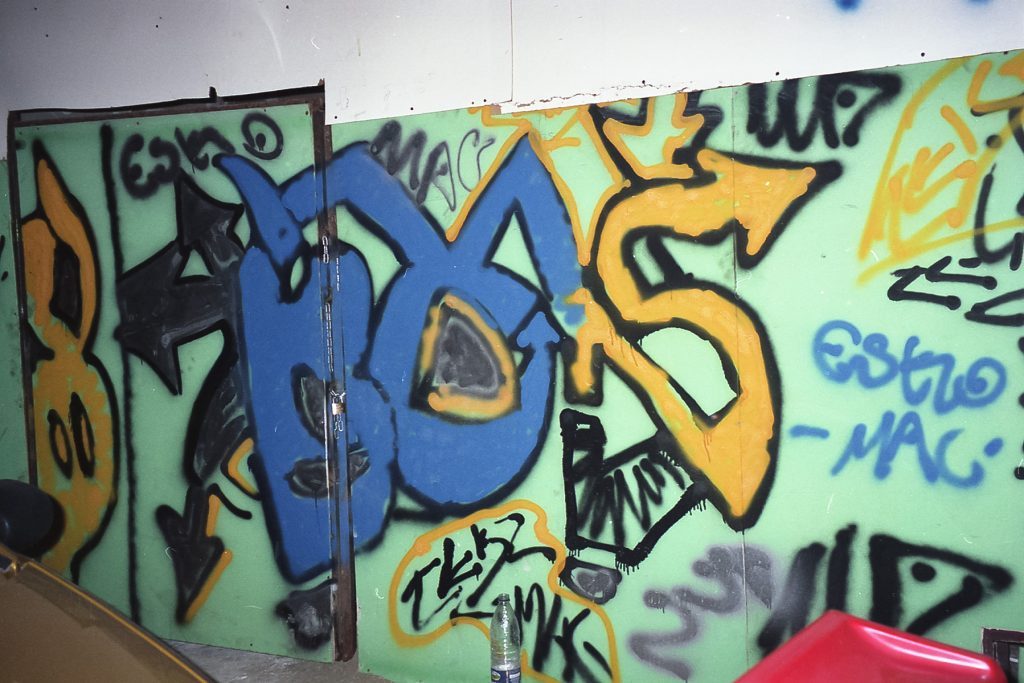
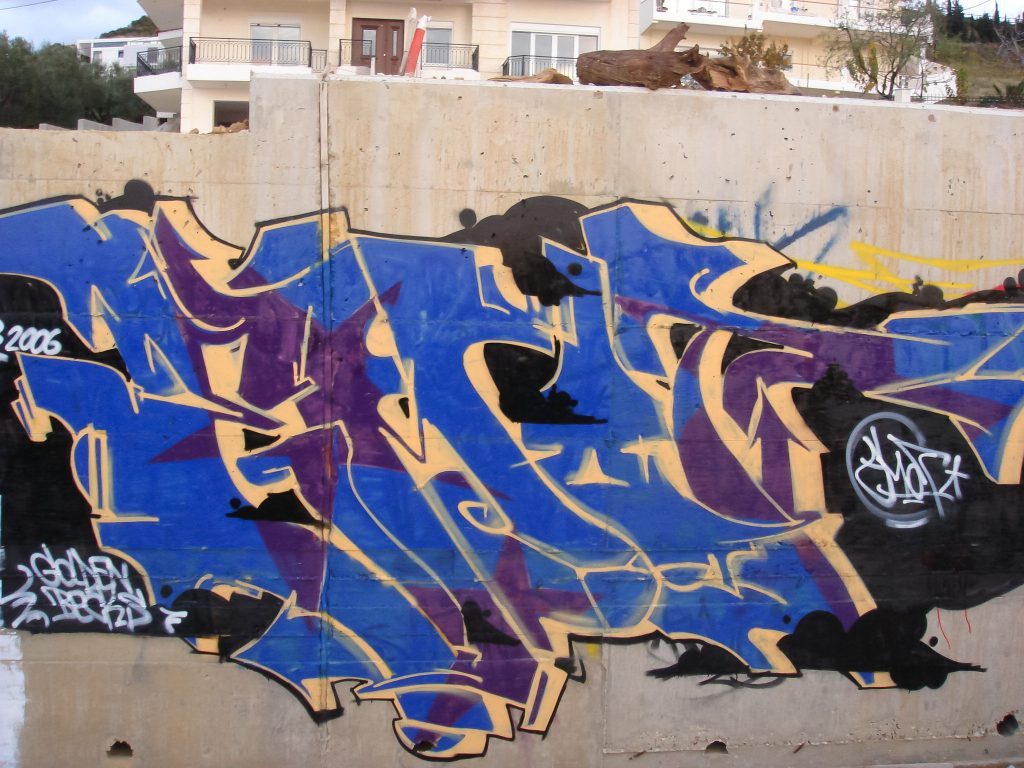
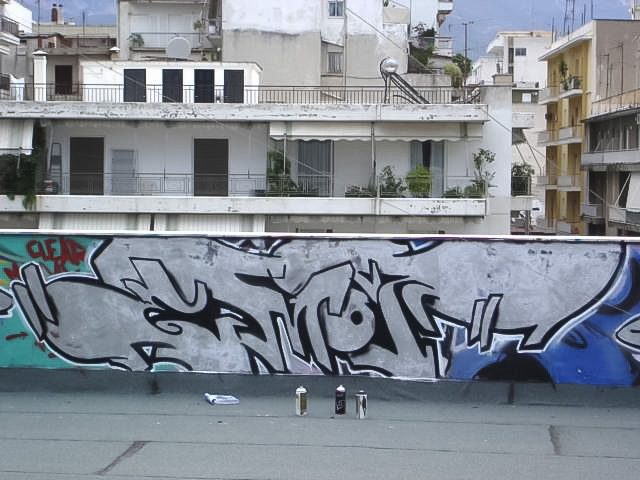
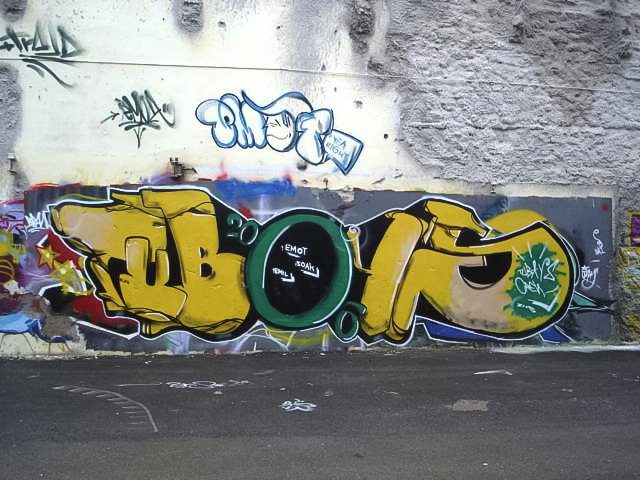
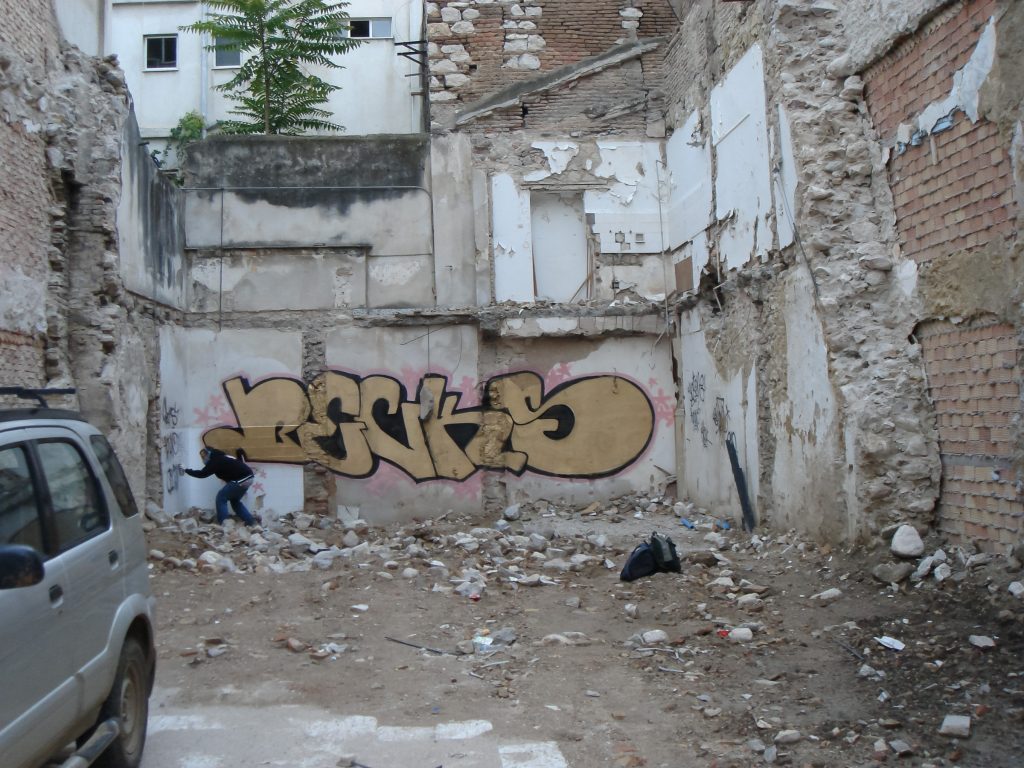
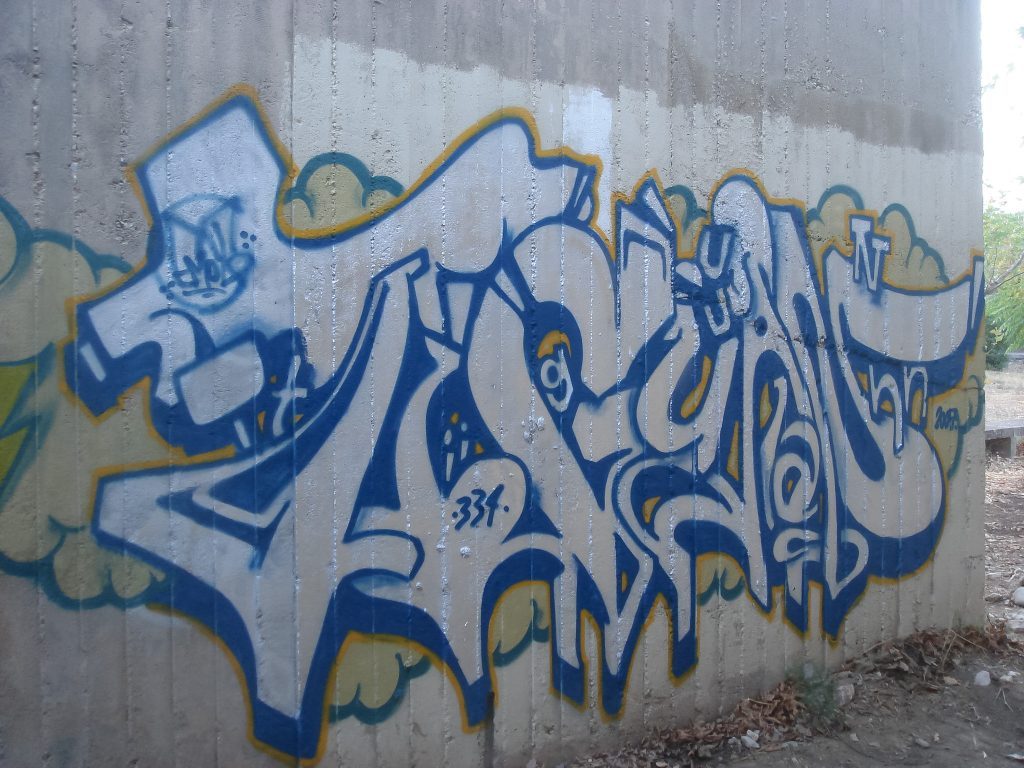
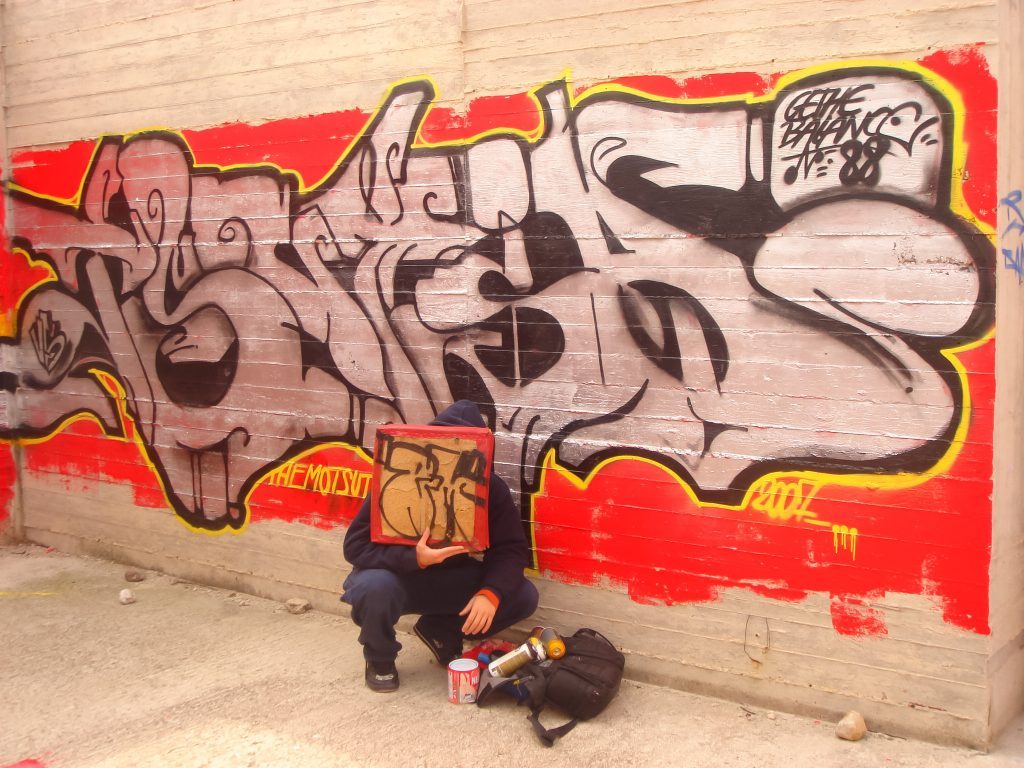
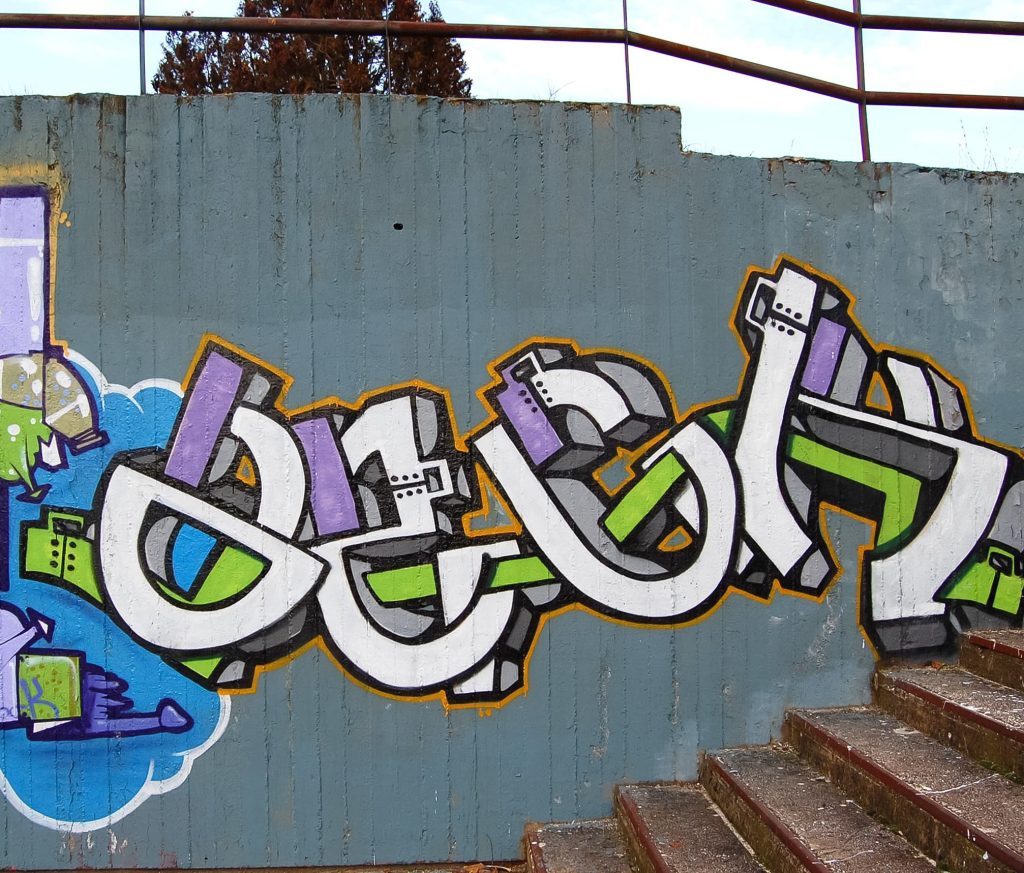
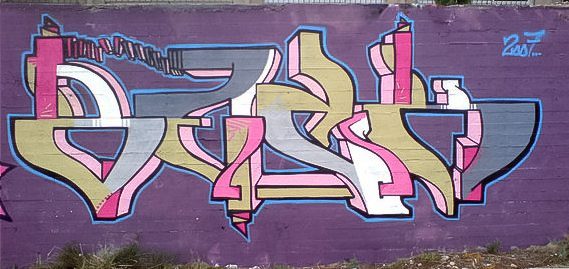
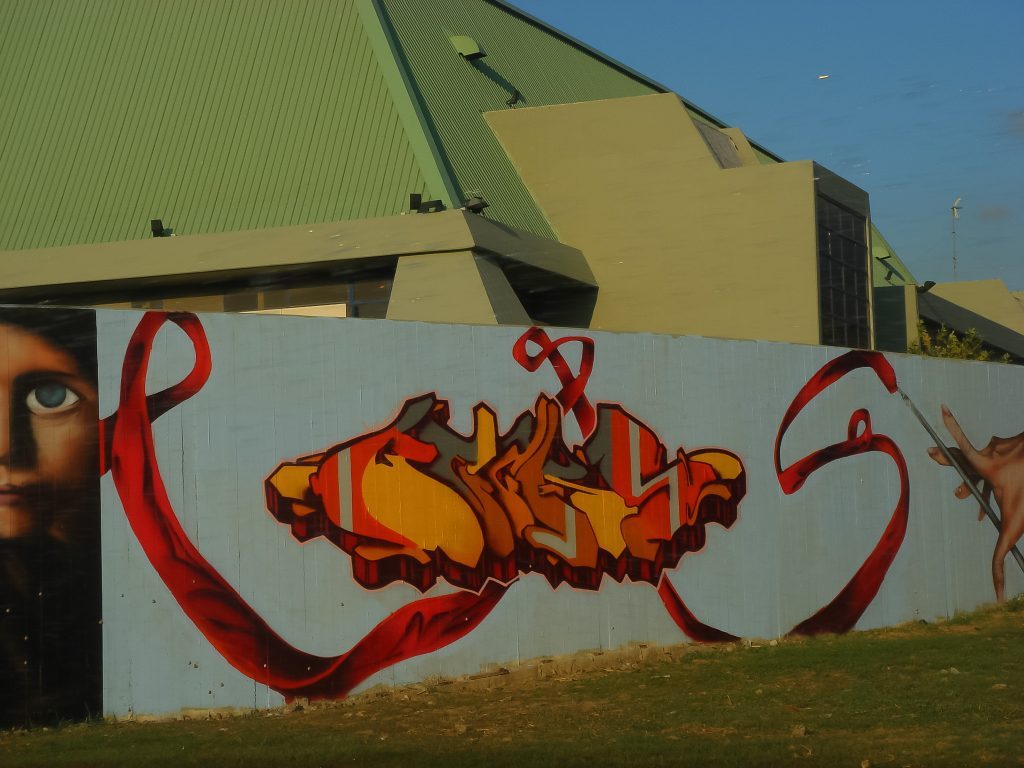
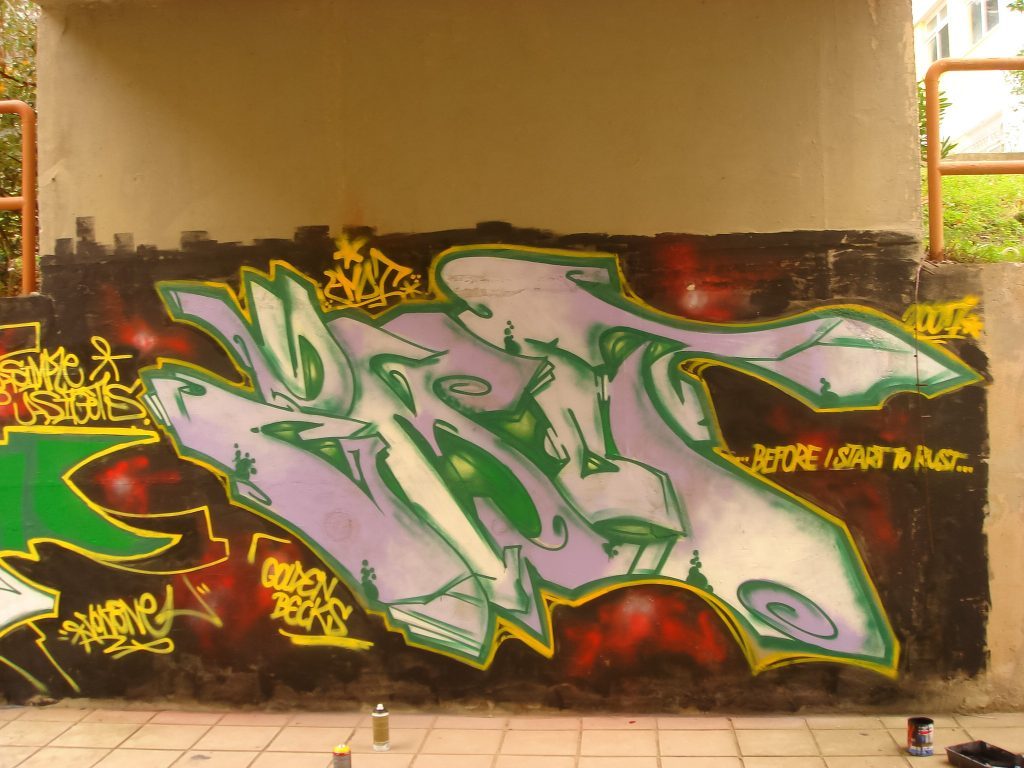
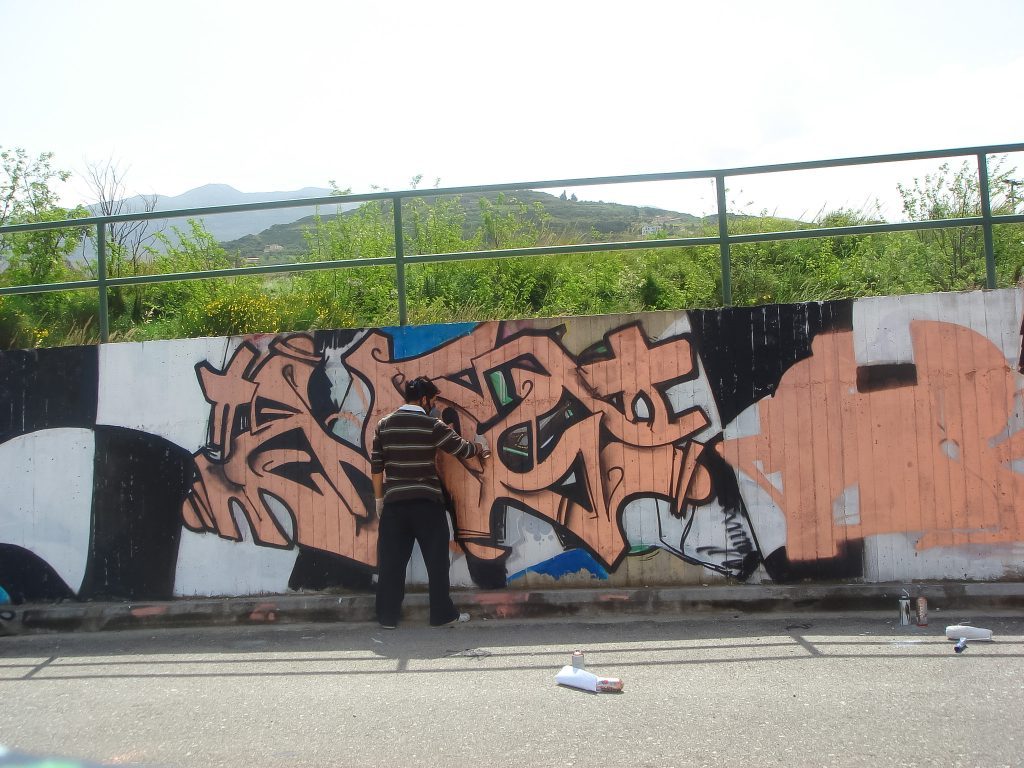
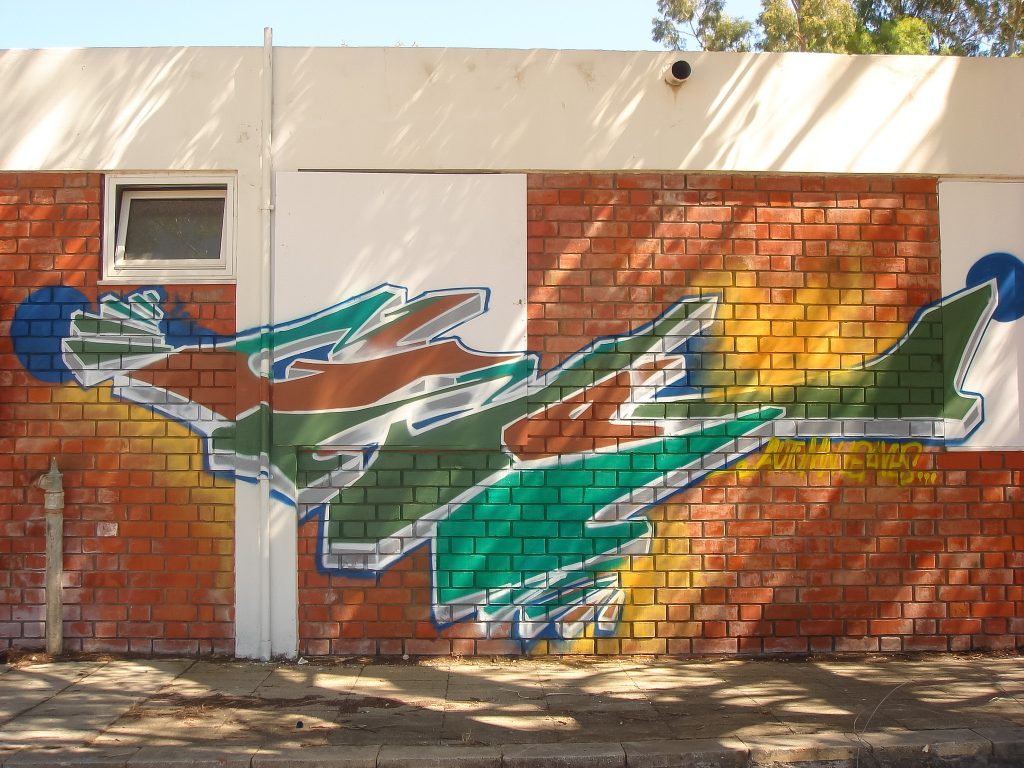
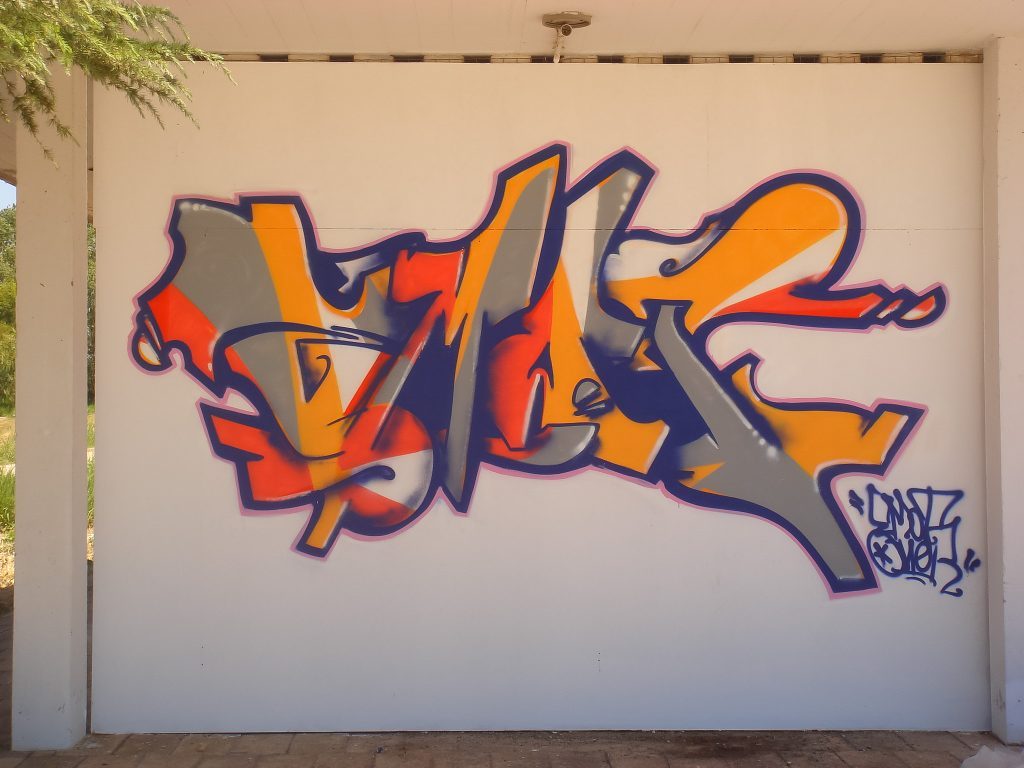

Sources of inspiration
The Greek artist has various sources of inspiration besides style writing. Comics have been a great influence on him, especially concerning the colors and forms. Moebius will always be an inspiration for him, according to the artist. When BILOS worked on a portfolio in 2009, he was intensively concerned with modern art discovering many modern painters, which have a lasting impression on him. Movements like Art Brut, Surrealism and Dadaism, painters like Matisse, Miró, Dubuffet, Dali and Magritte which go beyond the ordinary and create their own worlds inspires BILOS til today. Pop Art and Psychedelic Art as well. Even architecture has an impact on his work. Brutalism is for him at the top and according to BILOS, it combines certain forms, motions, raw and concrete, and can ignite in a graffiti writer’s soul with their heavy design and „vibes like from another world“. In the field of Design, the Memphis Group is one of his favorite designers concerning color schemes and combination of forms. The work by his friends monos.cwtos.studio and silver.formz, members of the OSK crew (Outer Space Kids) in Greece has as lasting impression on him as well. All those different sources of inspiration led BILOS to develop new styles with letters, to reduce elements to reach pure shapes, to abstract letters and to transform them into semi-figurative forms, treating them as „living creatures“.
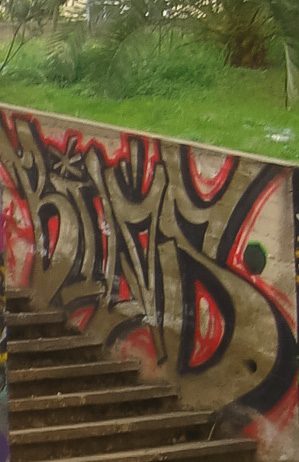
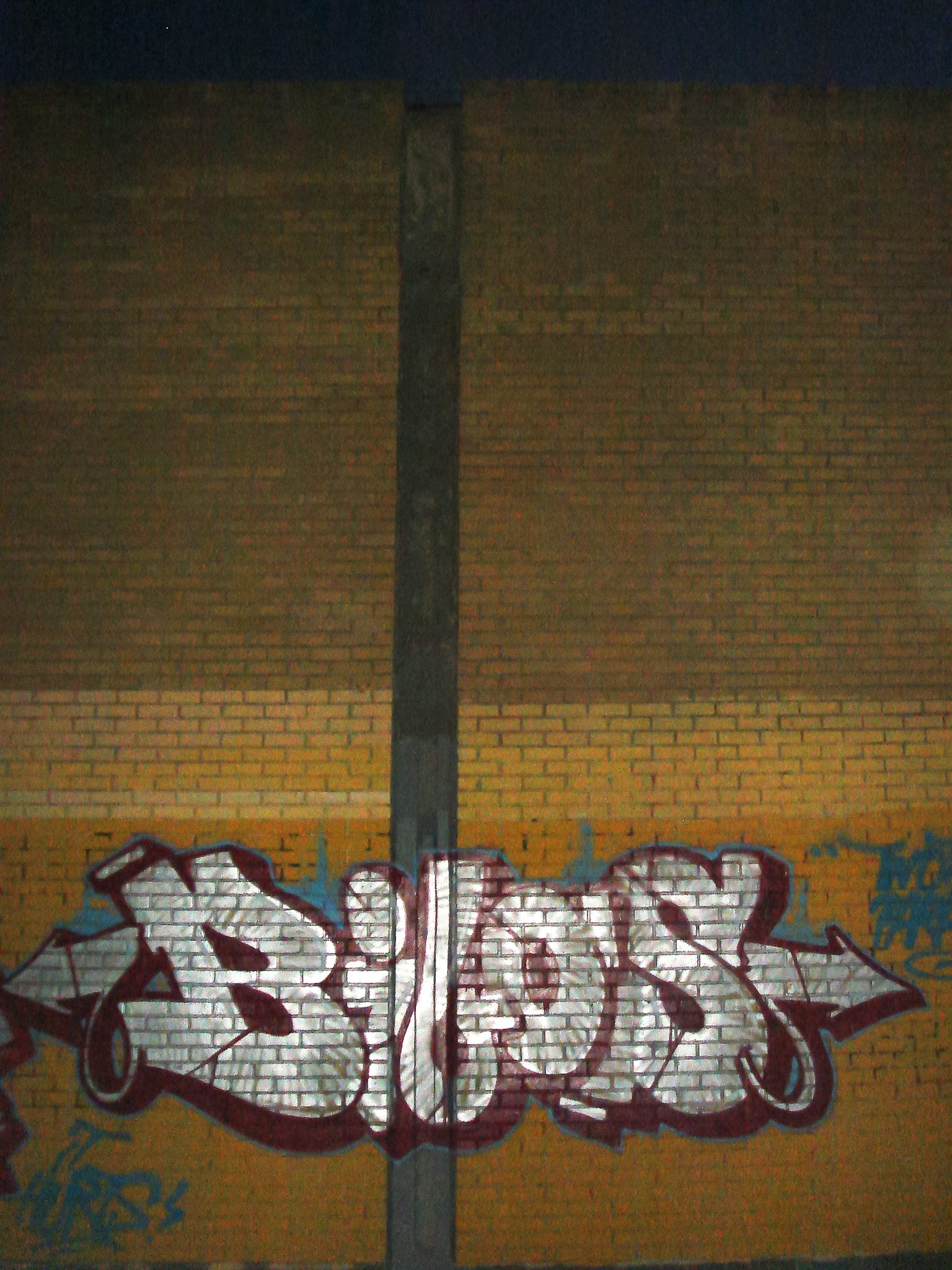


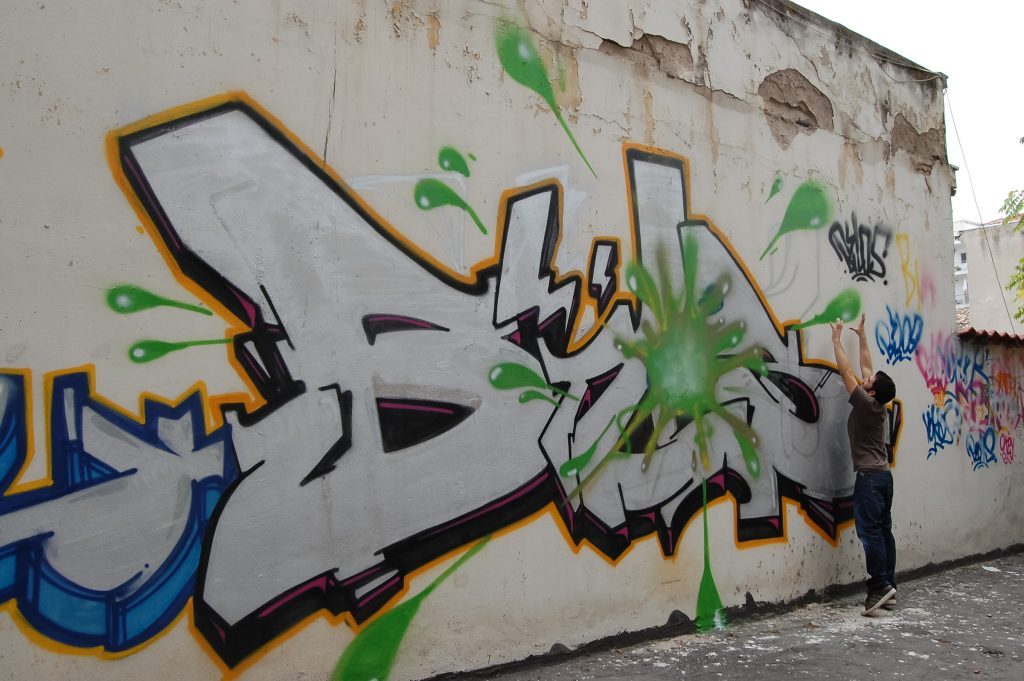
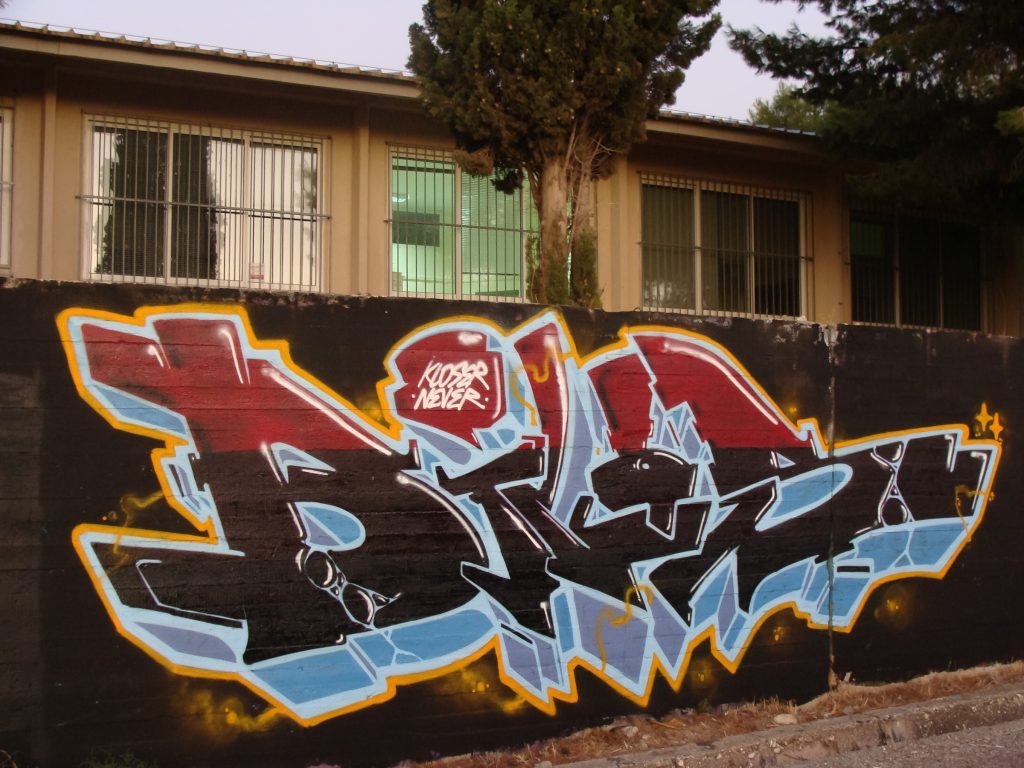



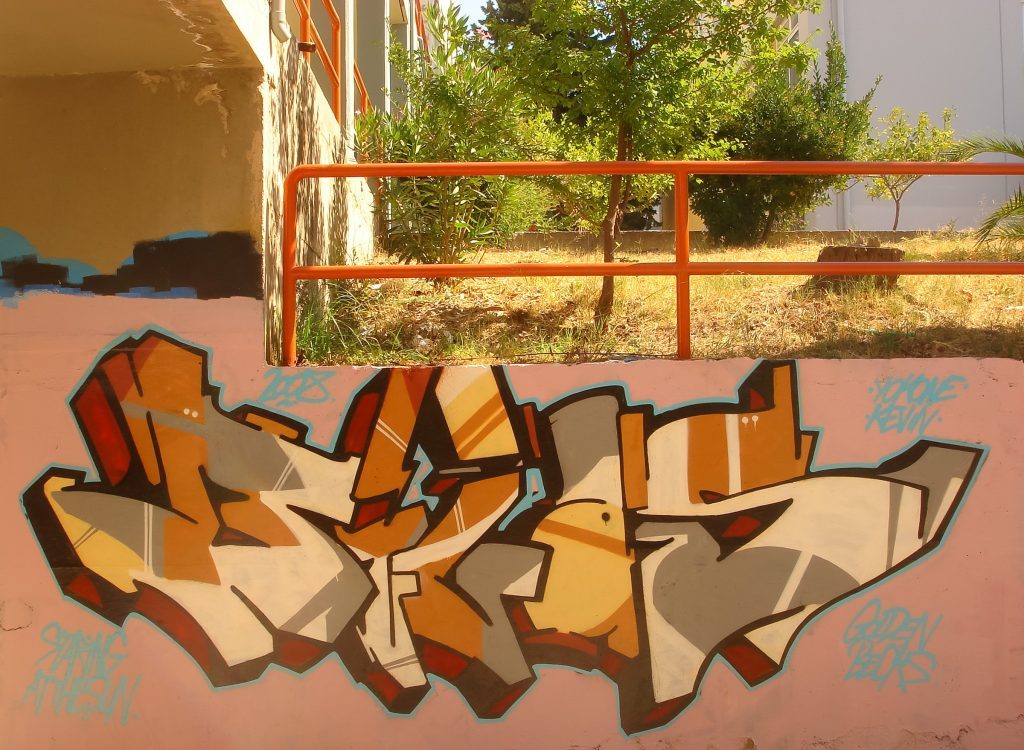


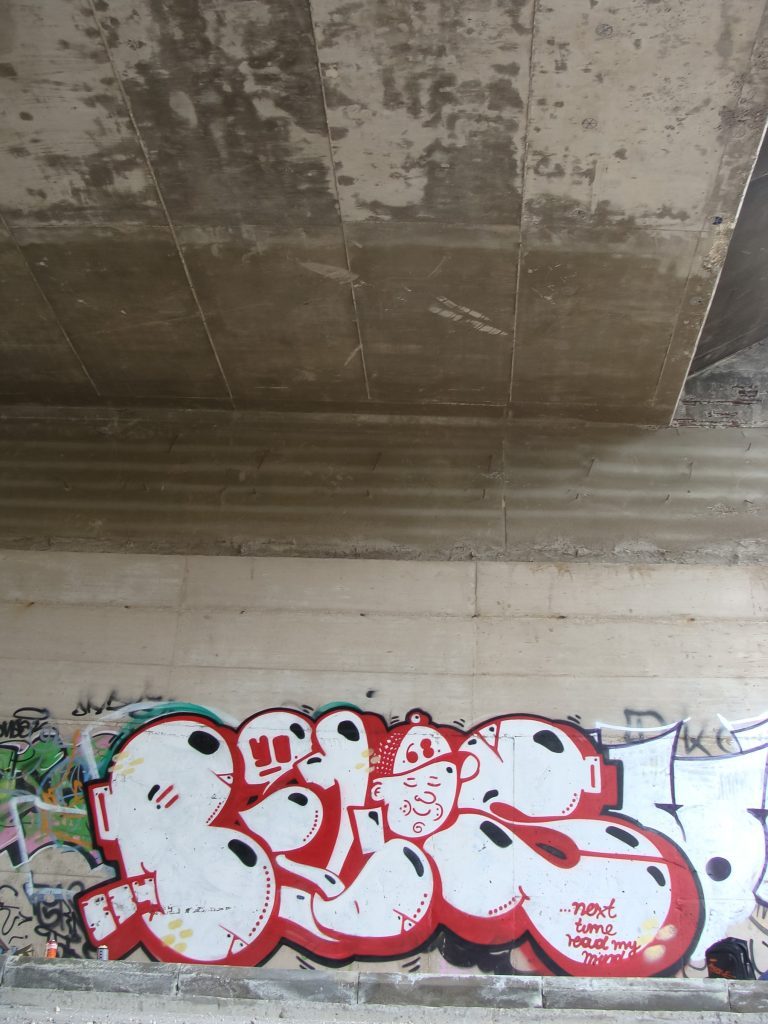
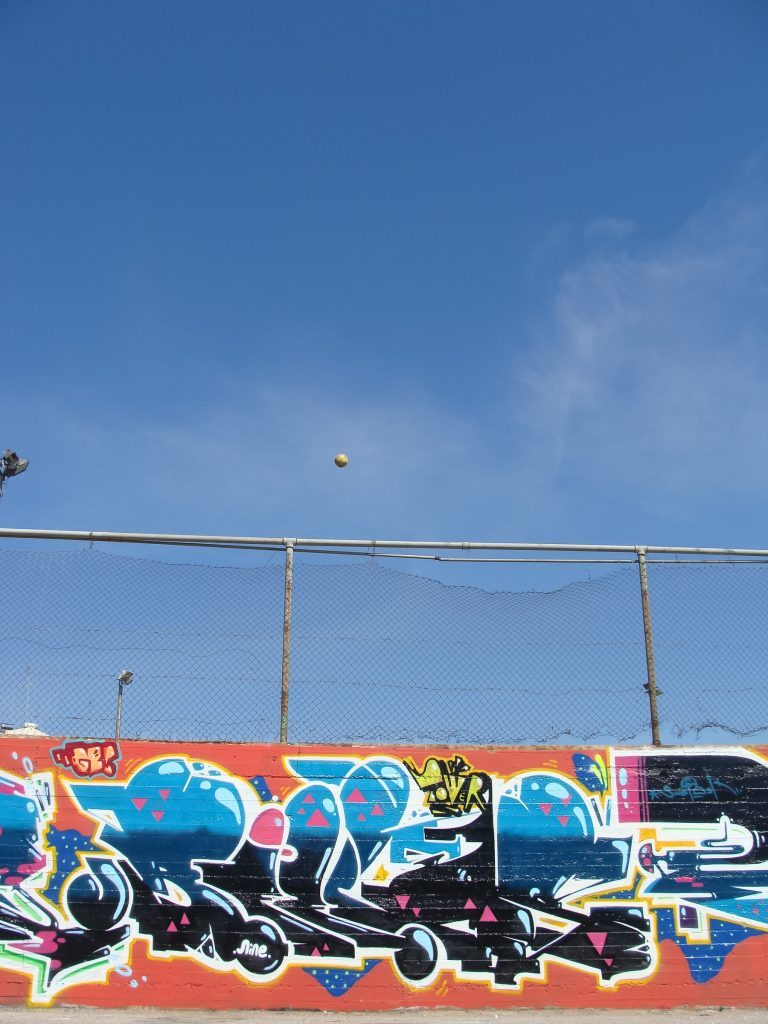

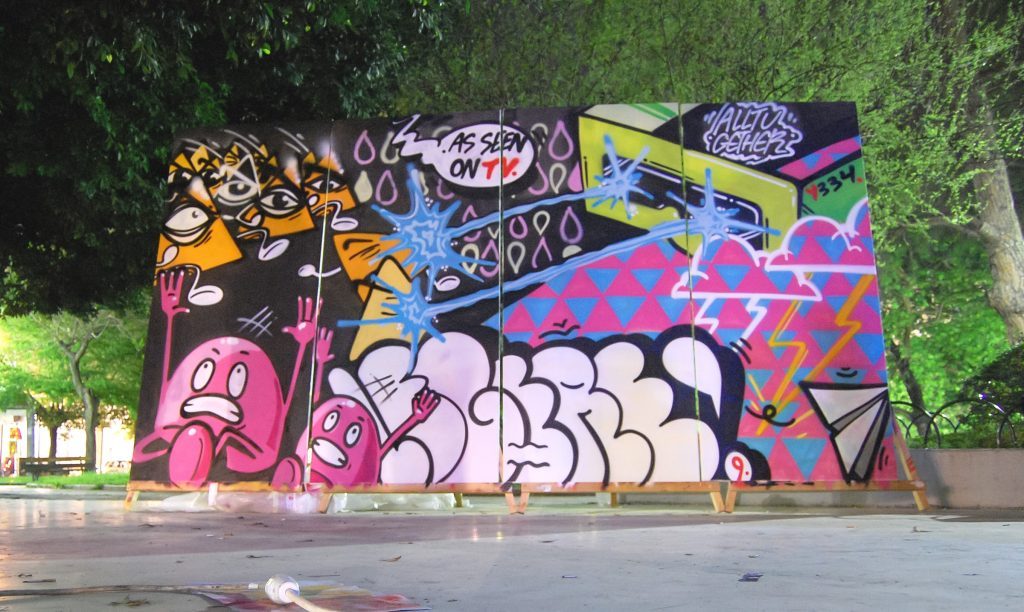
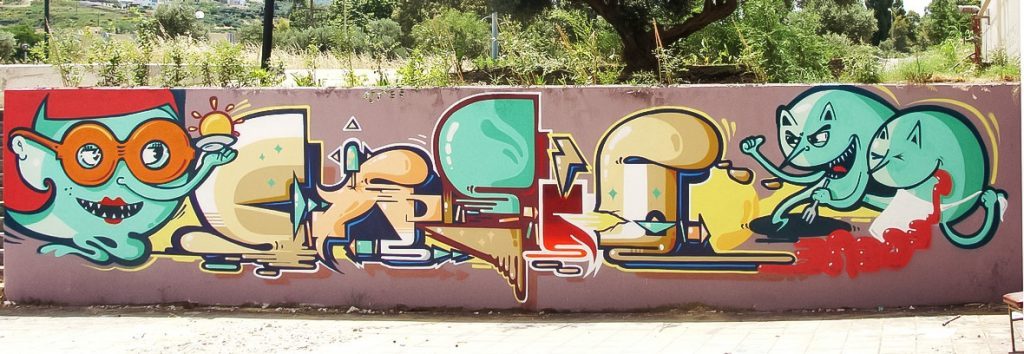
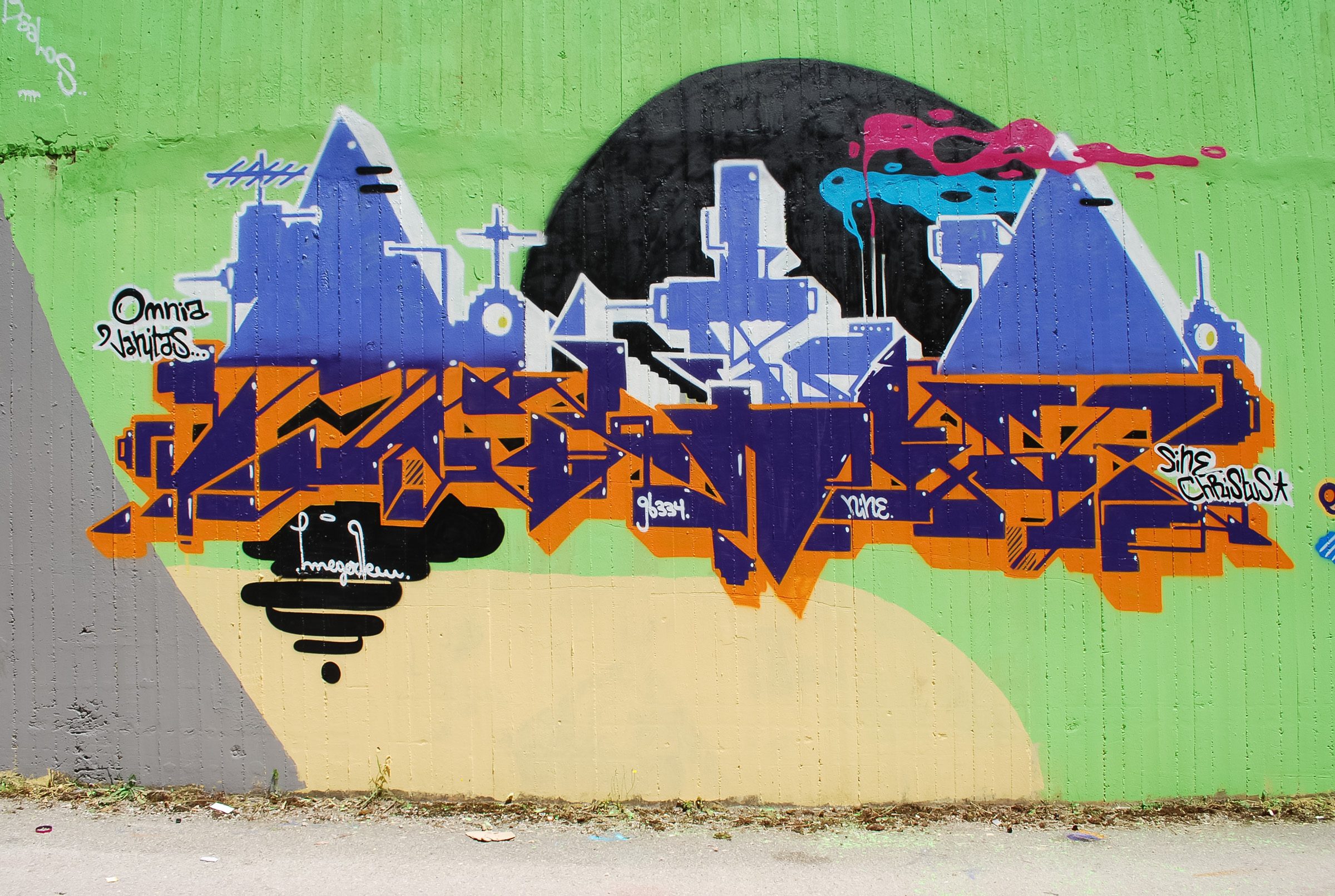
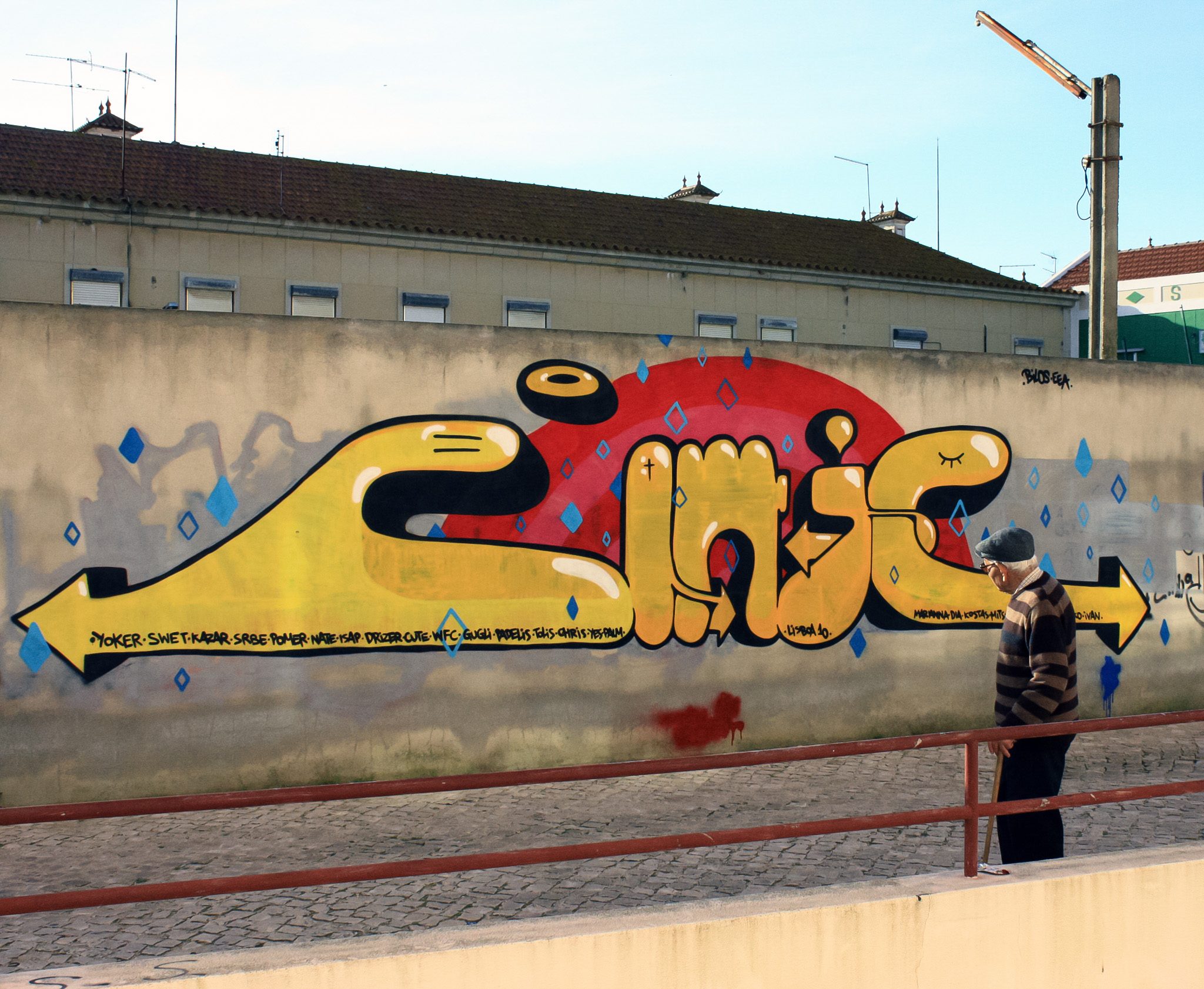
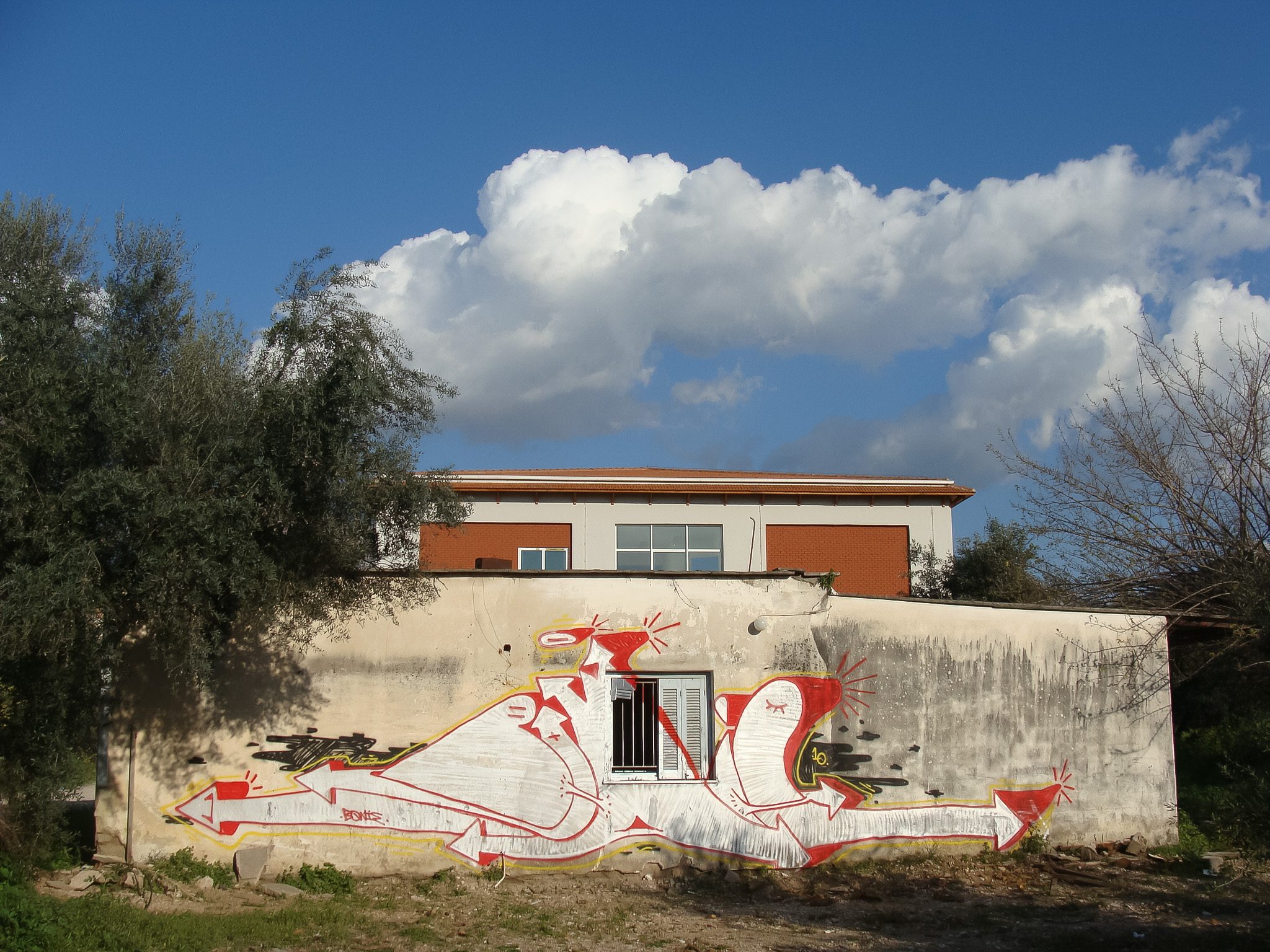
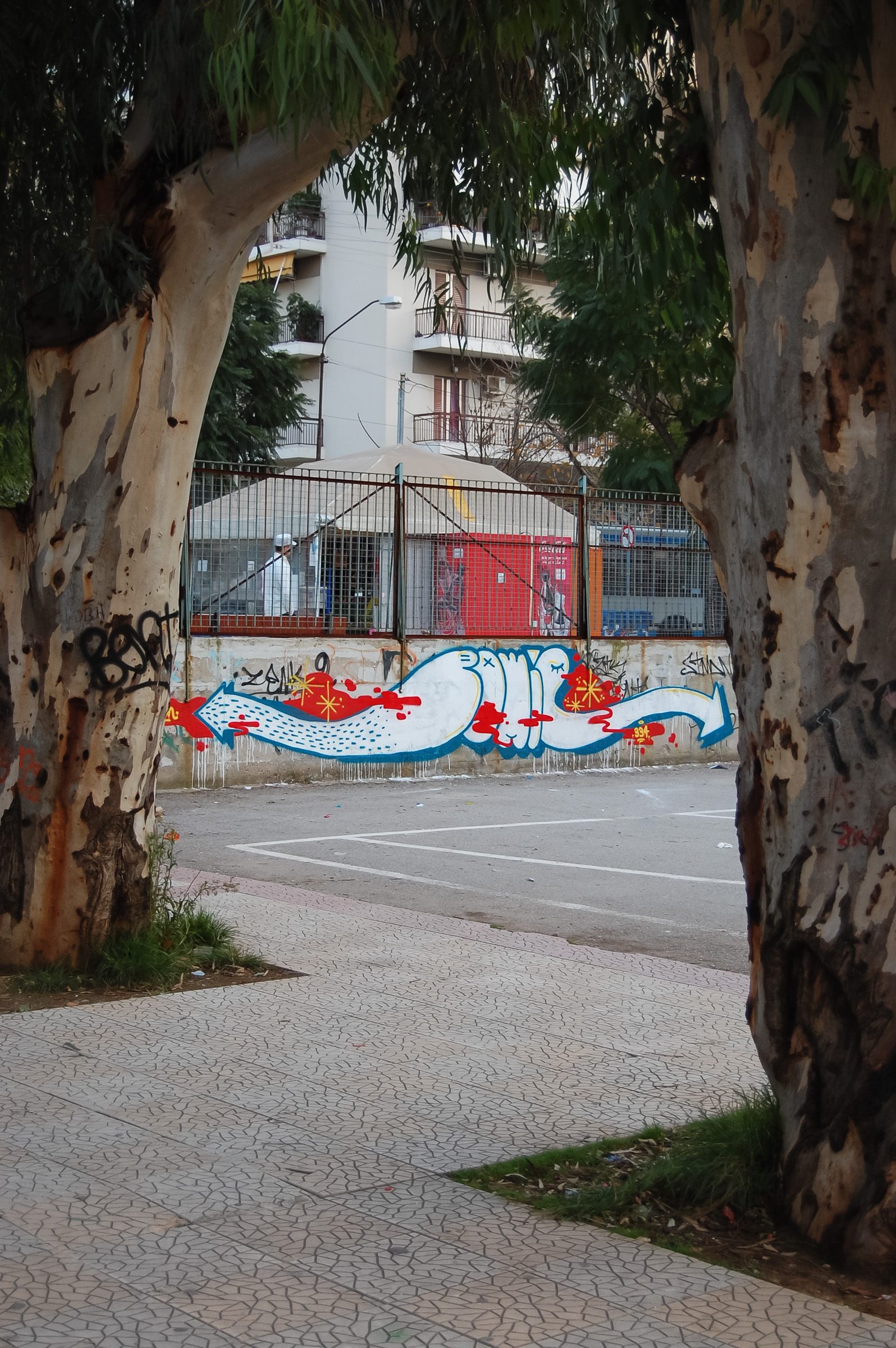
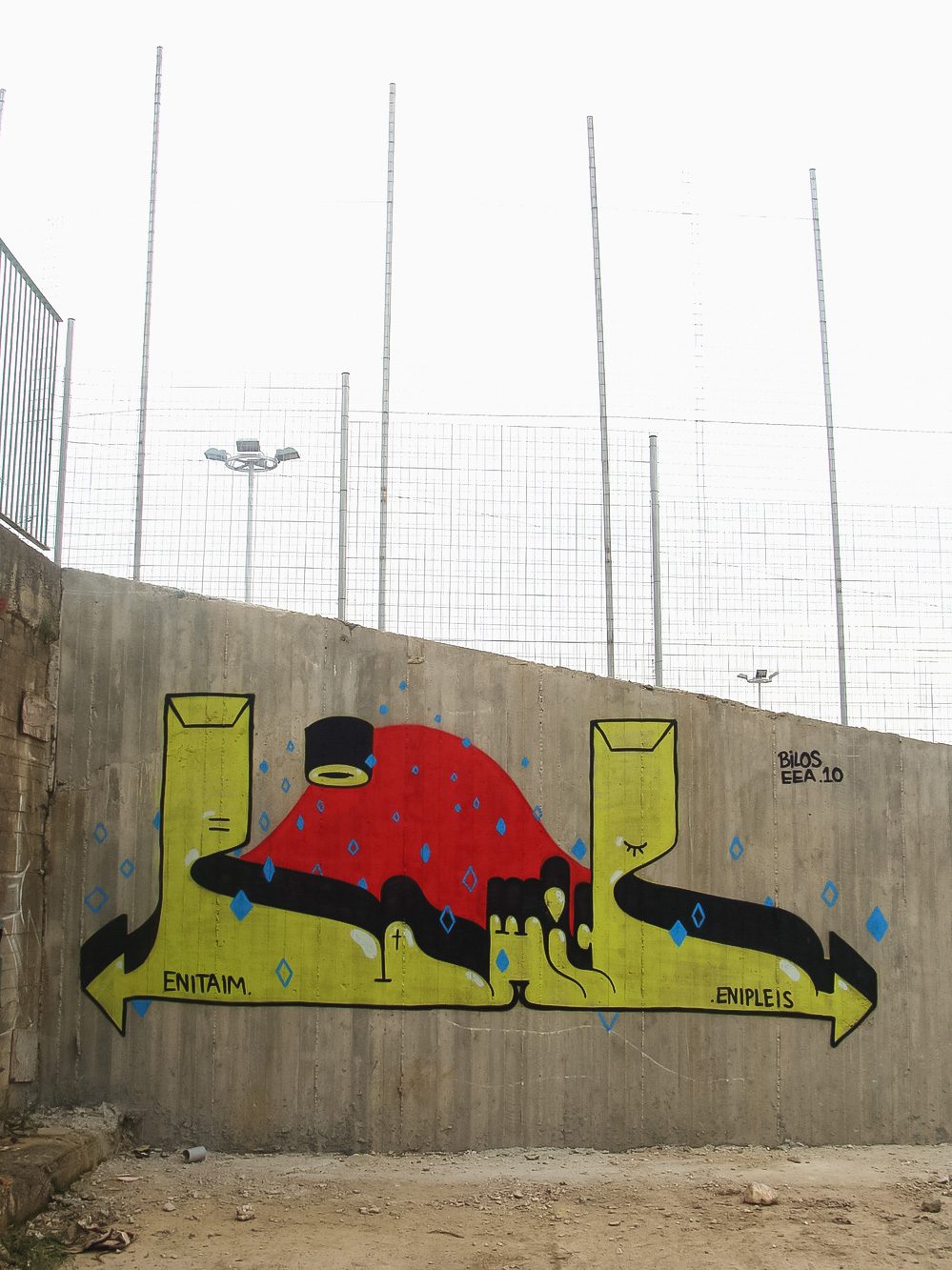
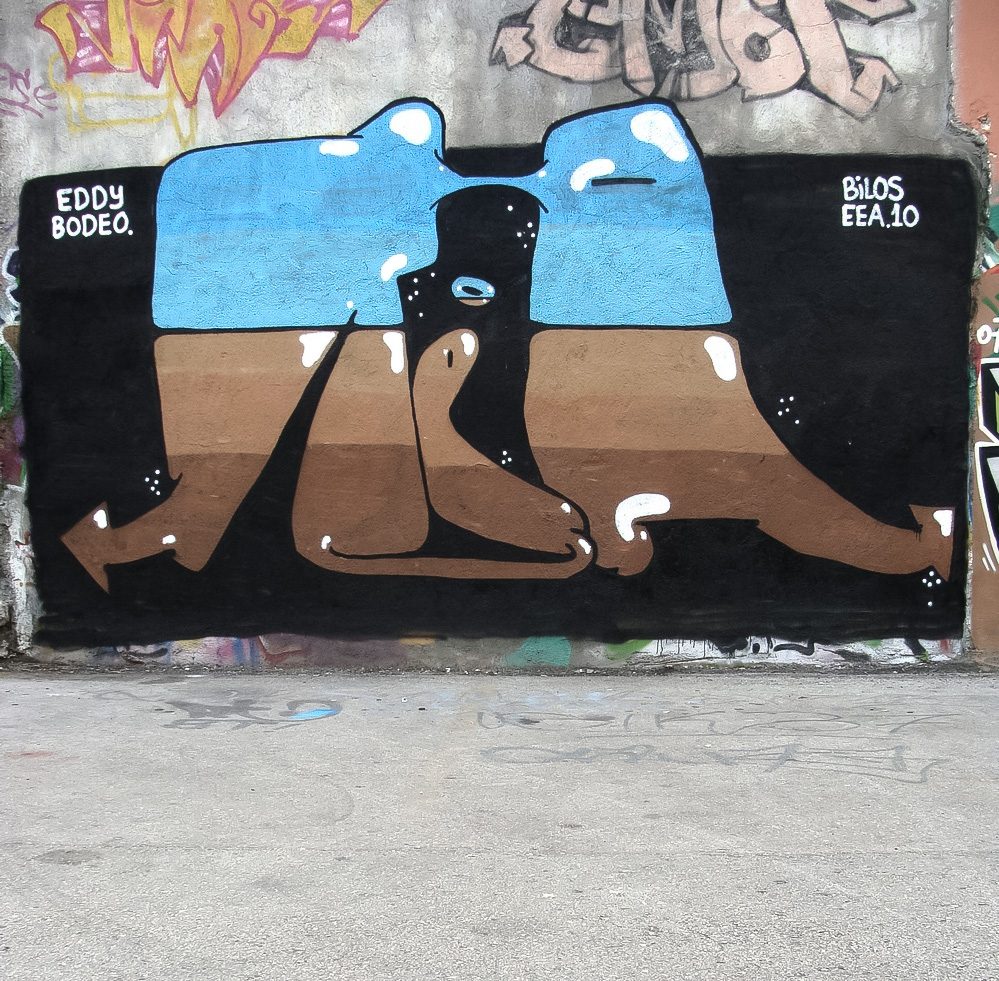
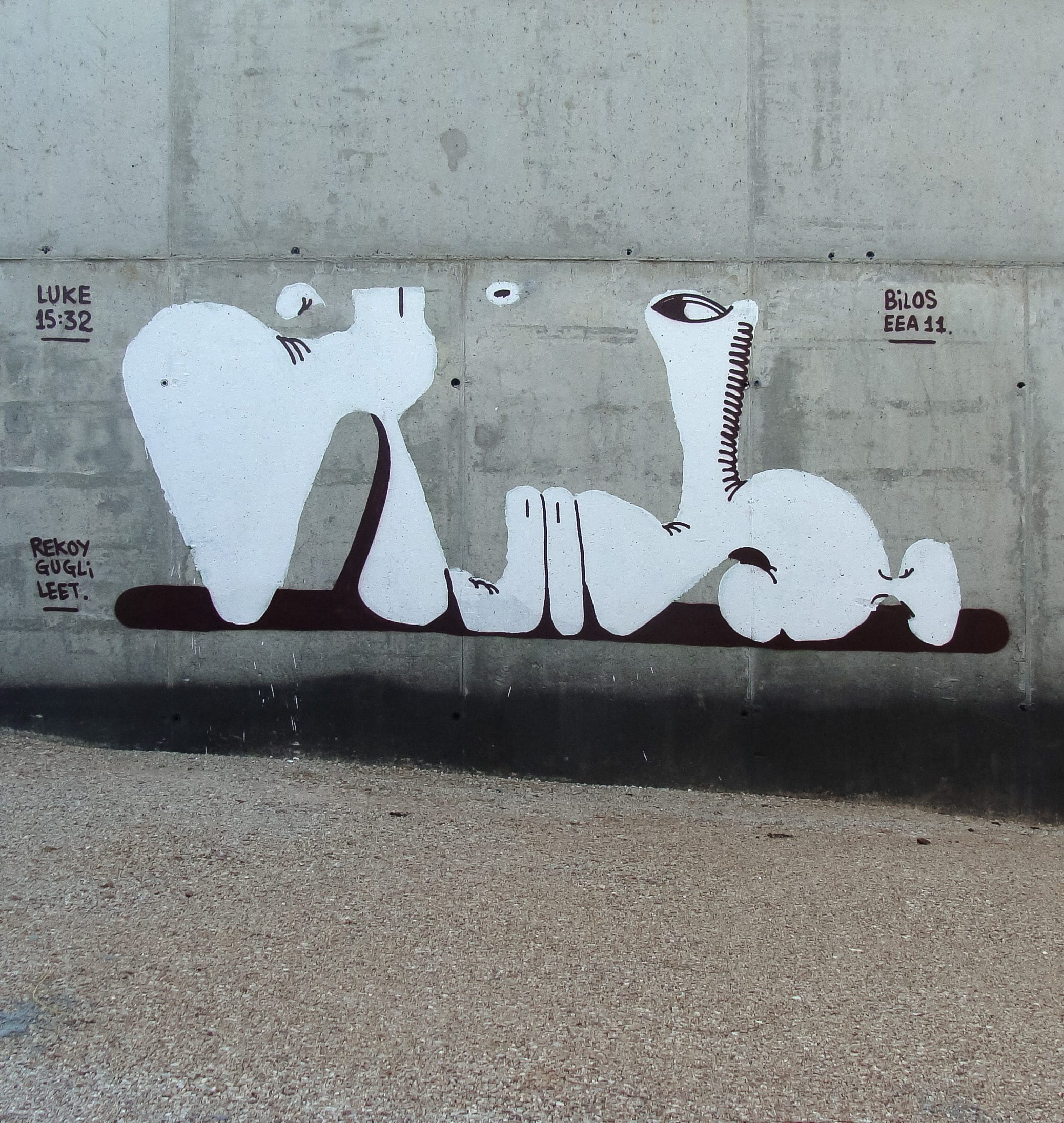
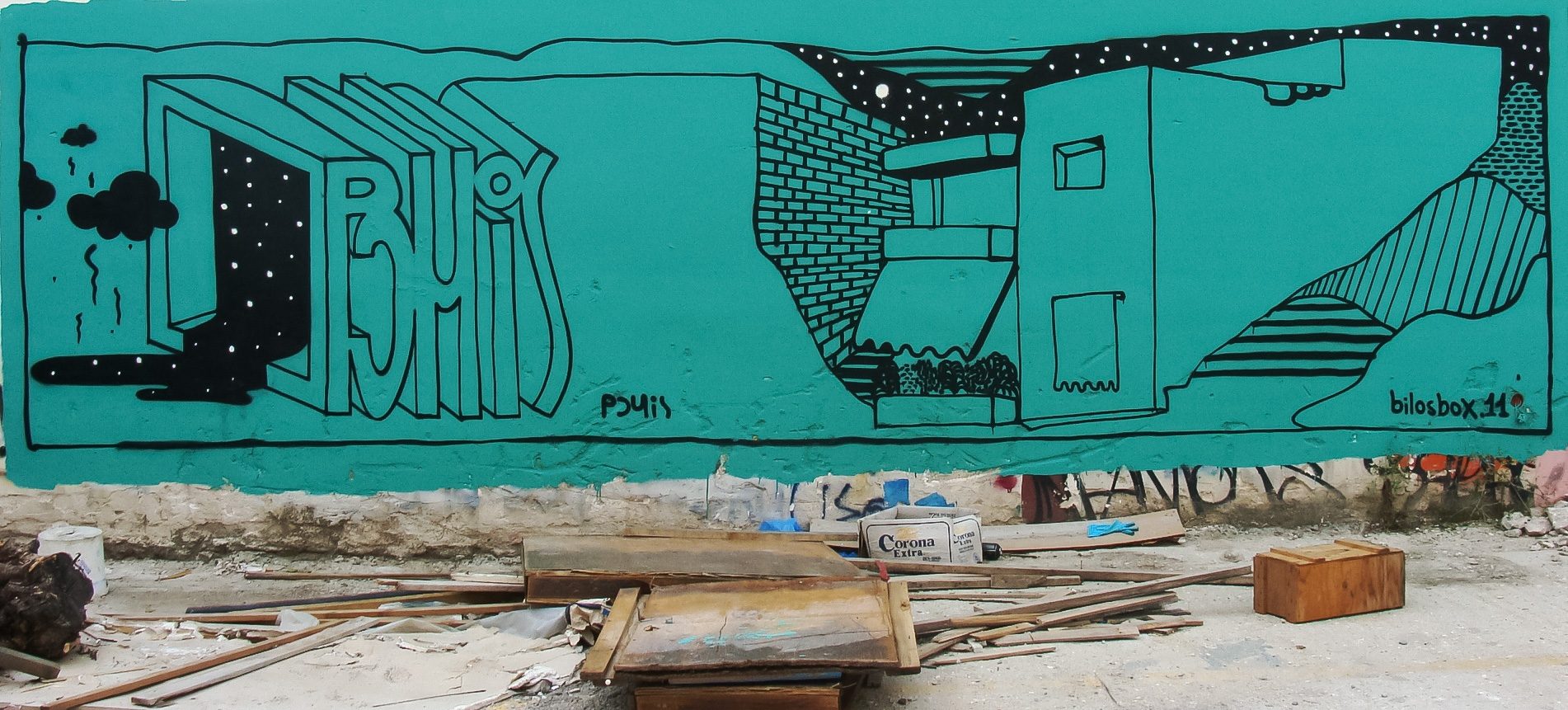
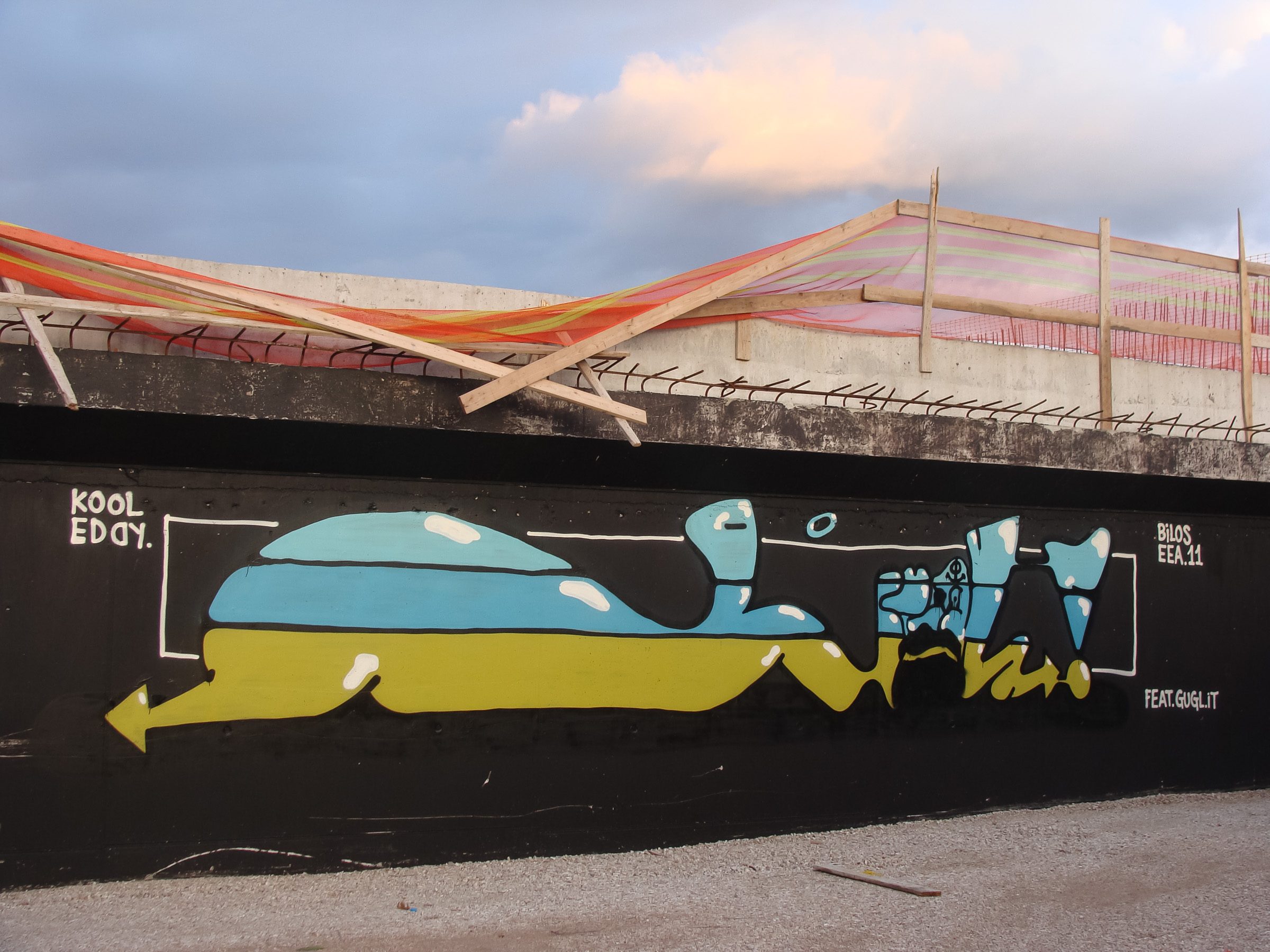
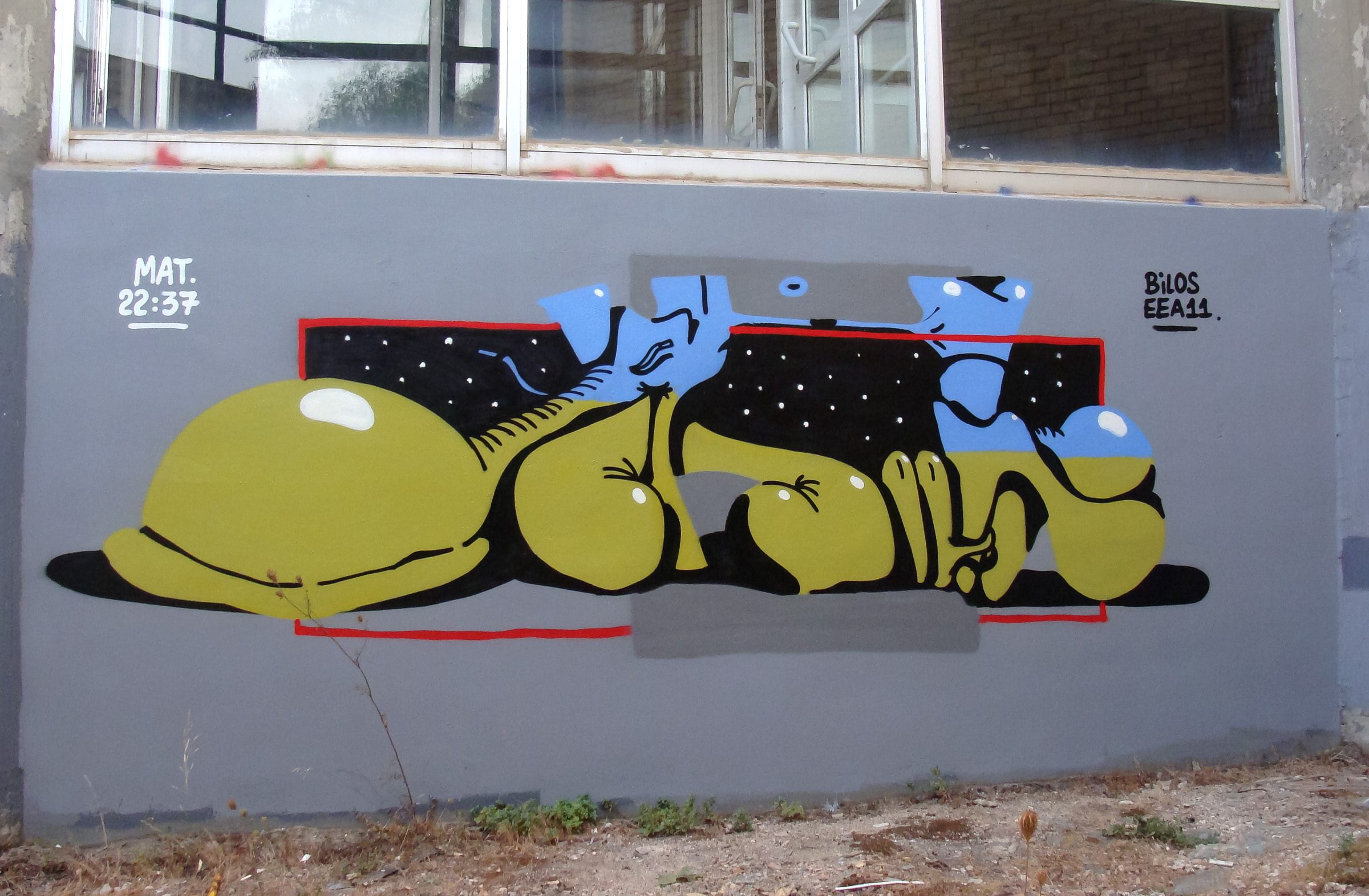
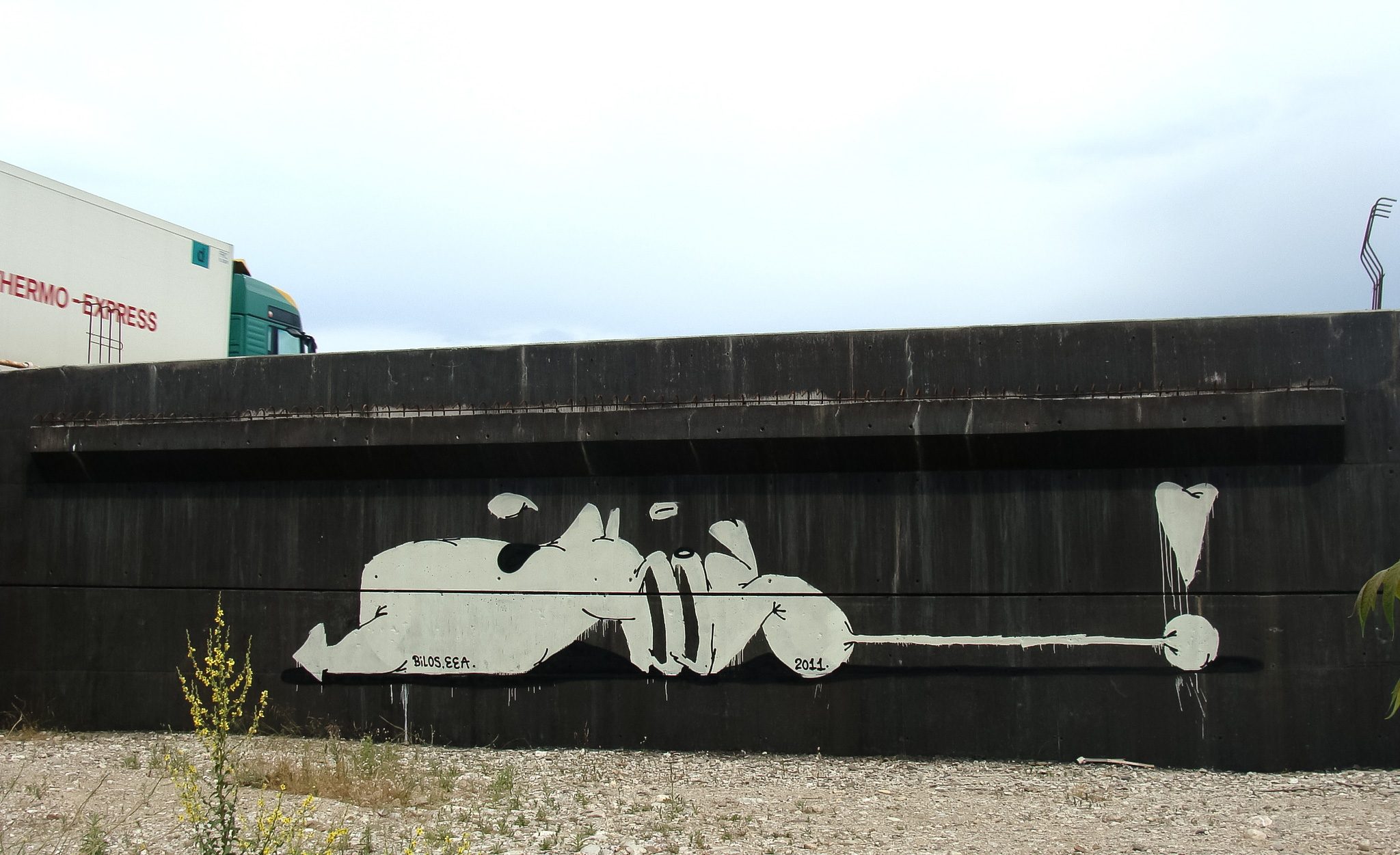
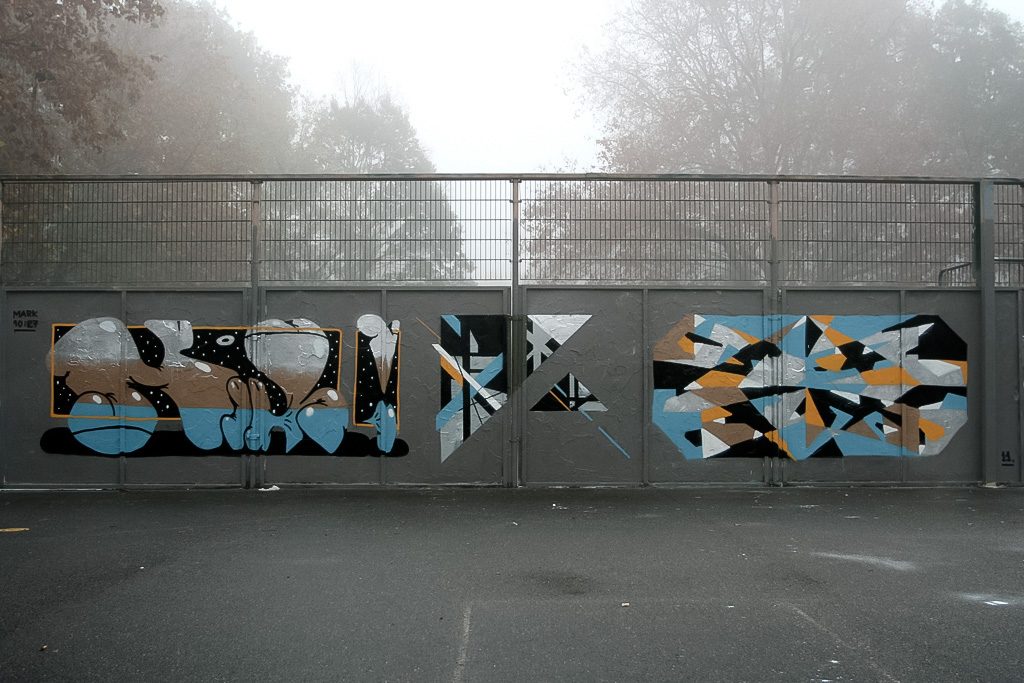
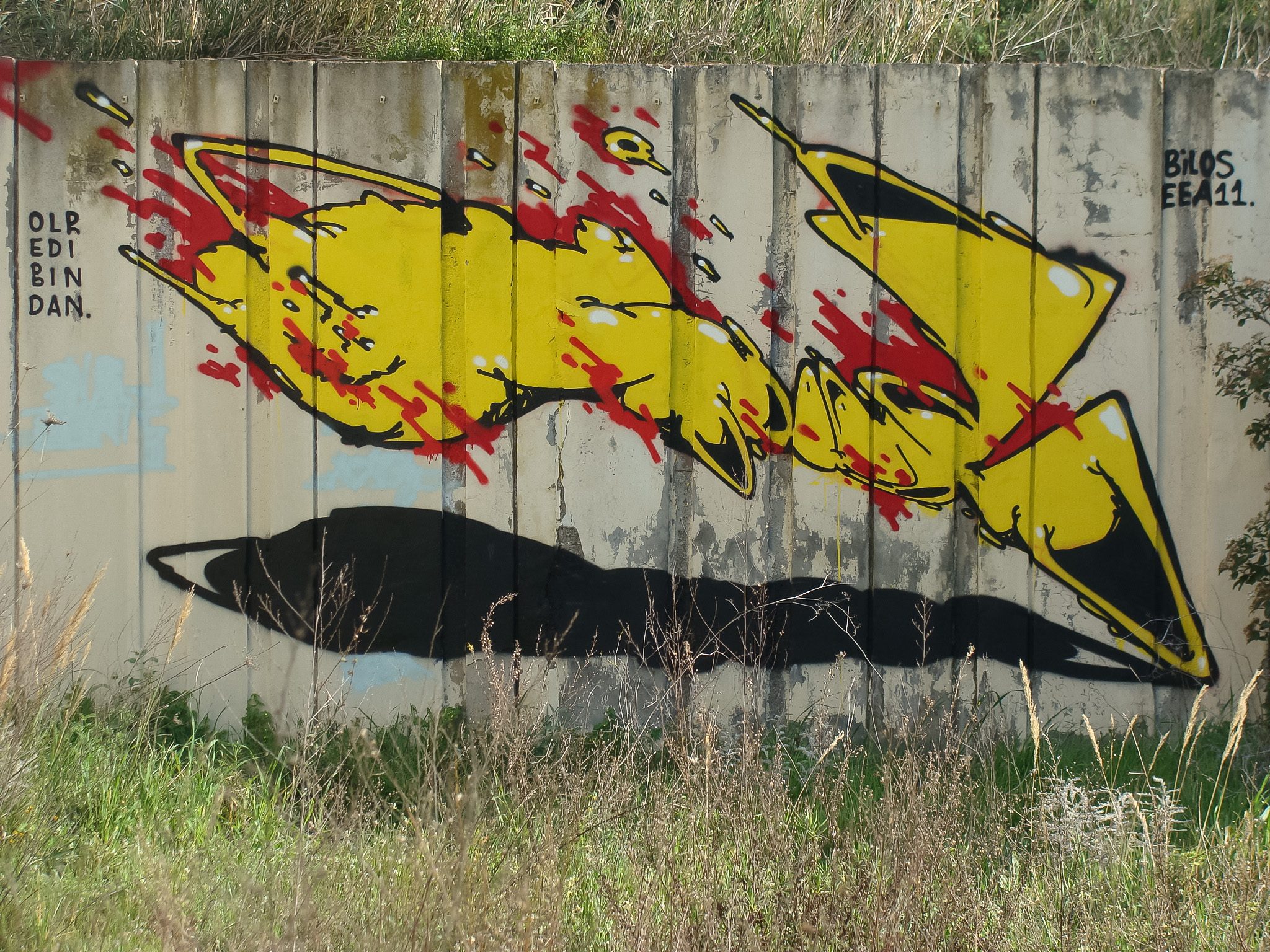
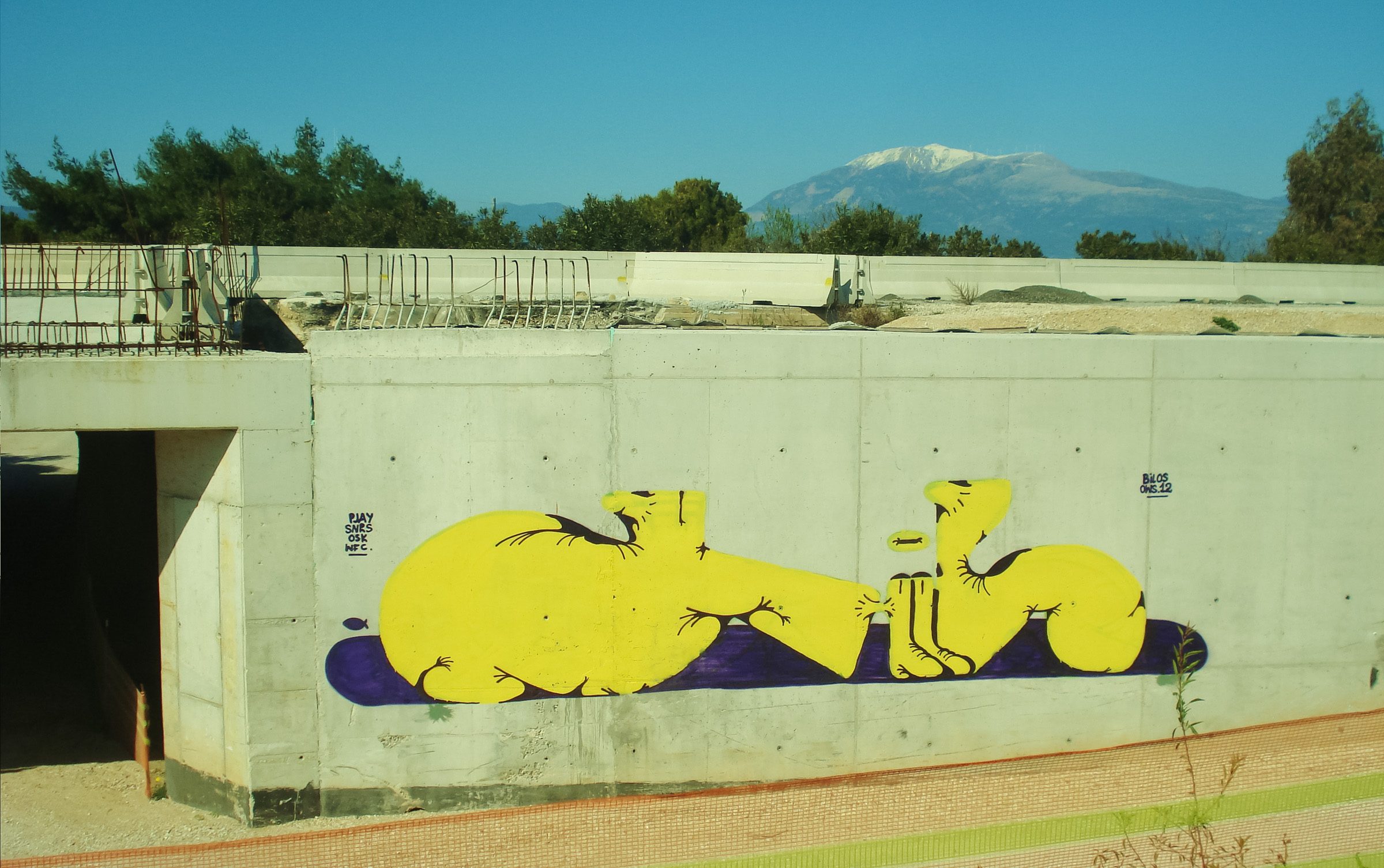
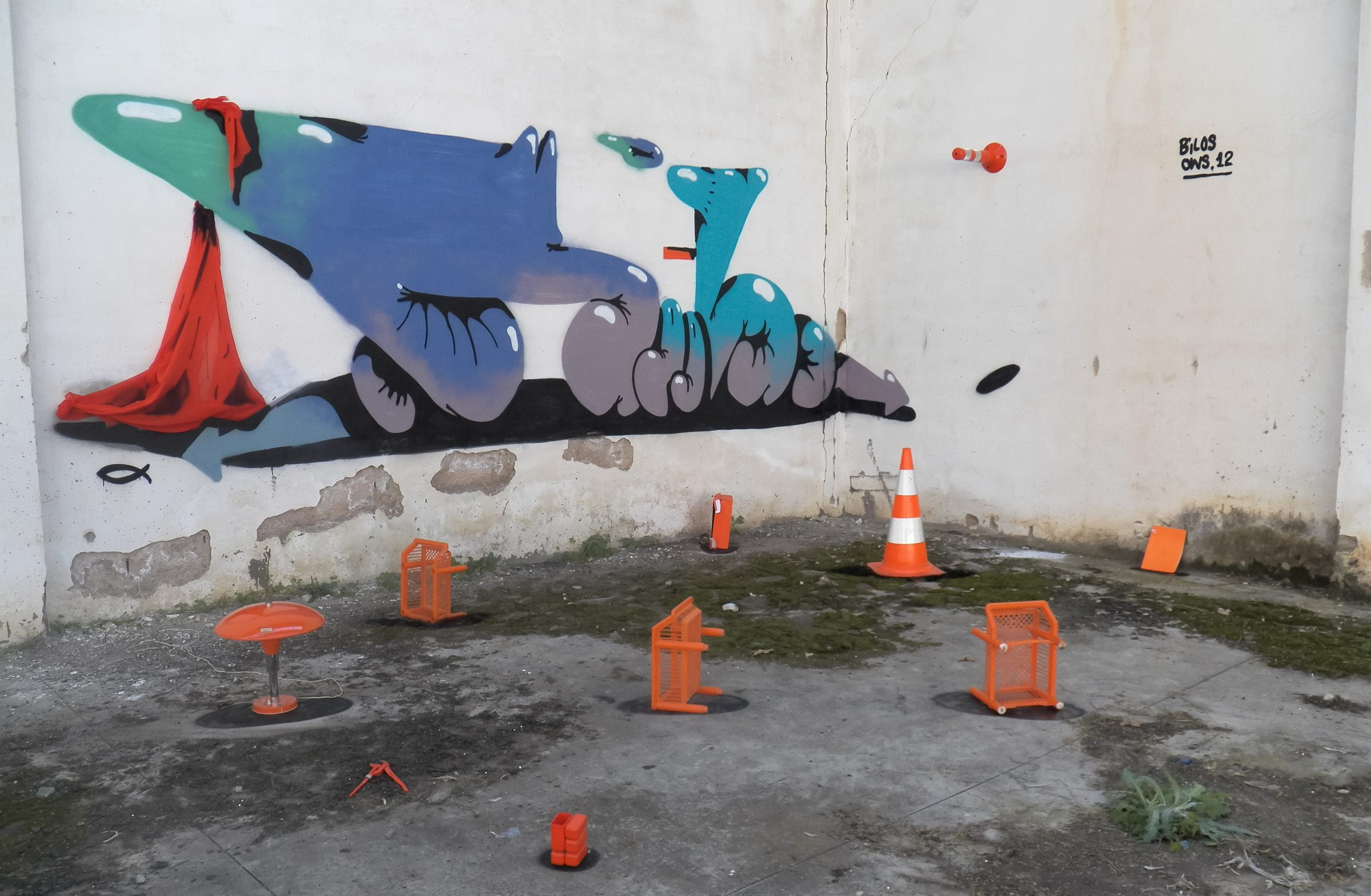
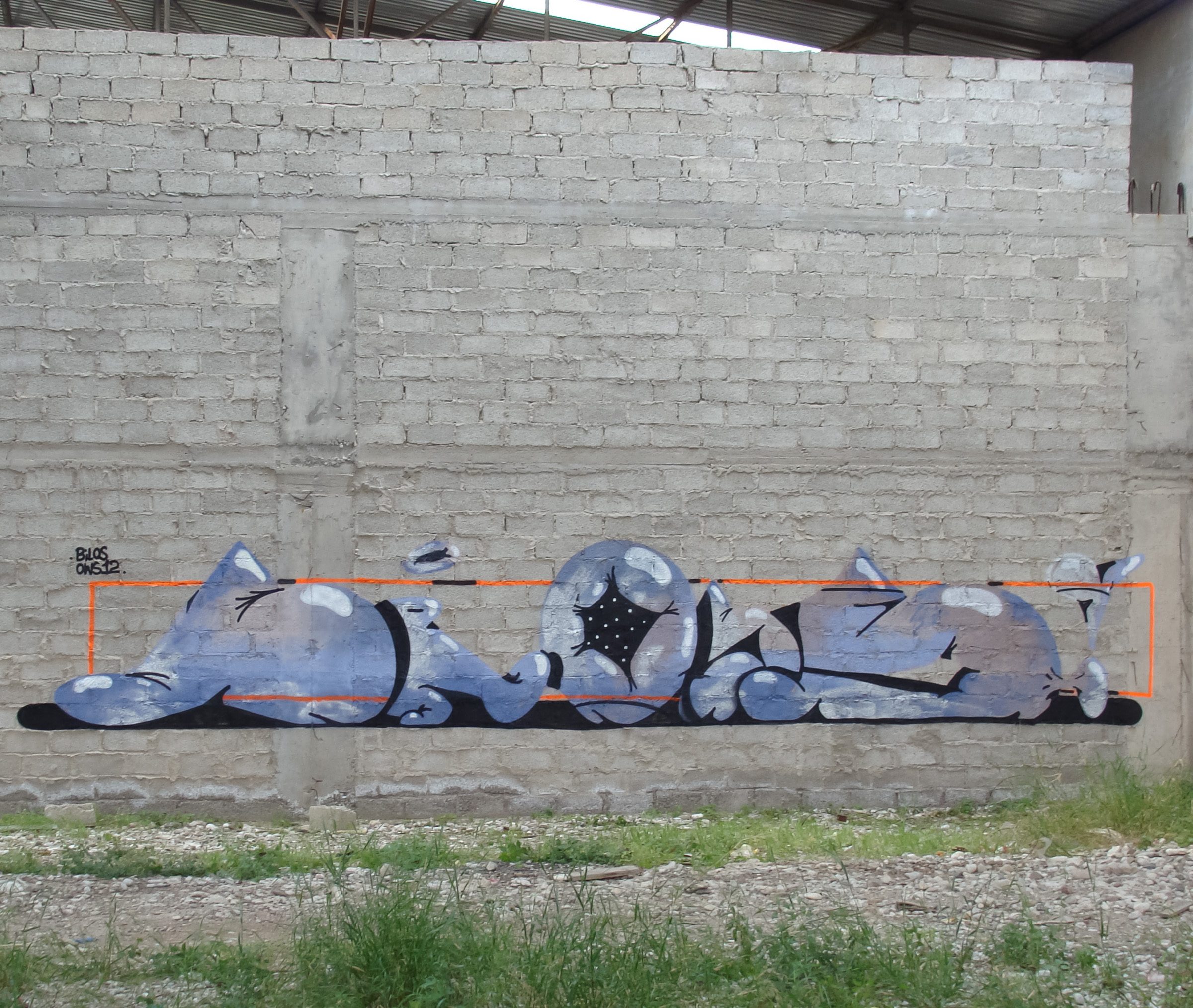
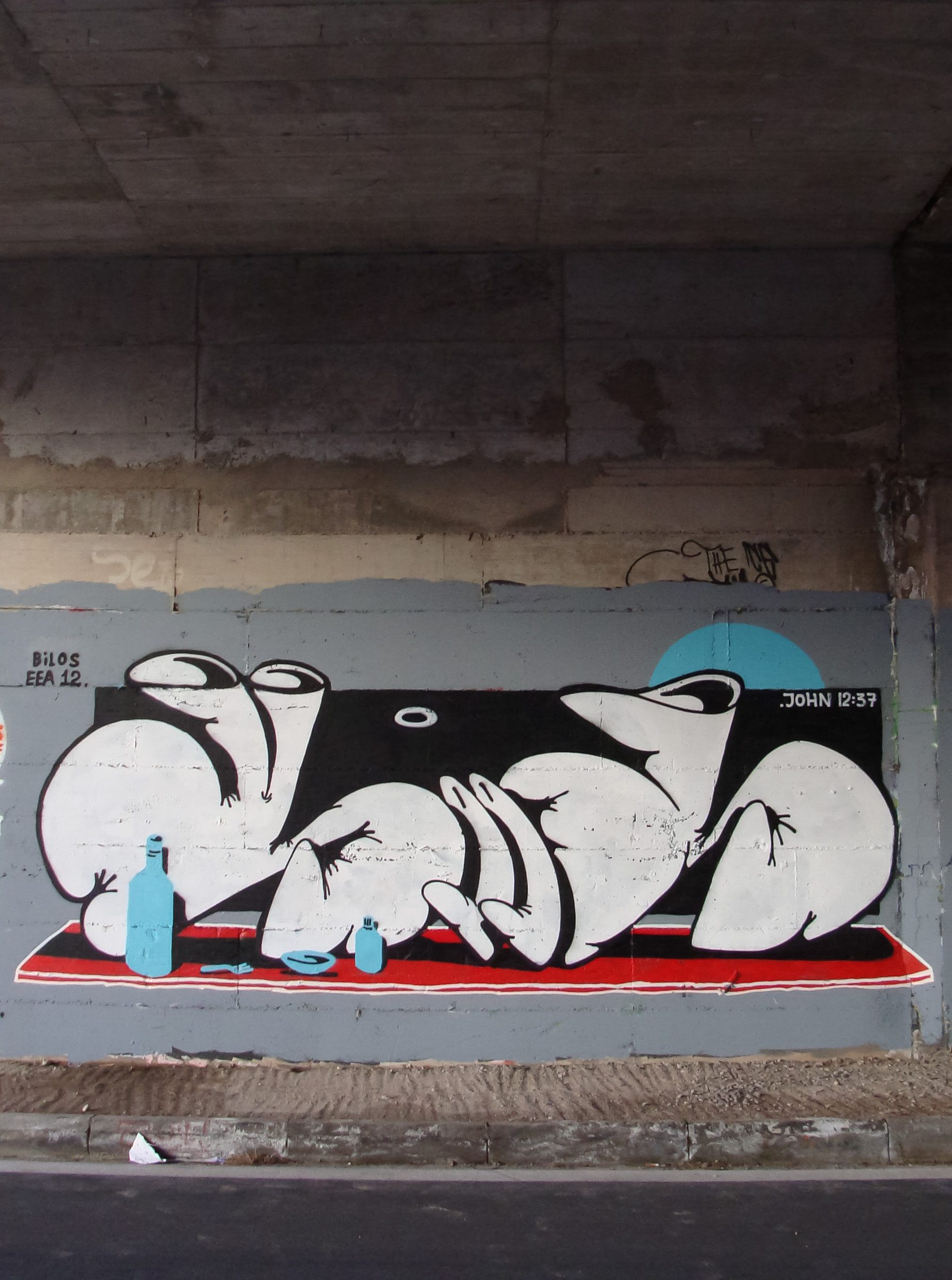
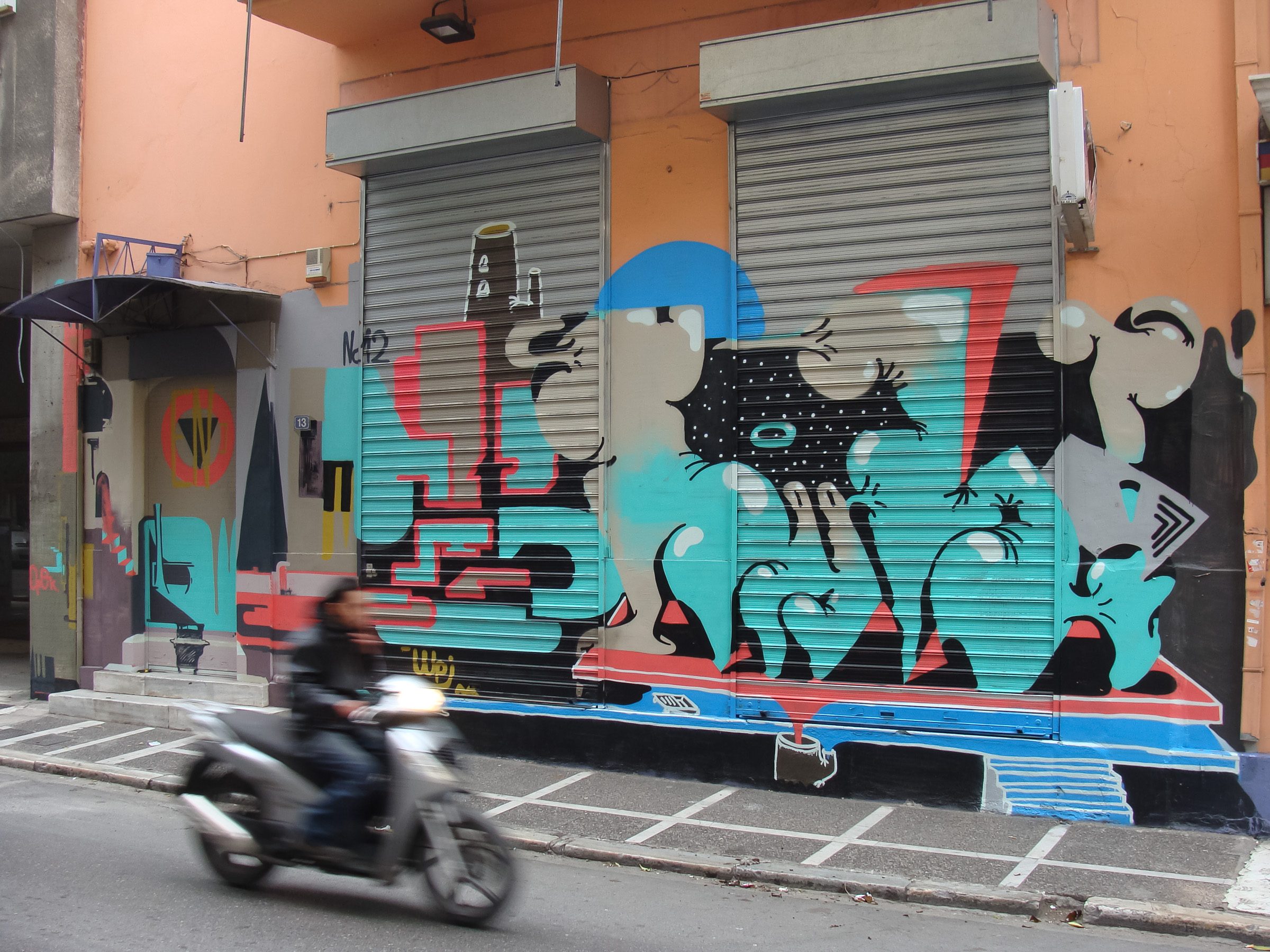
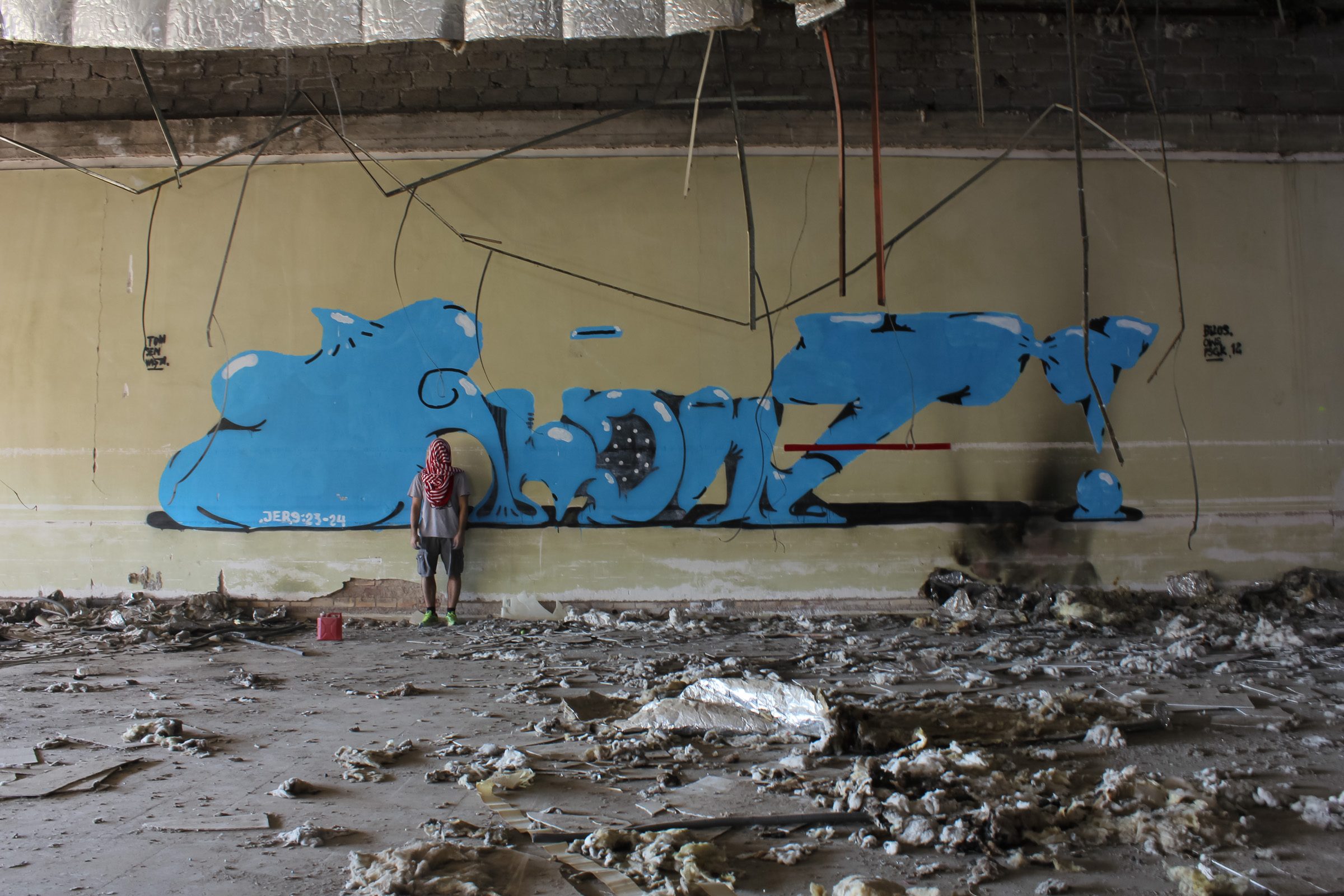
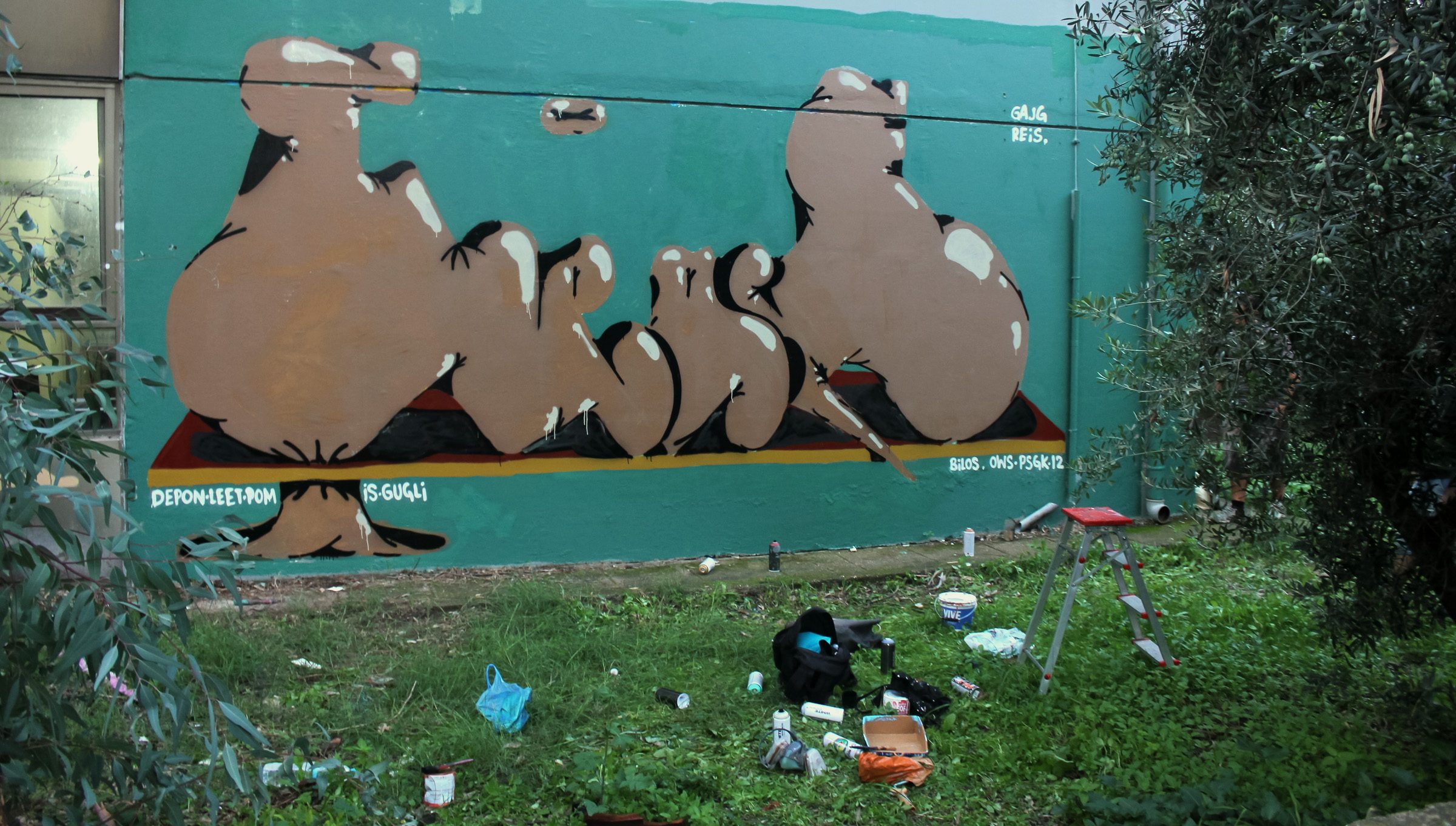
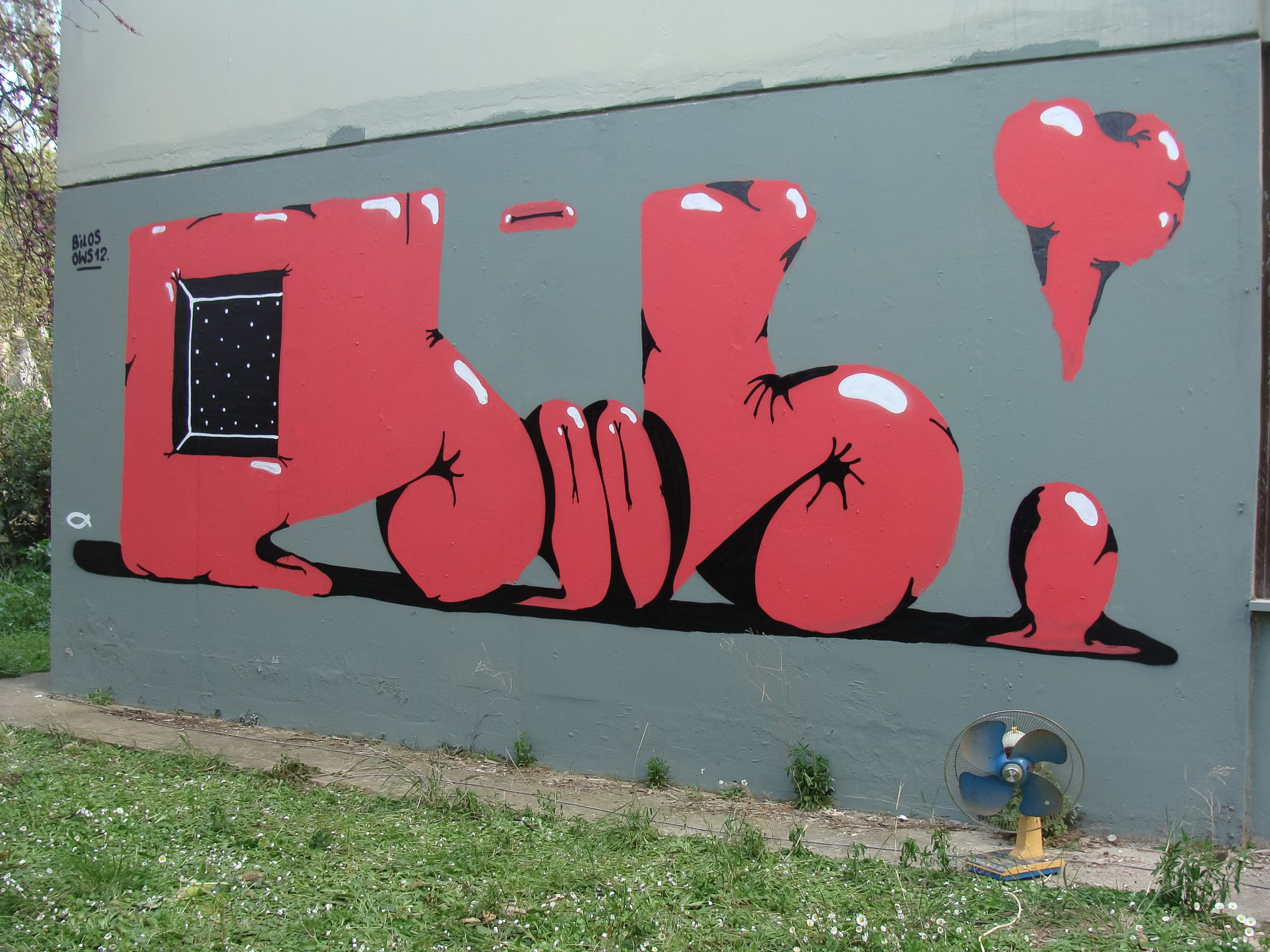
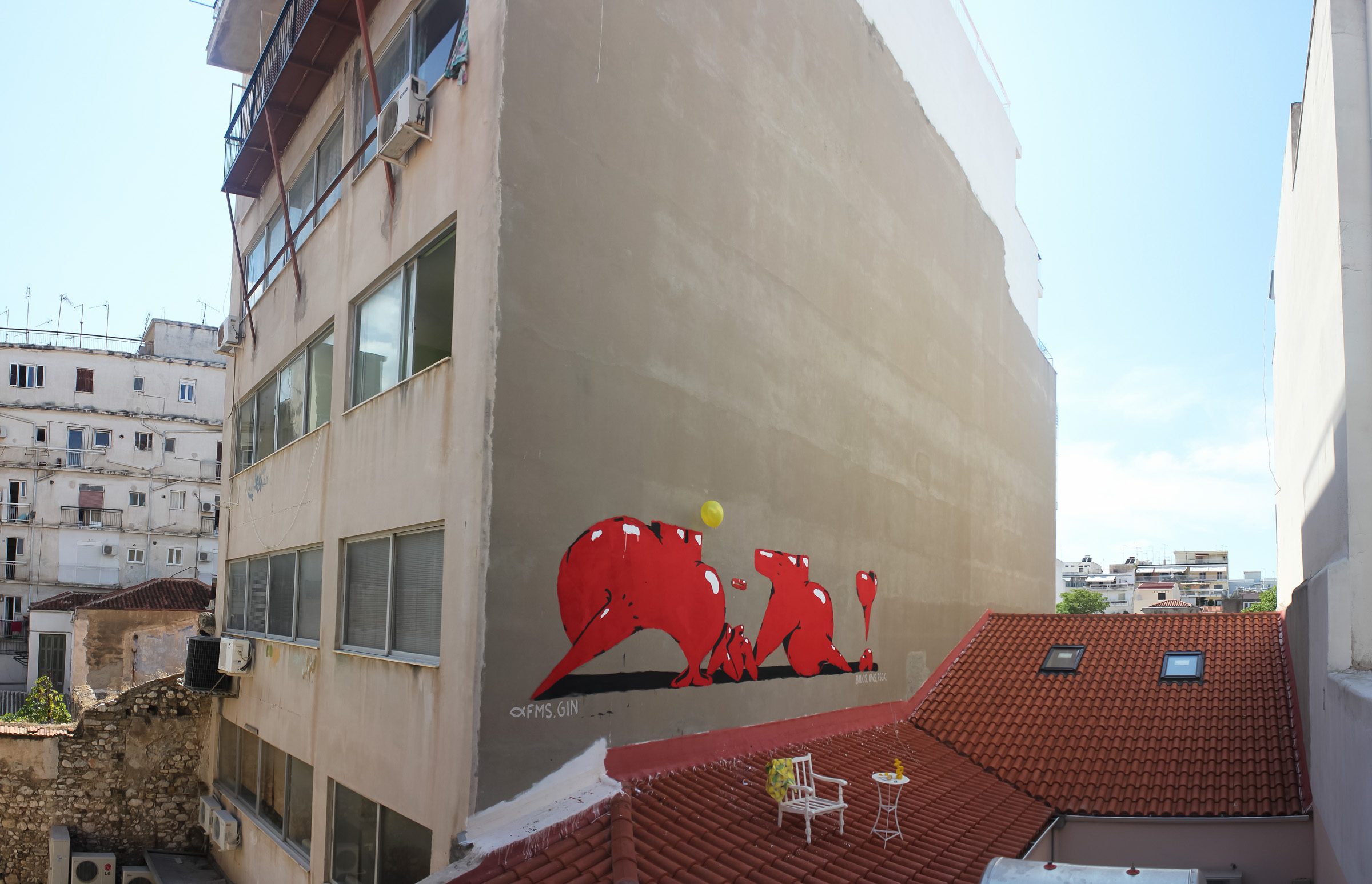
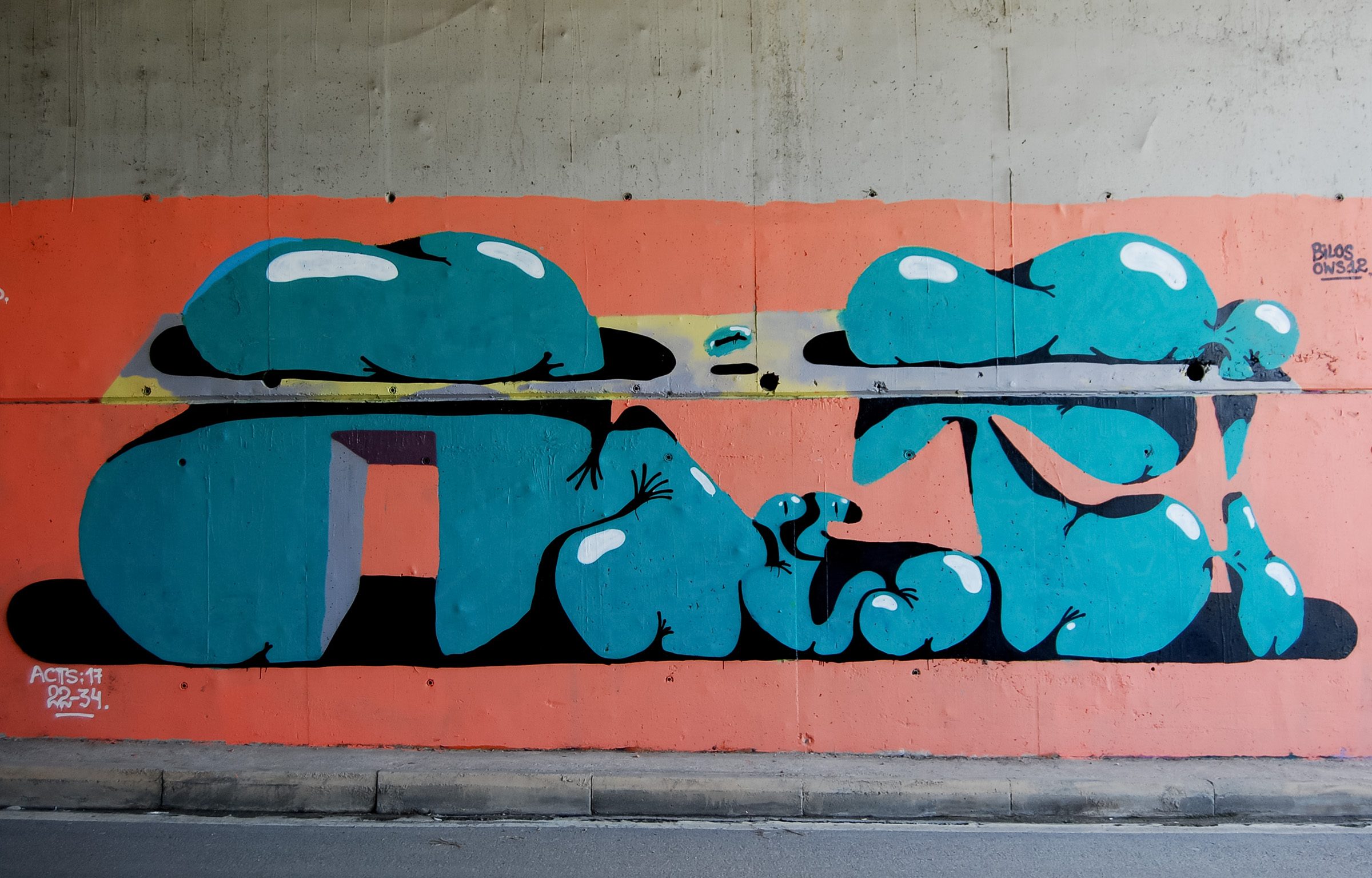
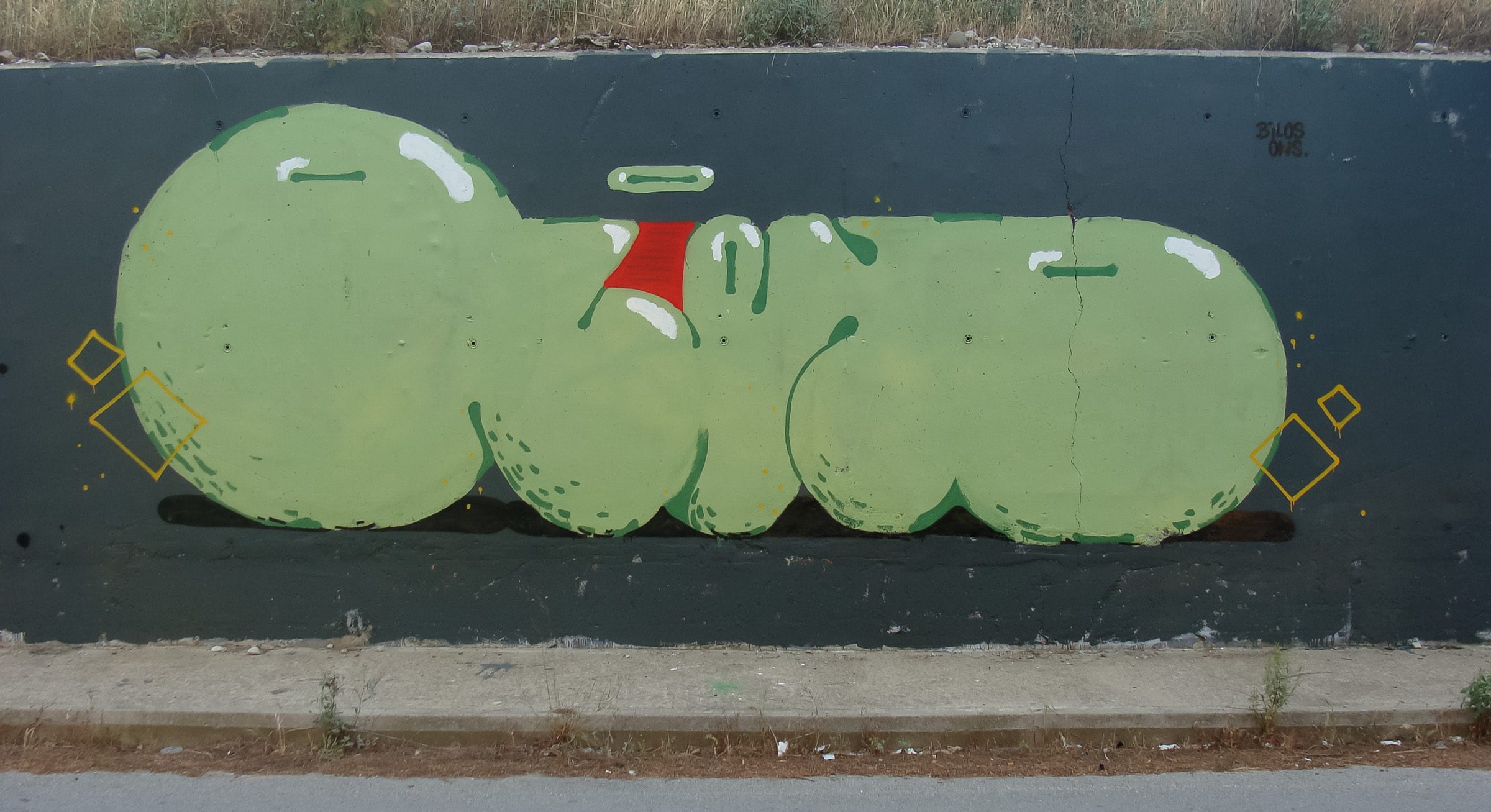
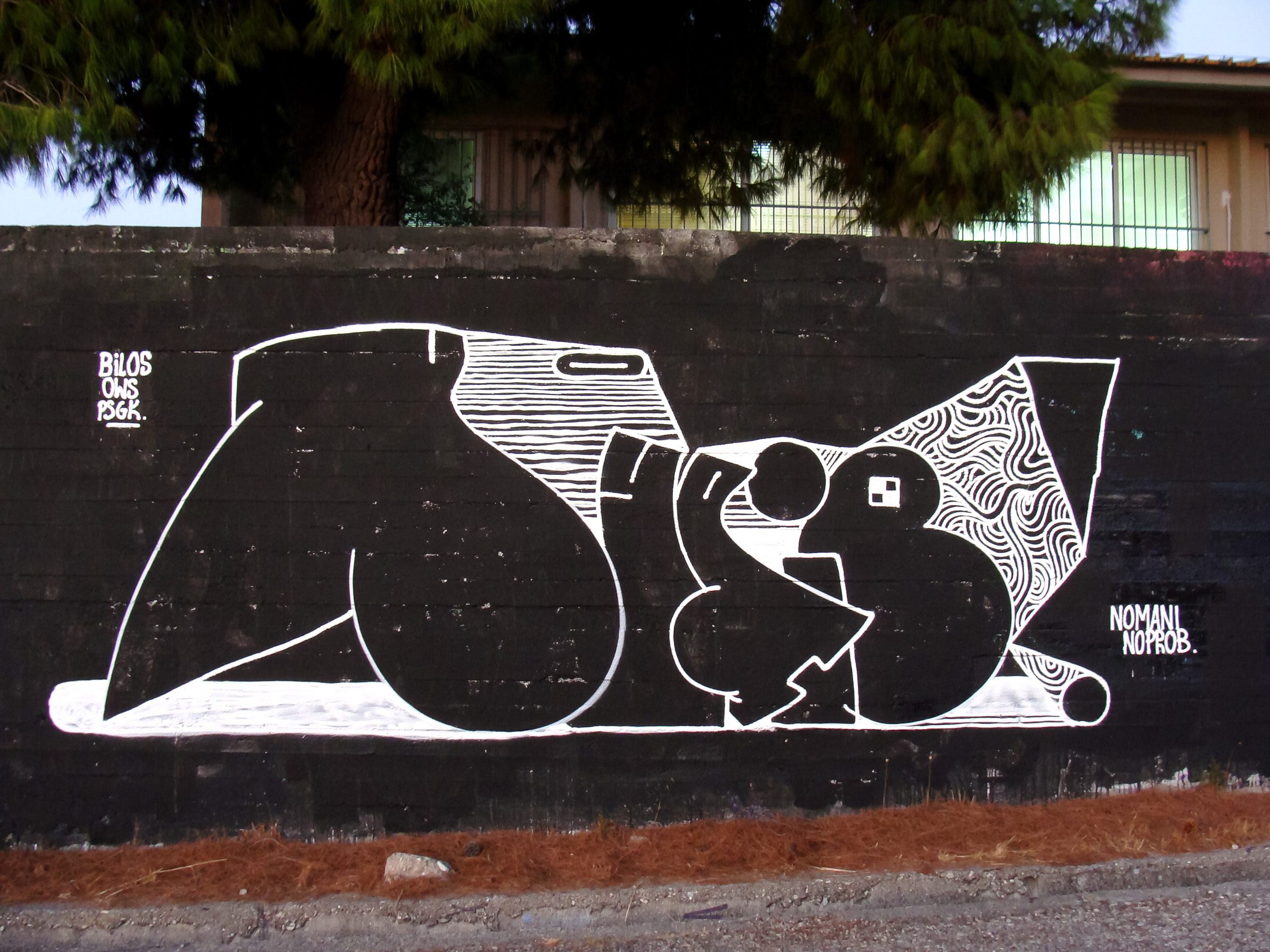
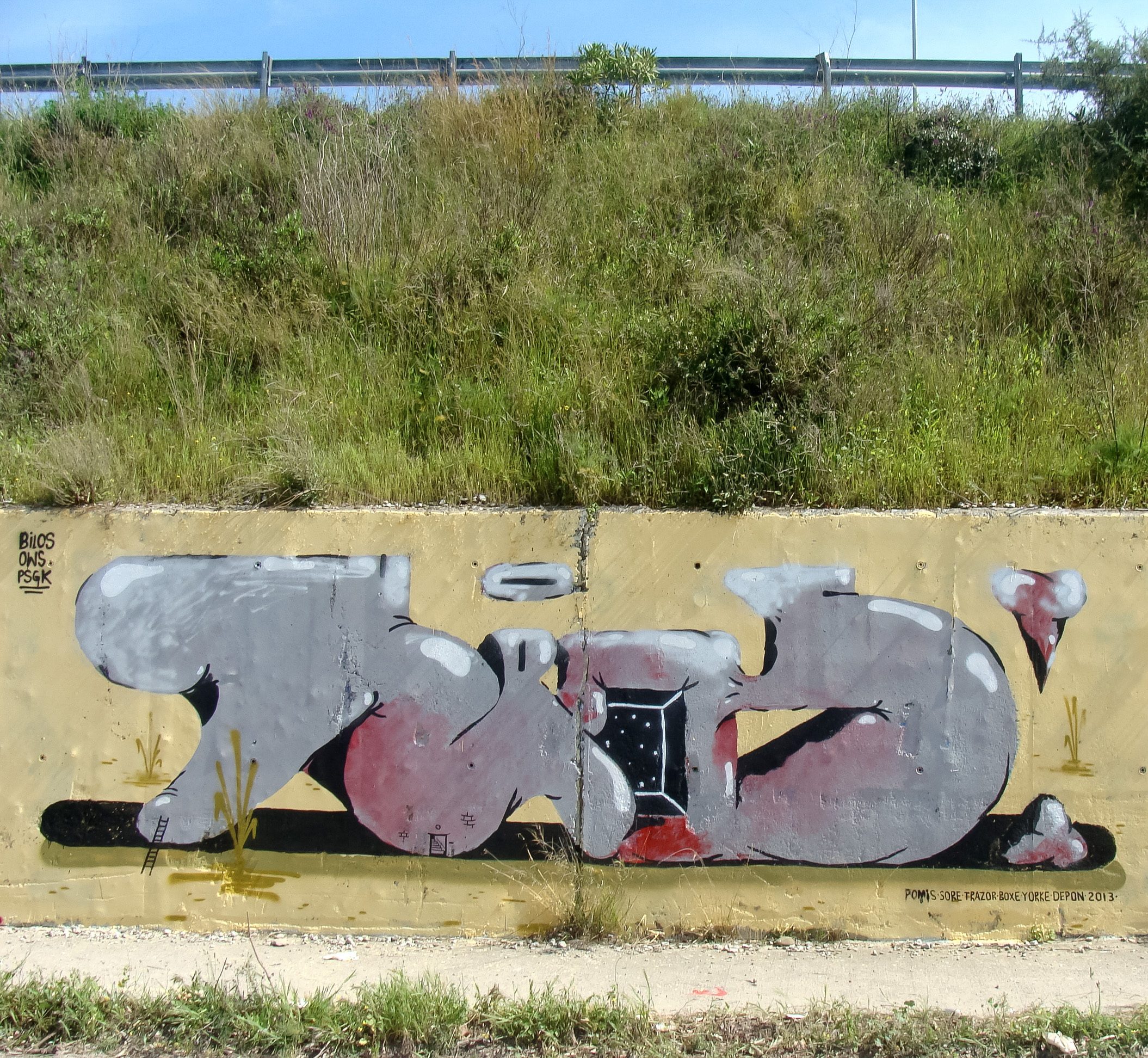
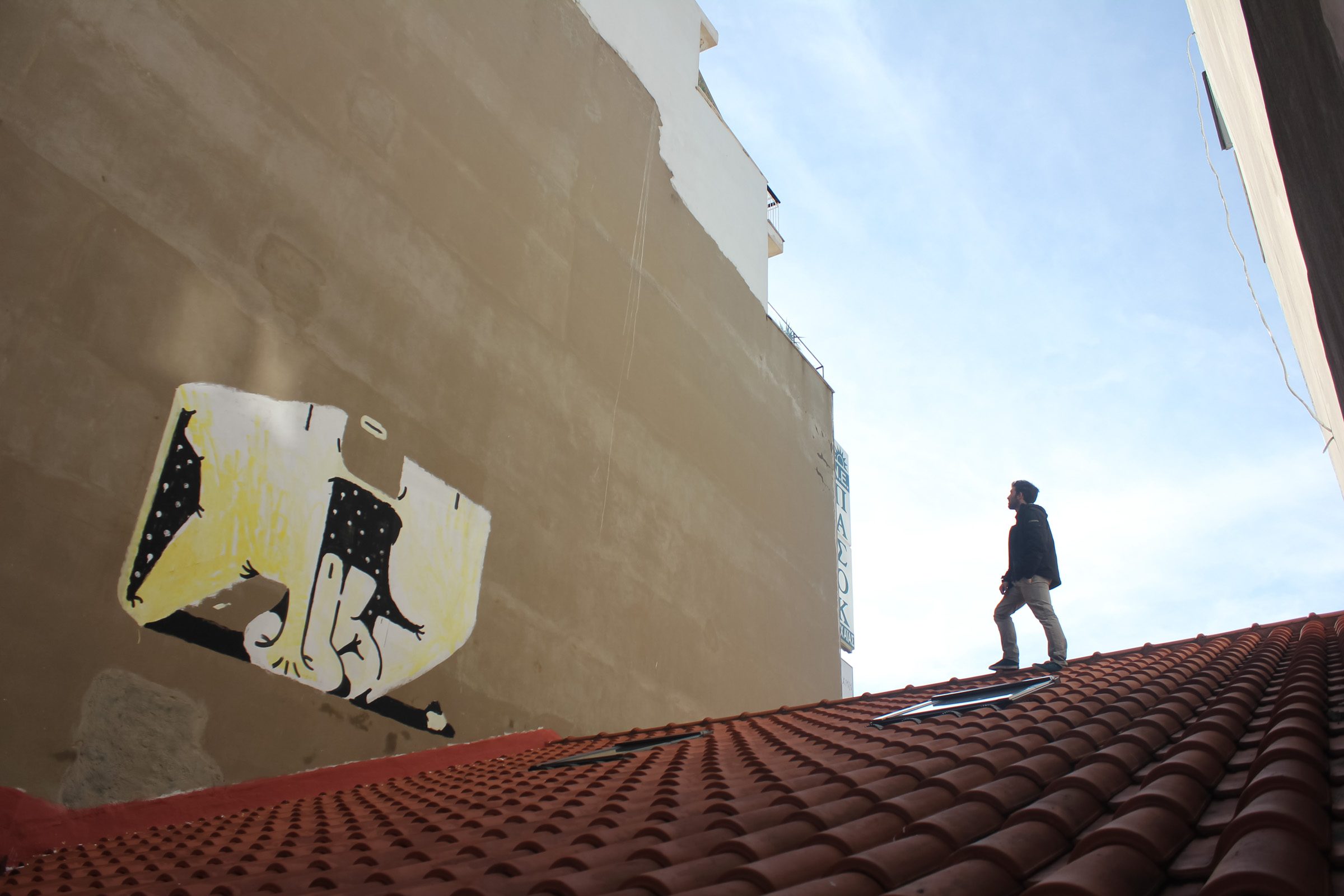
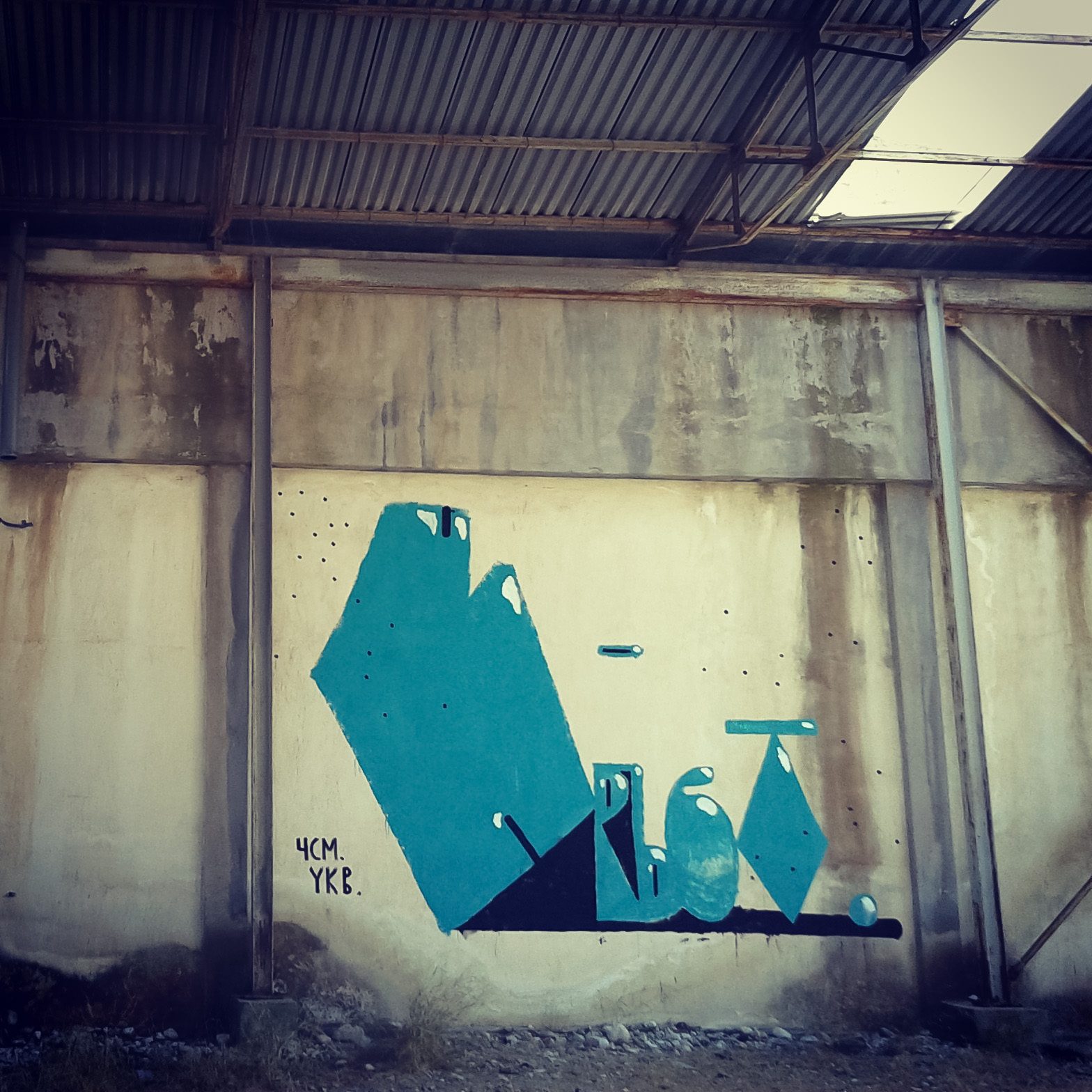
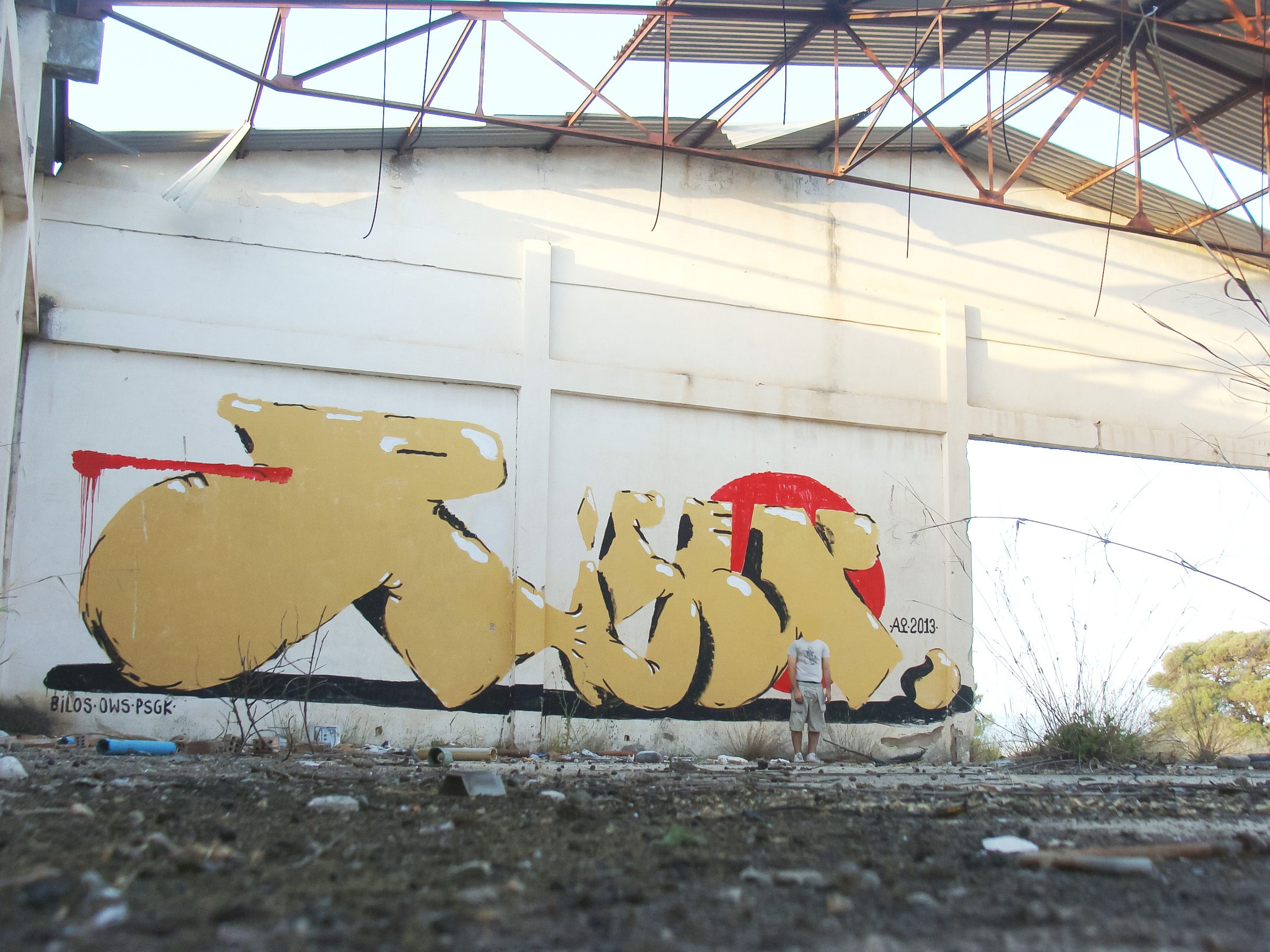
Omit instead of adding
The big stylistic transformation for his own work started in 2008 when he simplified his letters by using fewer elements and bigger shapes. In 2009, he was practicing a lot of illustration and observing the development of anti style, ignorant style, toy-like style or naive pieces in style writing and learned about modern art. BILOS realized he wanted to capture this certain freedom again for his own work : the feeling of creating from the heart, breaking out of classical and conventional style writing and not trying to fit in what others expect or like. The stripping down of elements was an important method, and in 2011 he painted his first piece without outlines. It was love at first sight, says the artist. Ever since he has been trying to create unusual letters like strange creatures you encounter for the first time. Beings he gives life to and puts them in their „natural habitat“, on walls and in spots where they will possibly spend the rest of their lives after their birth according to the artist. In 2016, BILOS experimented with virtual graffiti using software and digital tools to create mock-ups and digital sketches and his „ Digital Daydreams“ series. Using his archive and pictures of walls, he creates digital pieces that fit in the surrounding depicted in the chosen photograph, creating a montage. This way, the artist can experiment different concepts playfully in his studio.
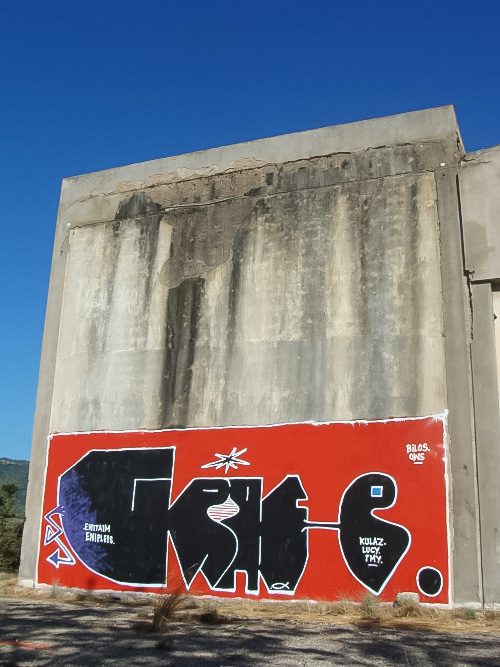
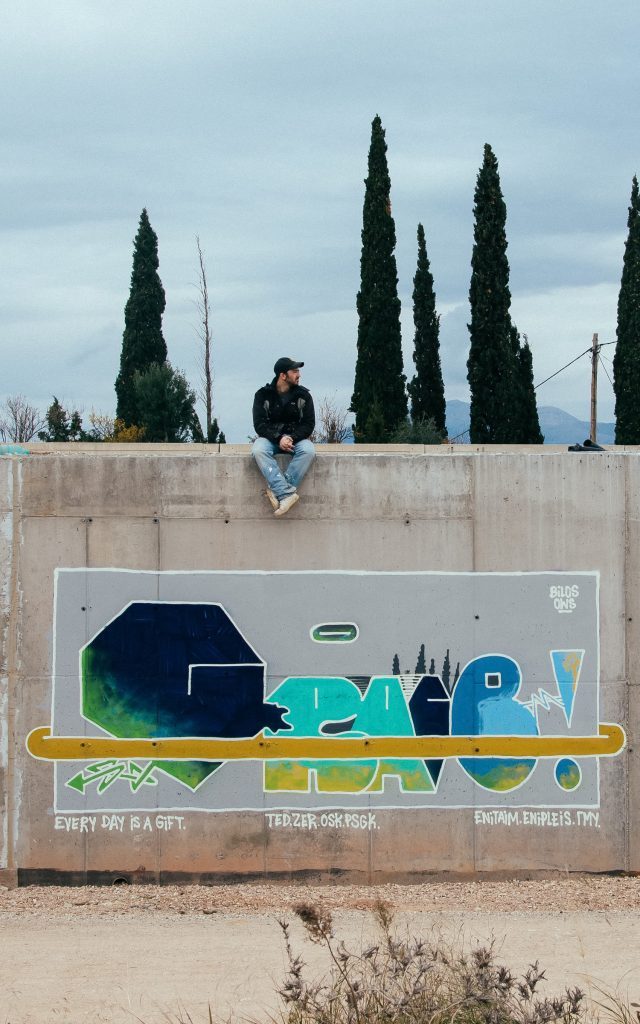

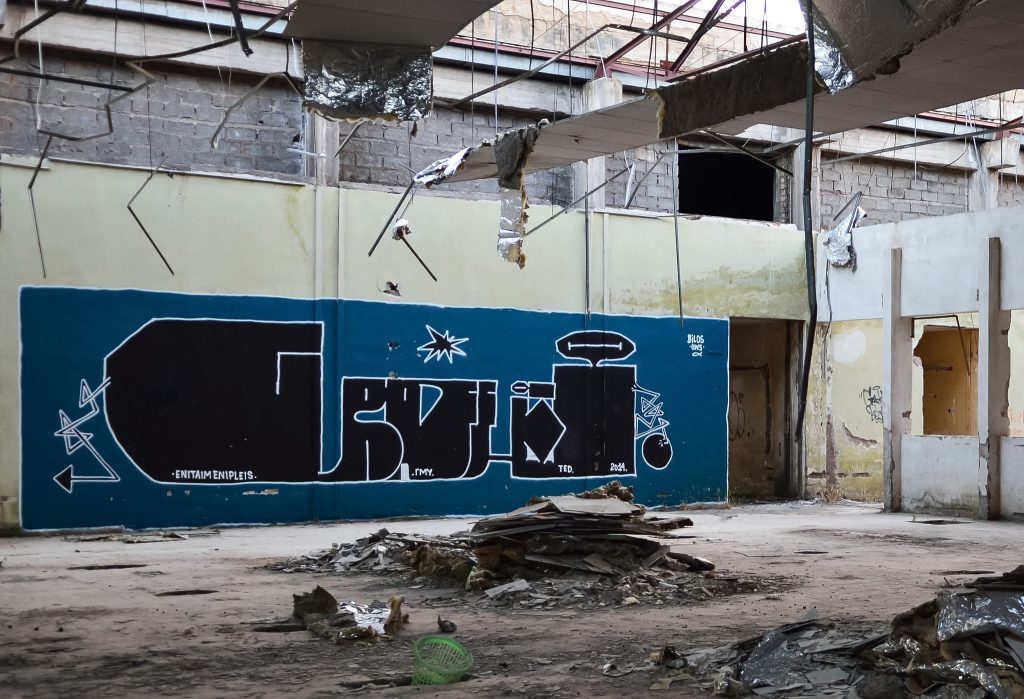
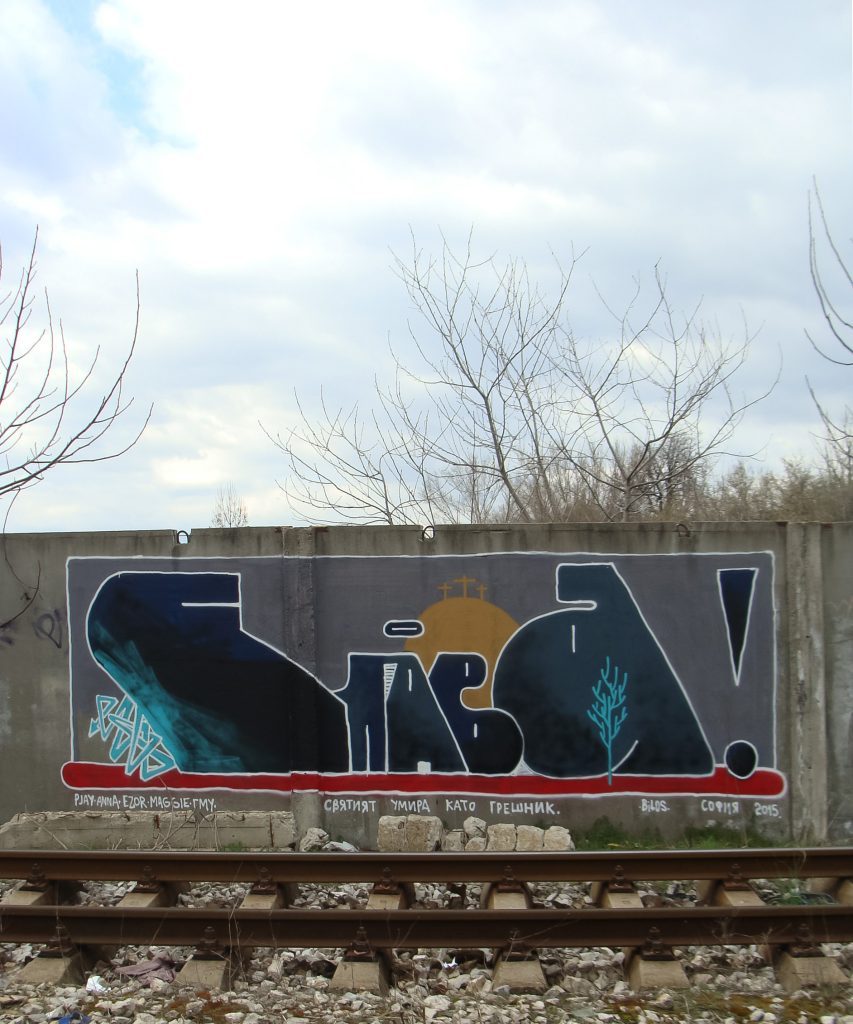
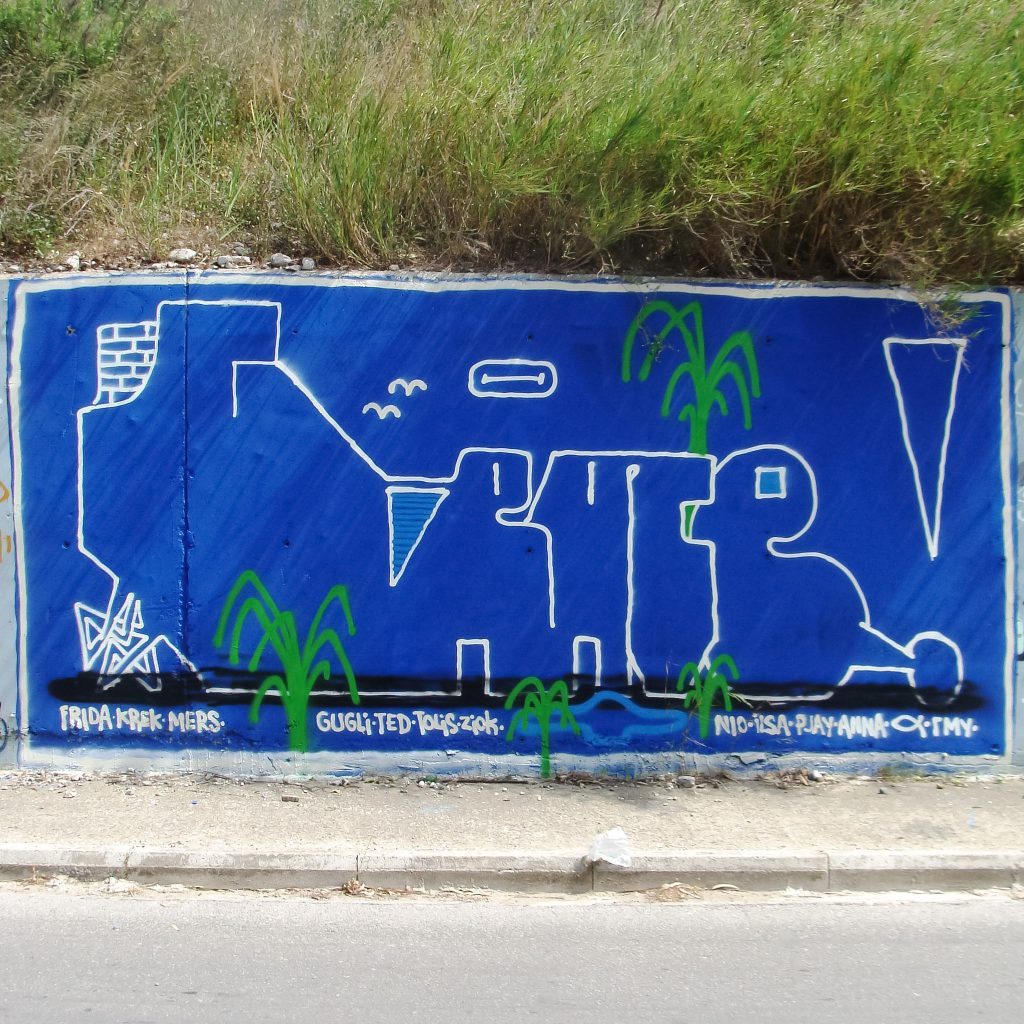
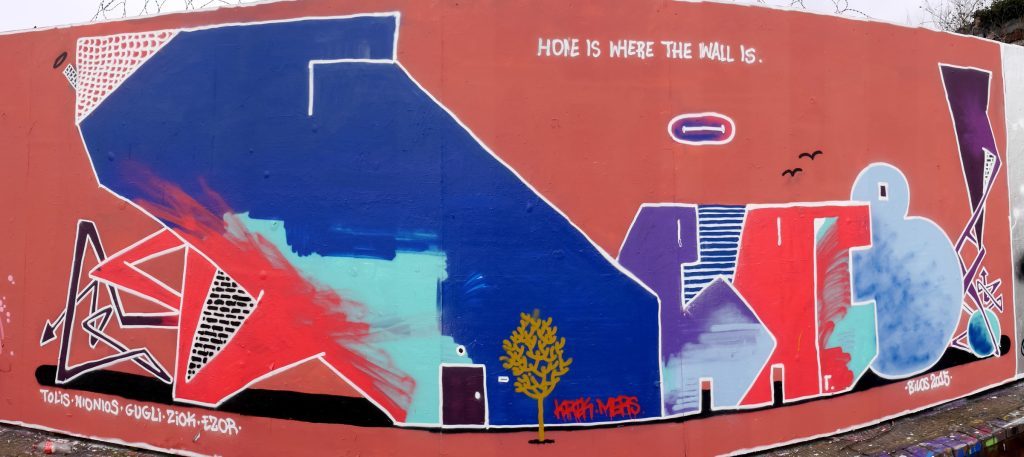
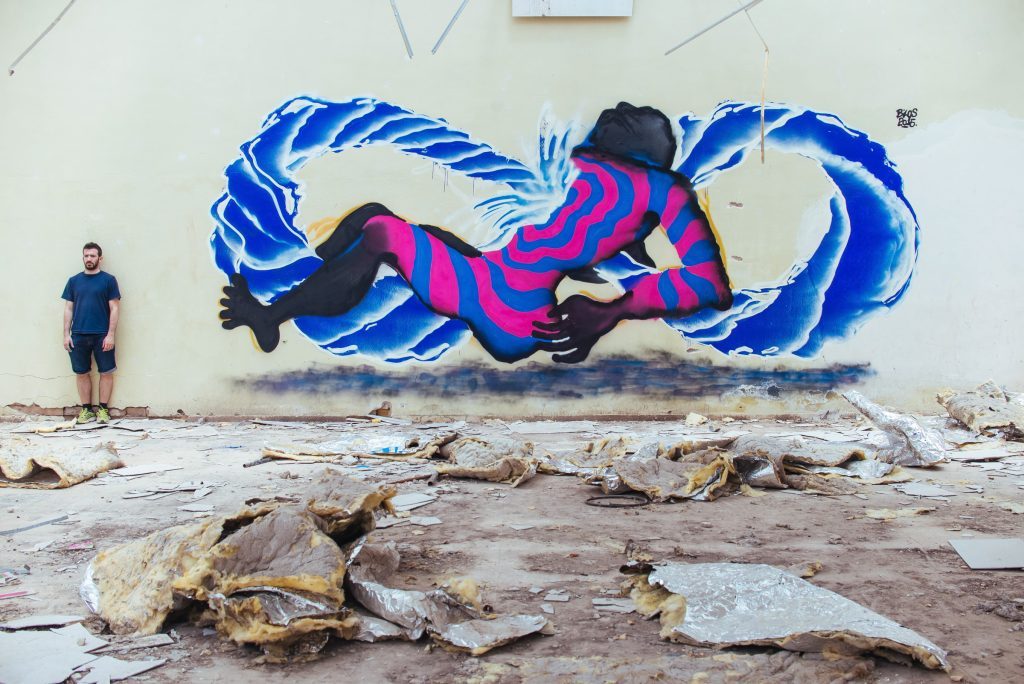

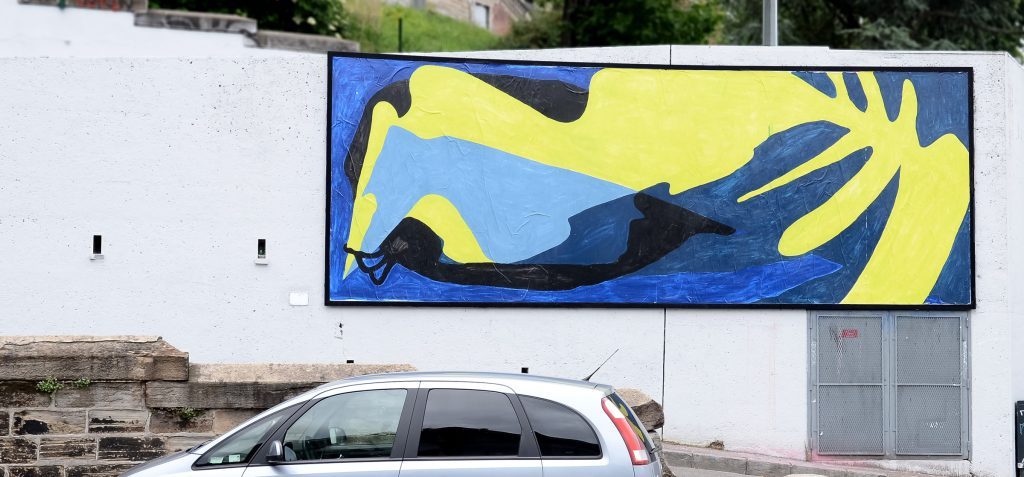
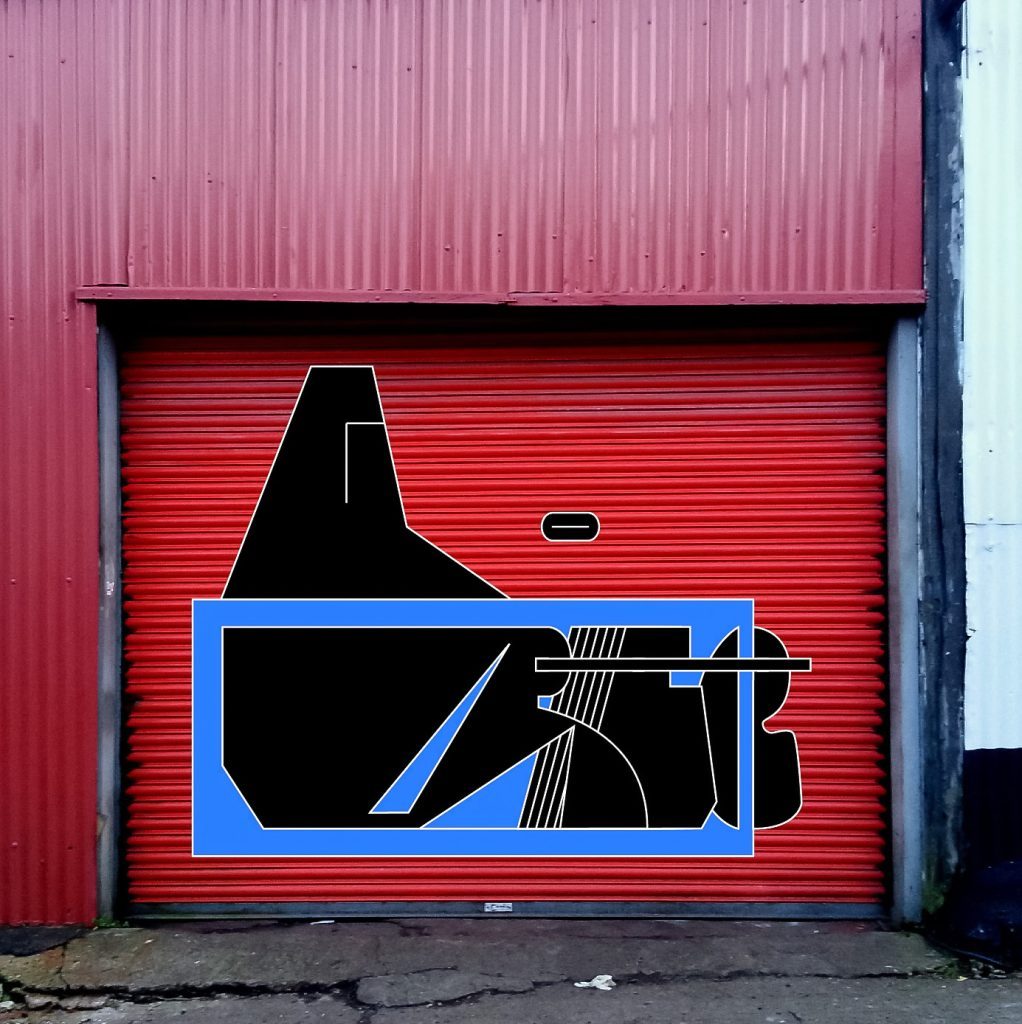
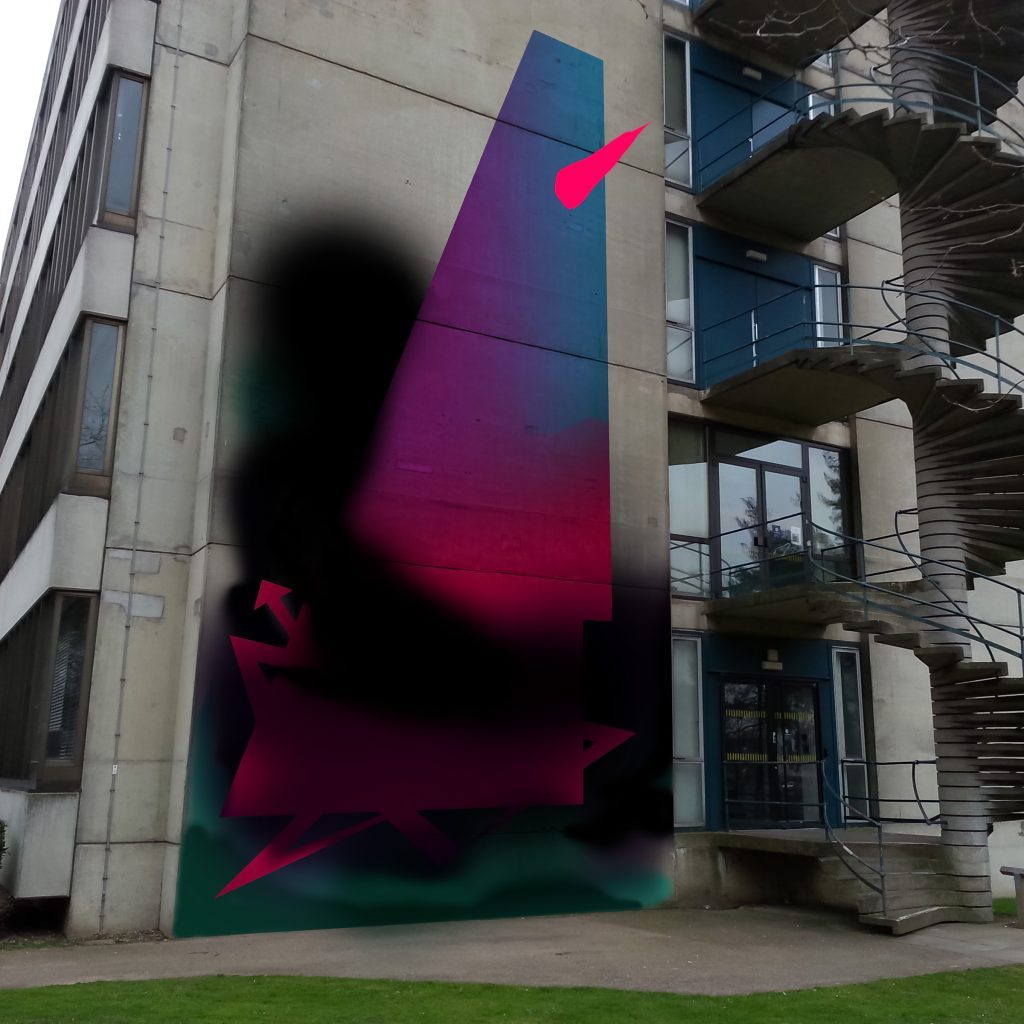
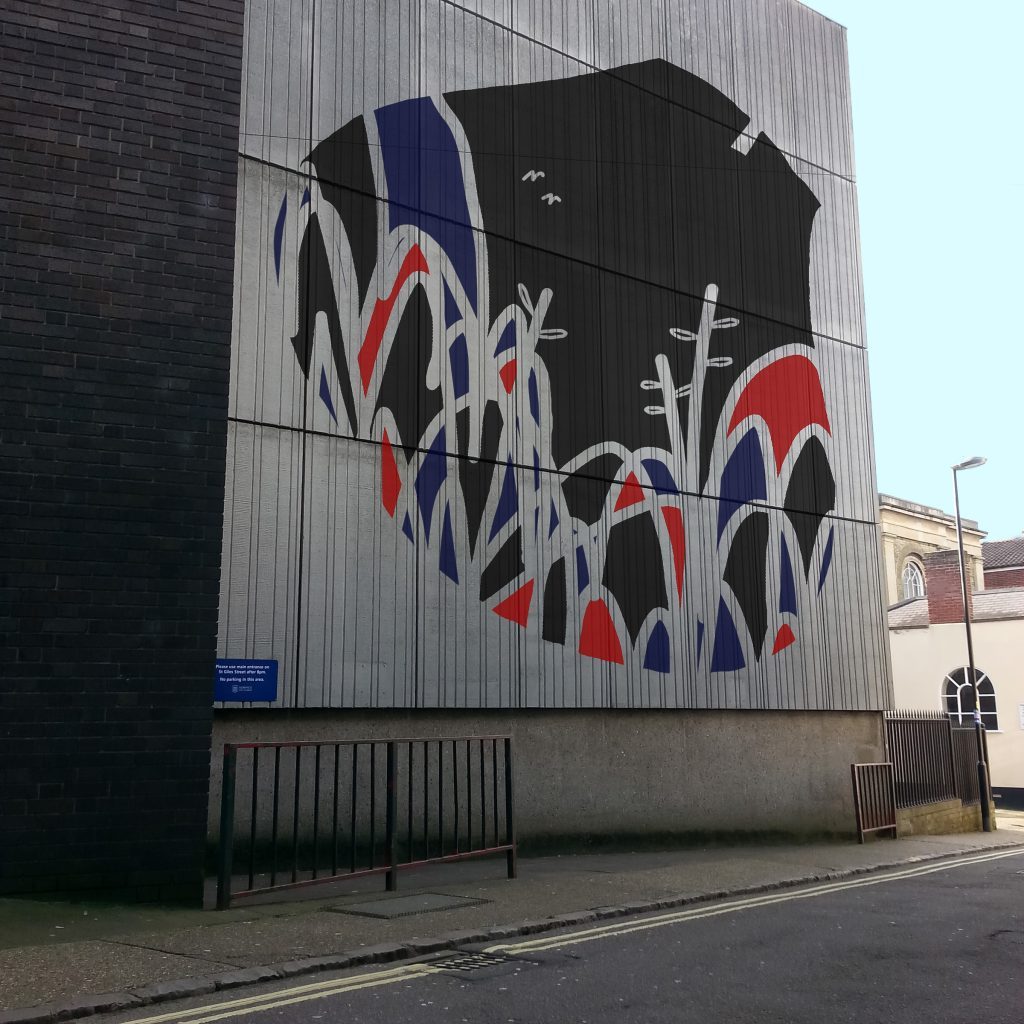
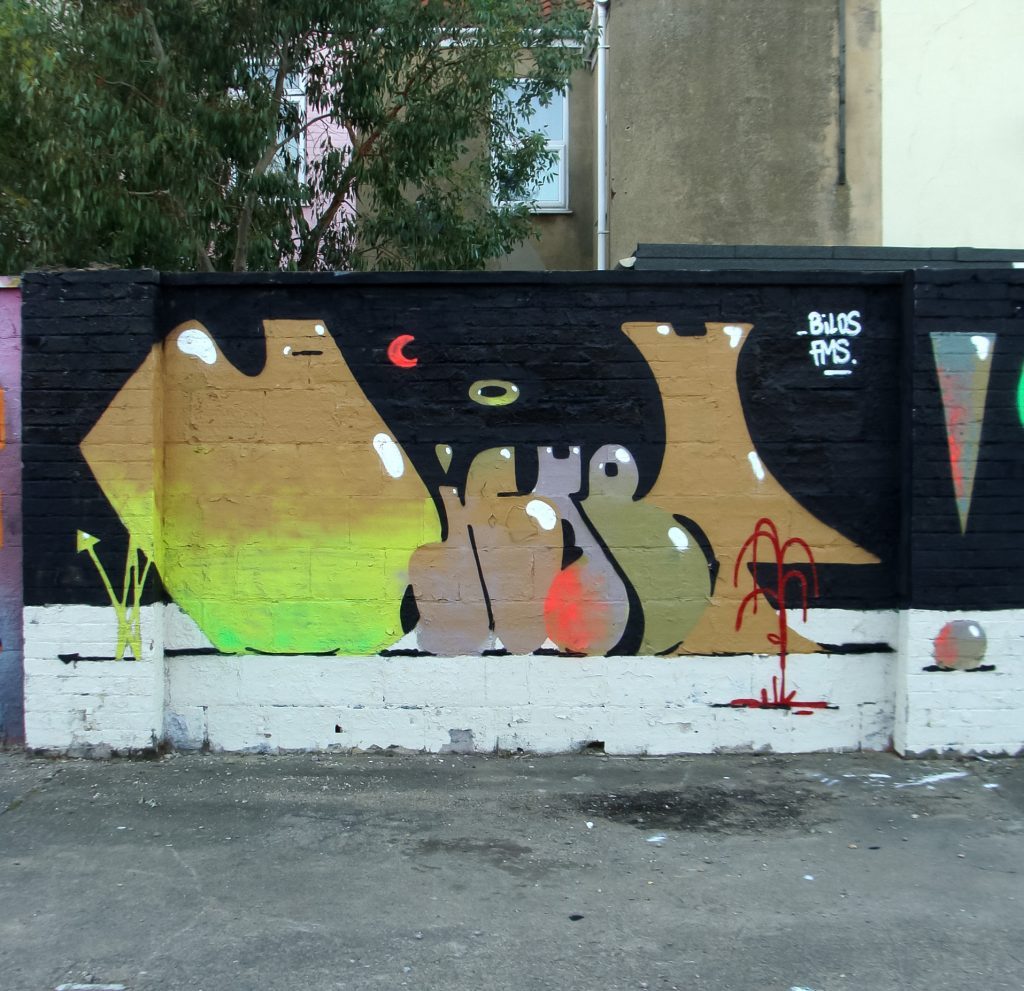
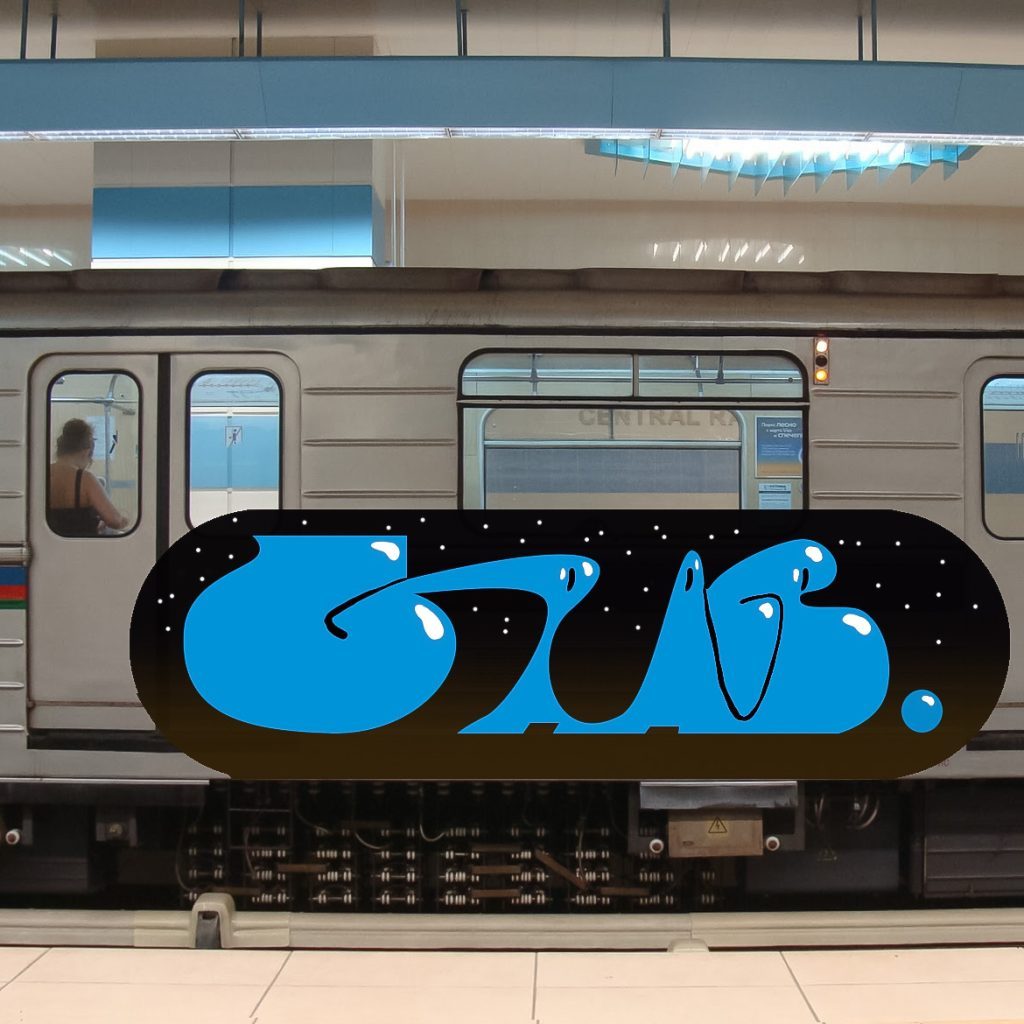

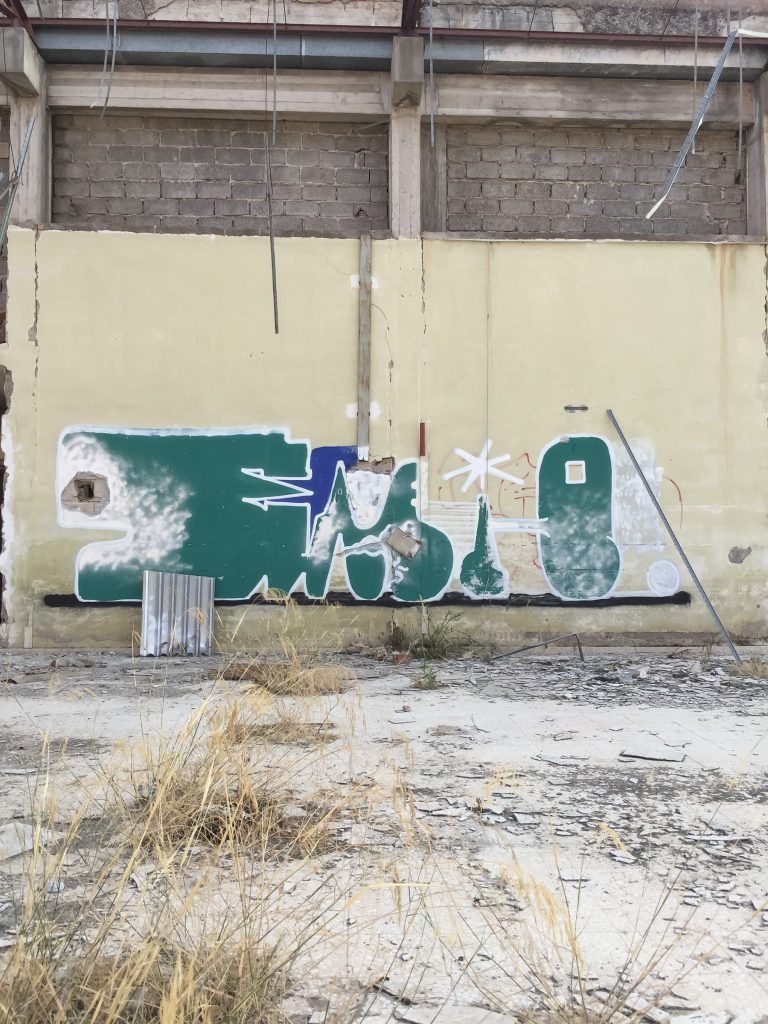
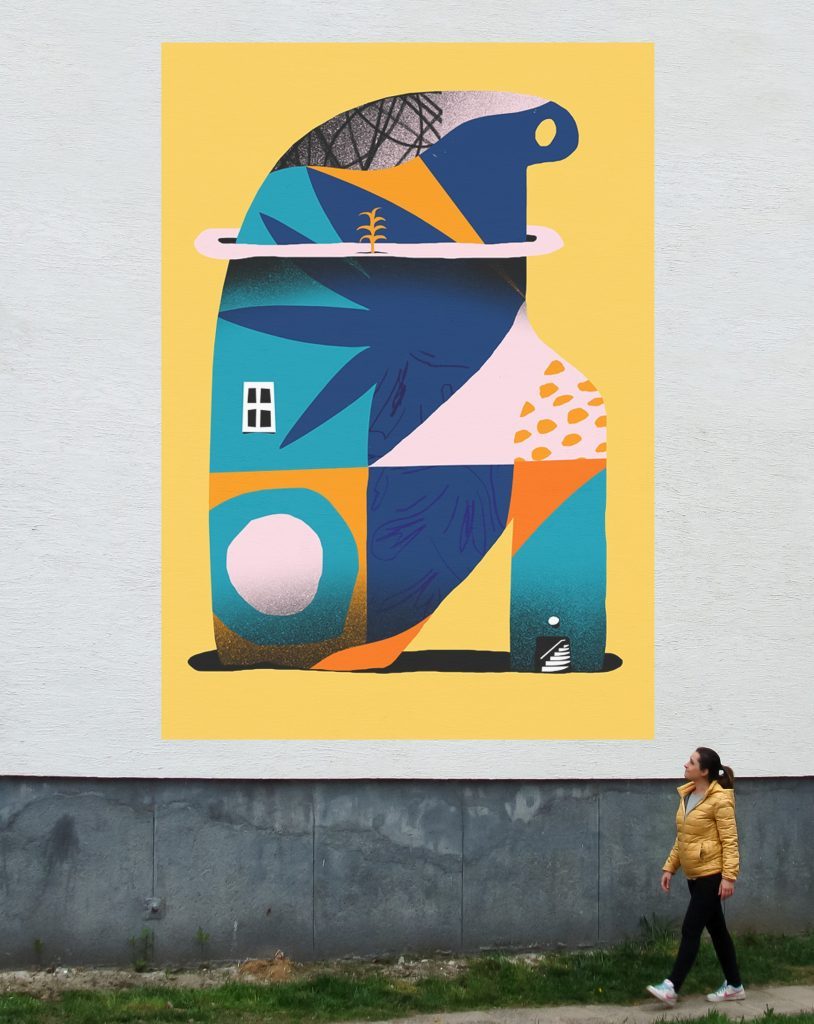
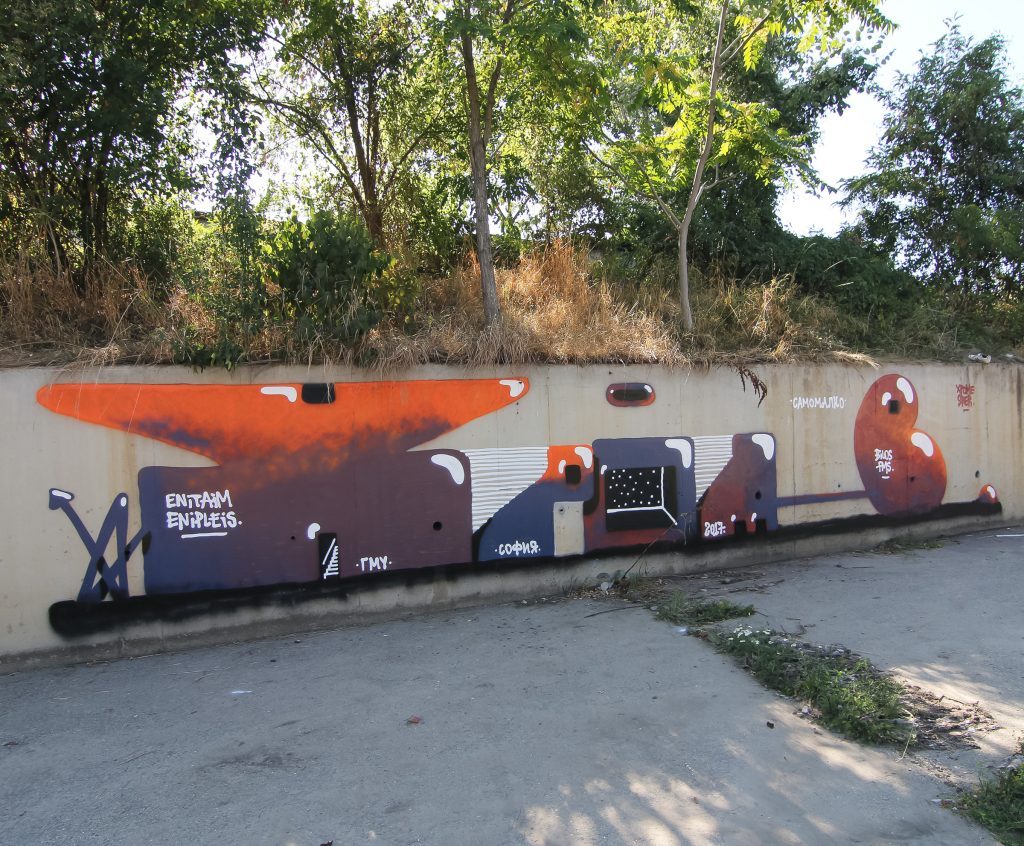
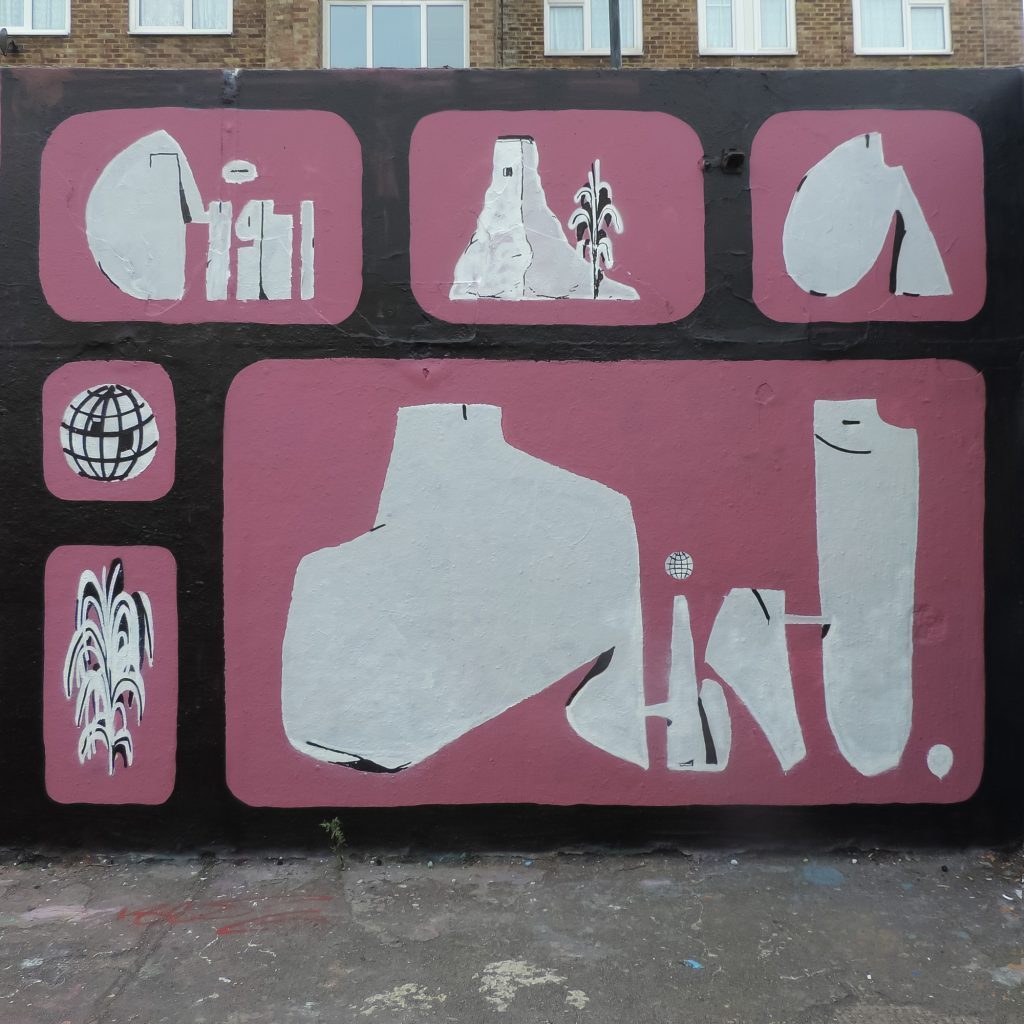
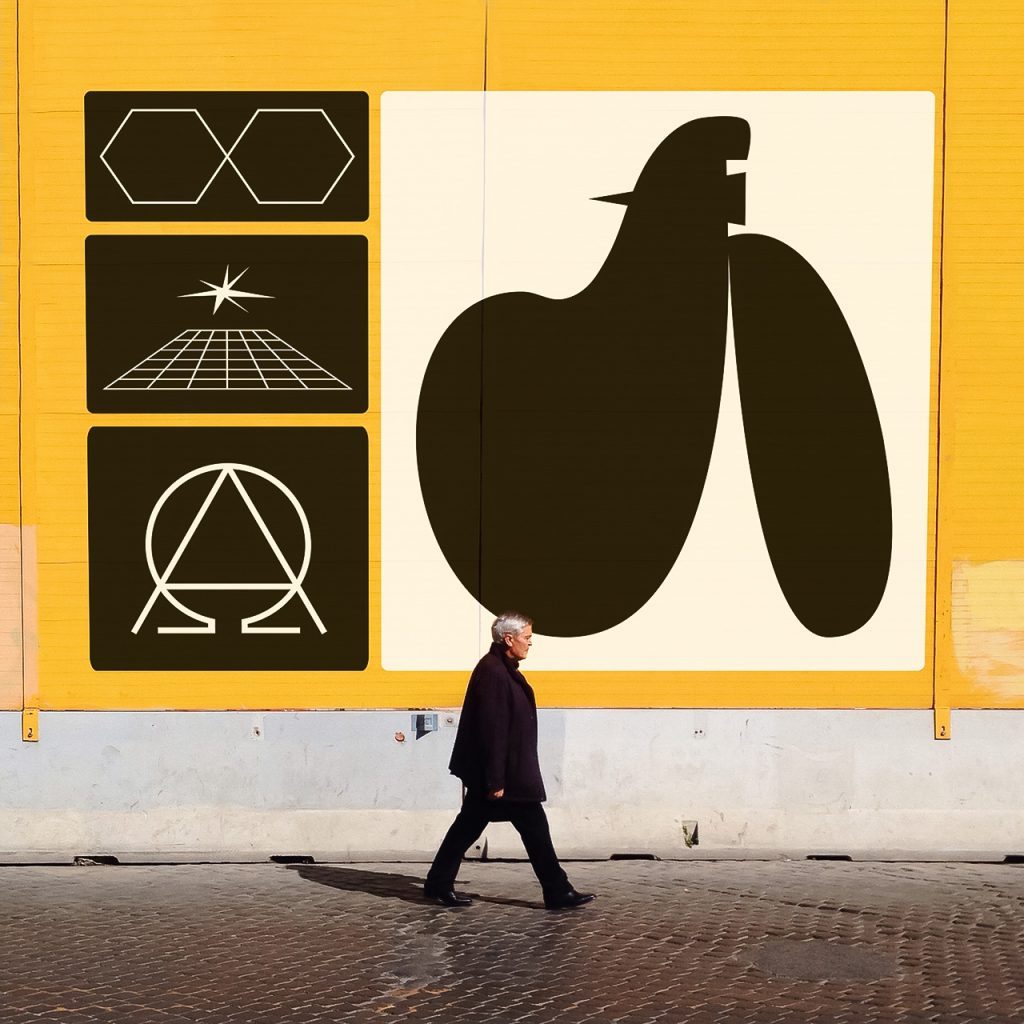
In the last years, BILOS expanded his work with motifs that look like kind of vessels, building visual constructions with imaginary objects. For him, they are ‘firmly placed on the ground‘, because the creation expresses some sort of serenity and peacefulness, where everything is placed where it belongs. His imaginary forms can represent beings or familiar objects that move, walk or stand. He always had this feeling that letters he was drawing or spraying were doing something: standing, walking, kicking, falling…Now his shapes are no longer letters, but still hold the self-acting lines of typography. His recent compositions with elements closer to surrealism look like a still life with different objects. The reiterant vase is one of them, a shape he came to through lettering and symmetric line drawing, the amphora, also very symbolic of his Greek culture and cultural heritage.
BILOS works of the last few years seem to be still life’s with a twist, where life has been added through a combination of different lines, that are intentionally not perfect, more free, where curves can refer to the body when it moves and straight lines to architectural elements. Looking familiar, the depicted sceneries still seem to be from another world where the viewer can escape into. And over the last 20 years BILOS has developed his own world with a particular visual language that he describes as a blend of illustration, typography, sculpture and abstract painting all combined.

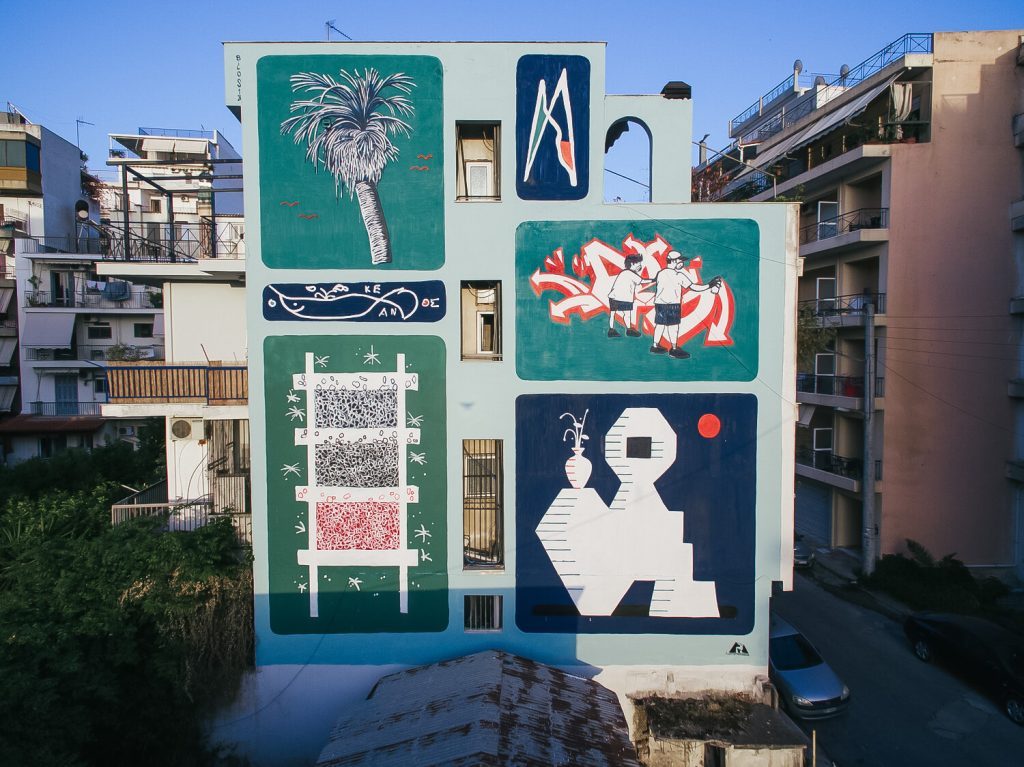
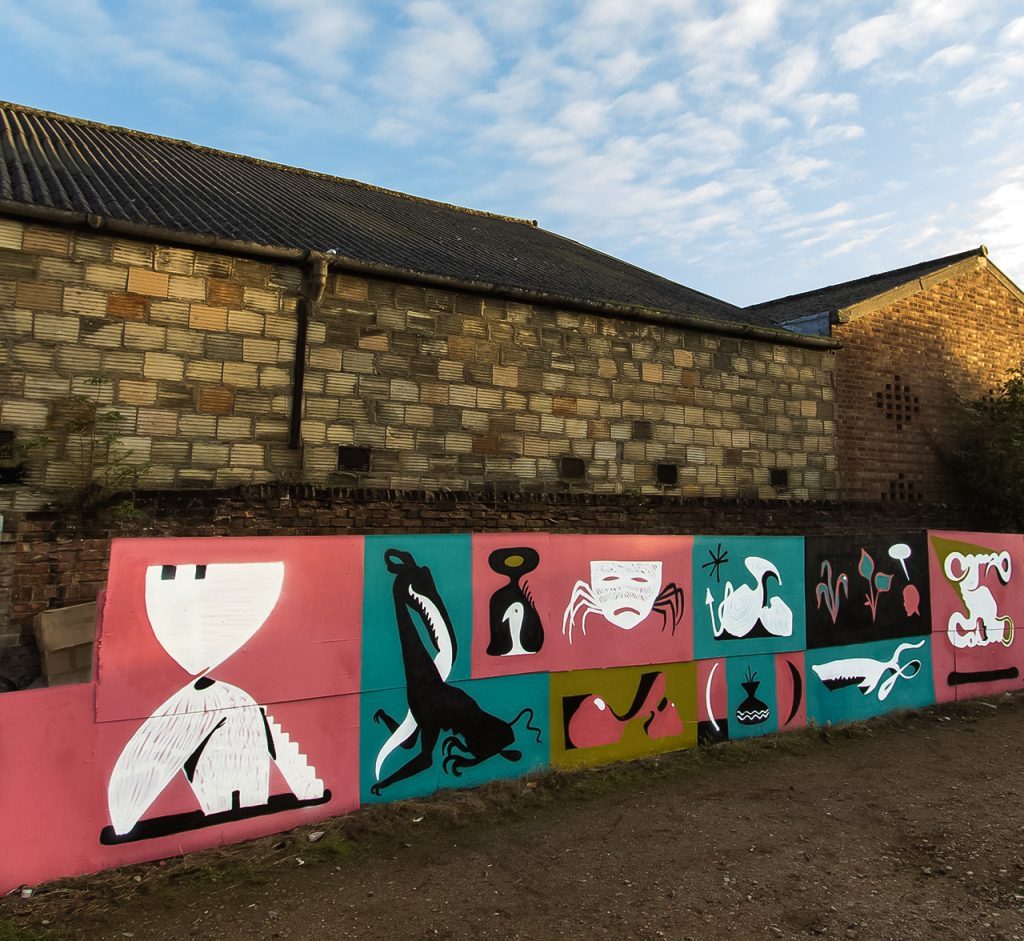
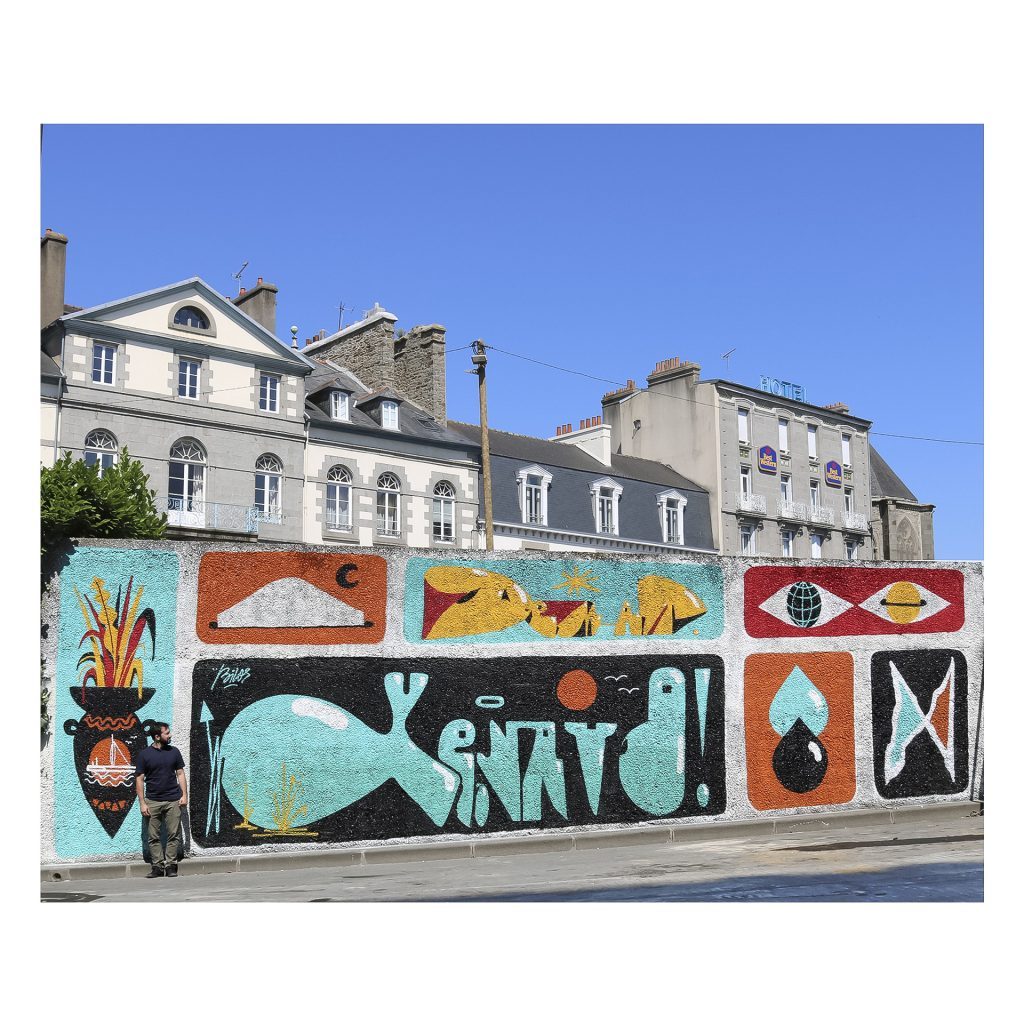
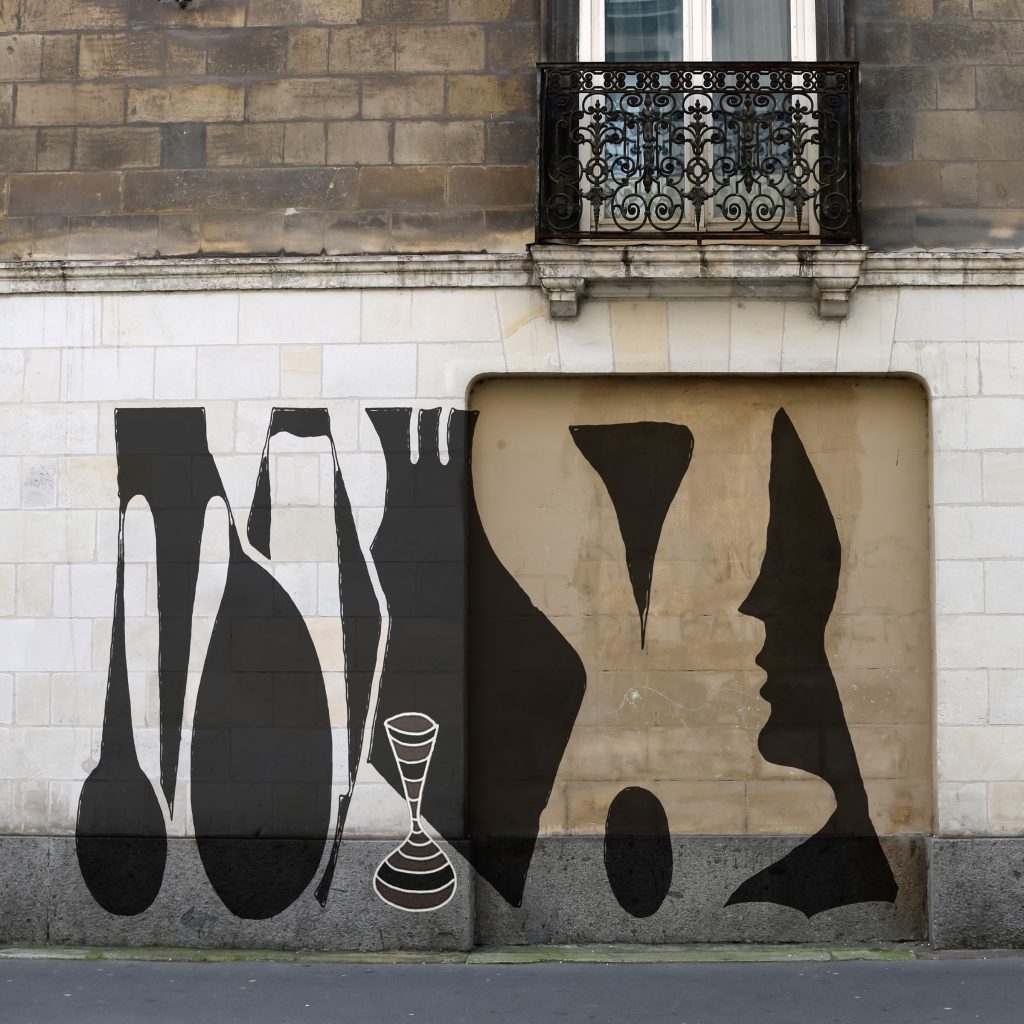
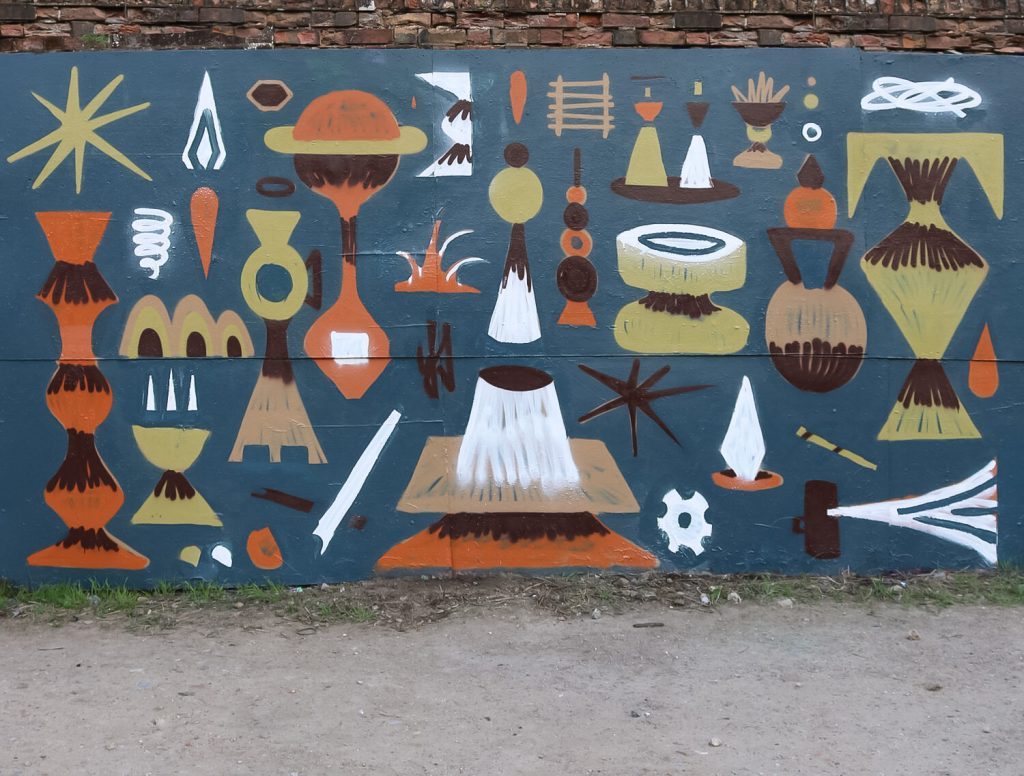
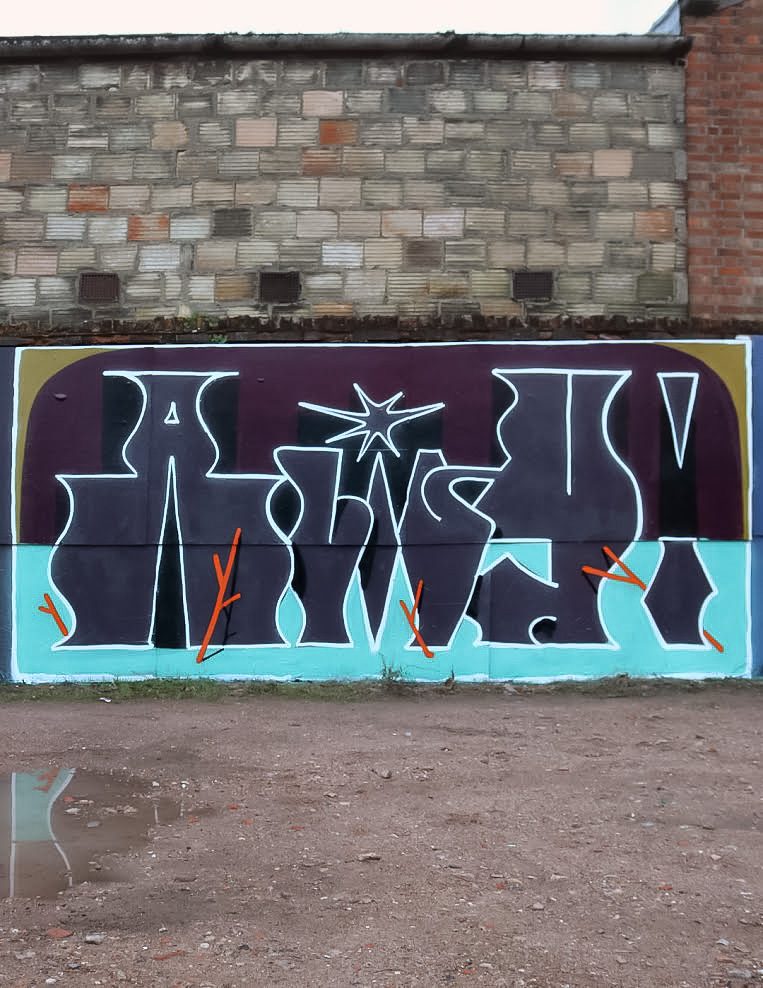
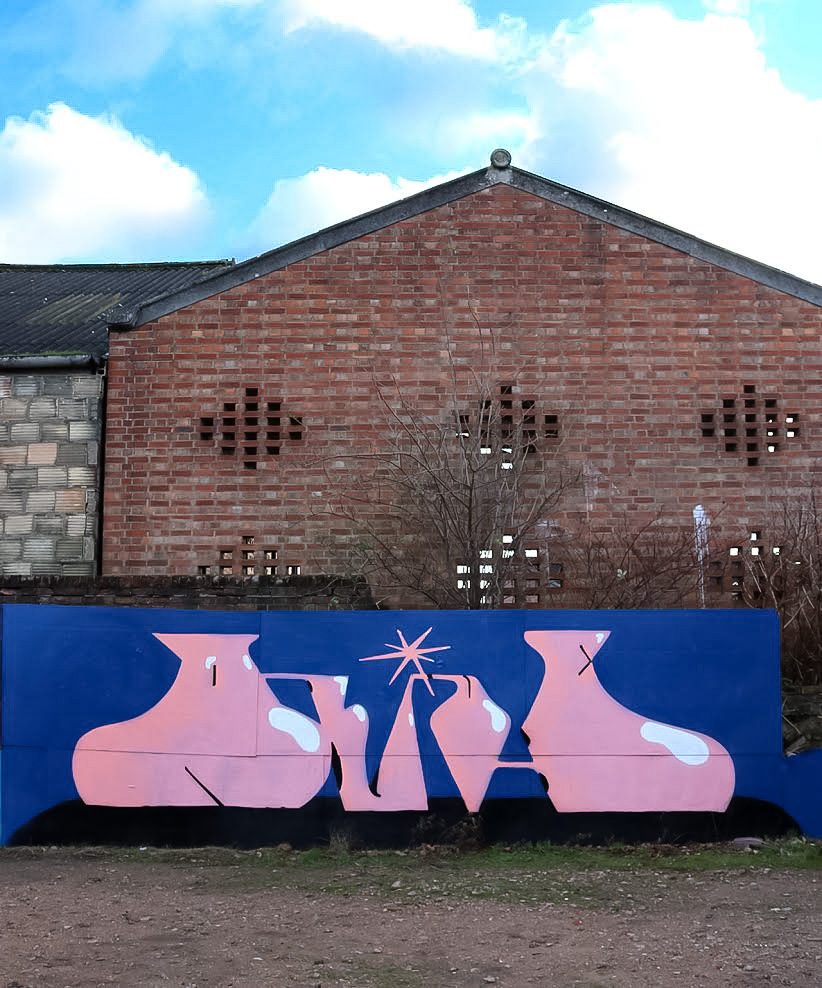
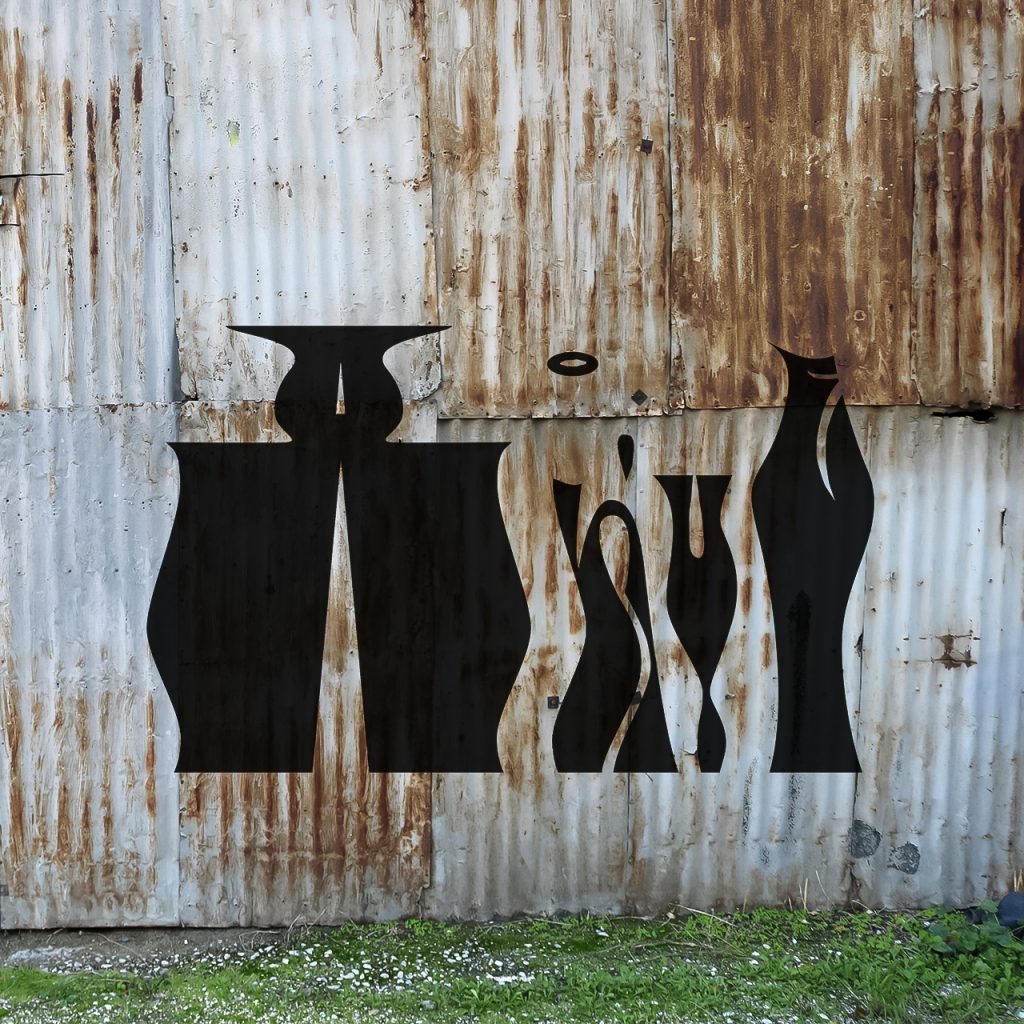
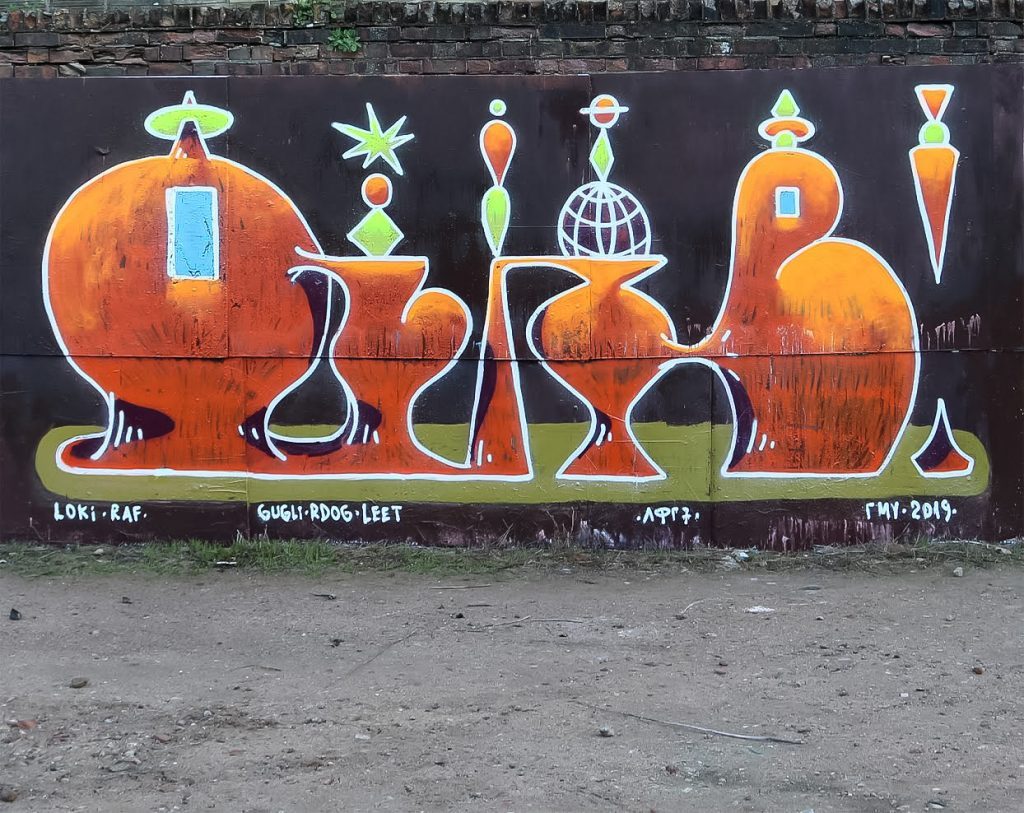
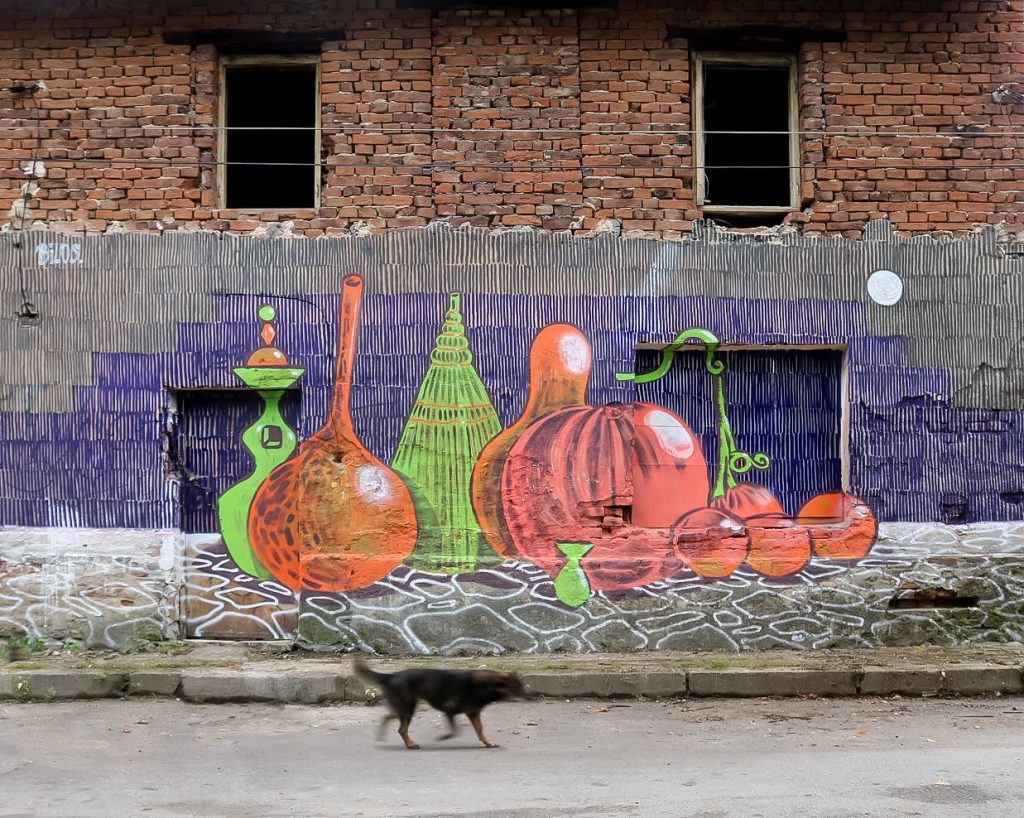
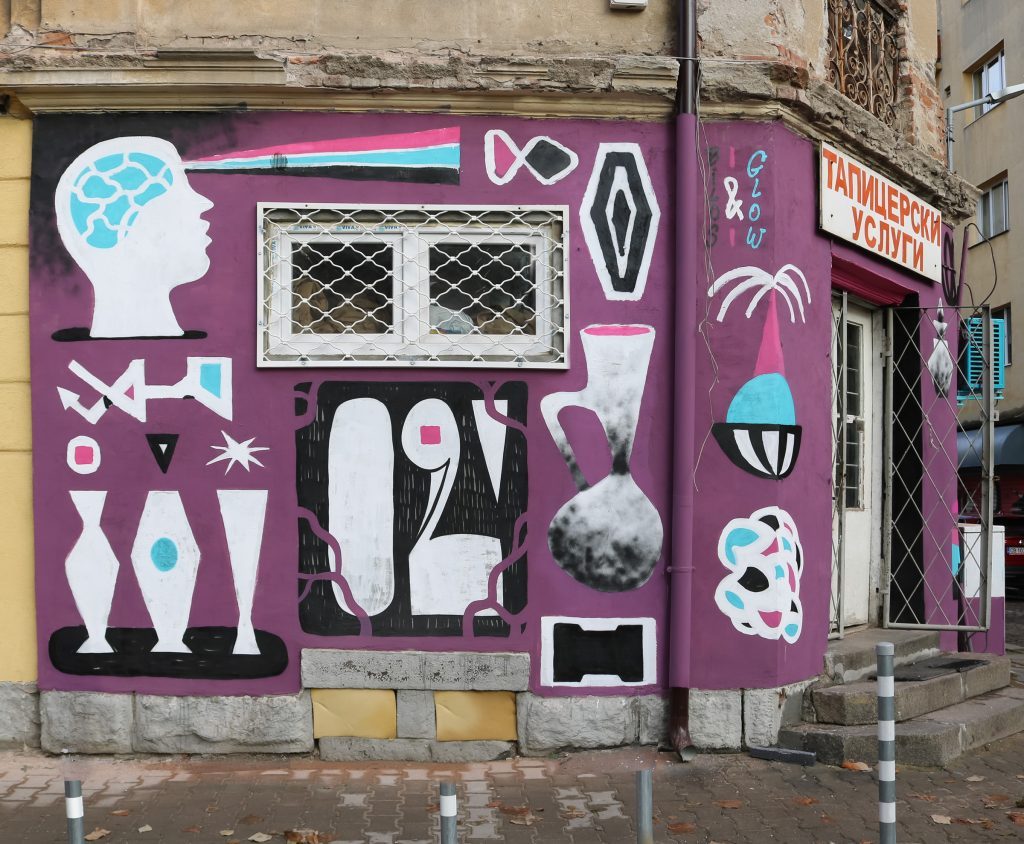
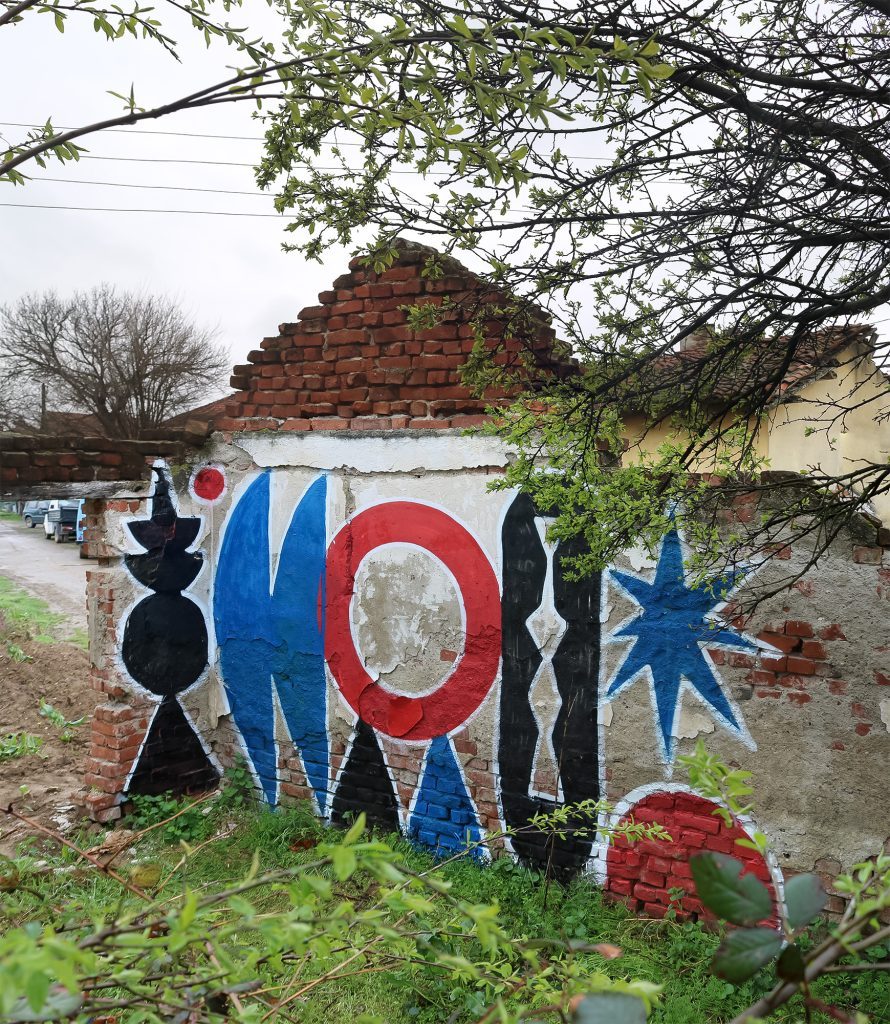

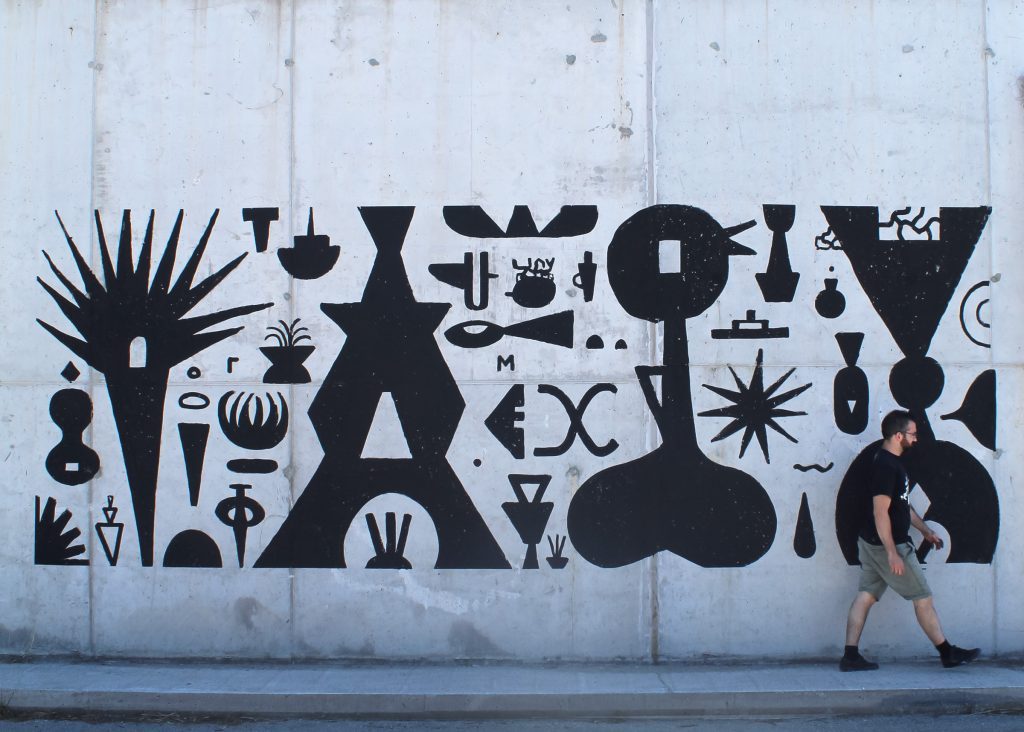
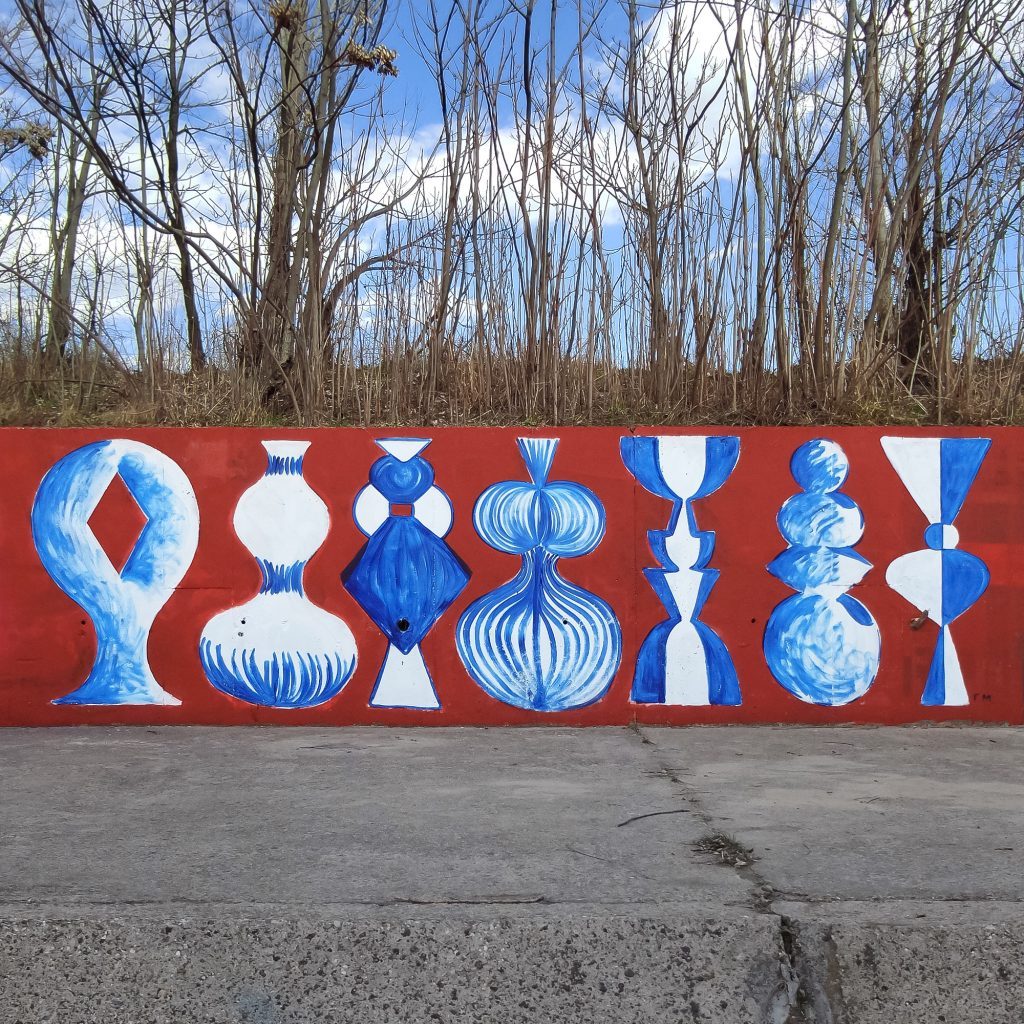
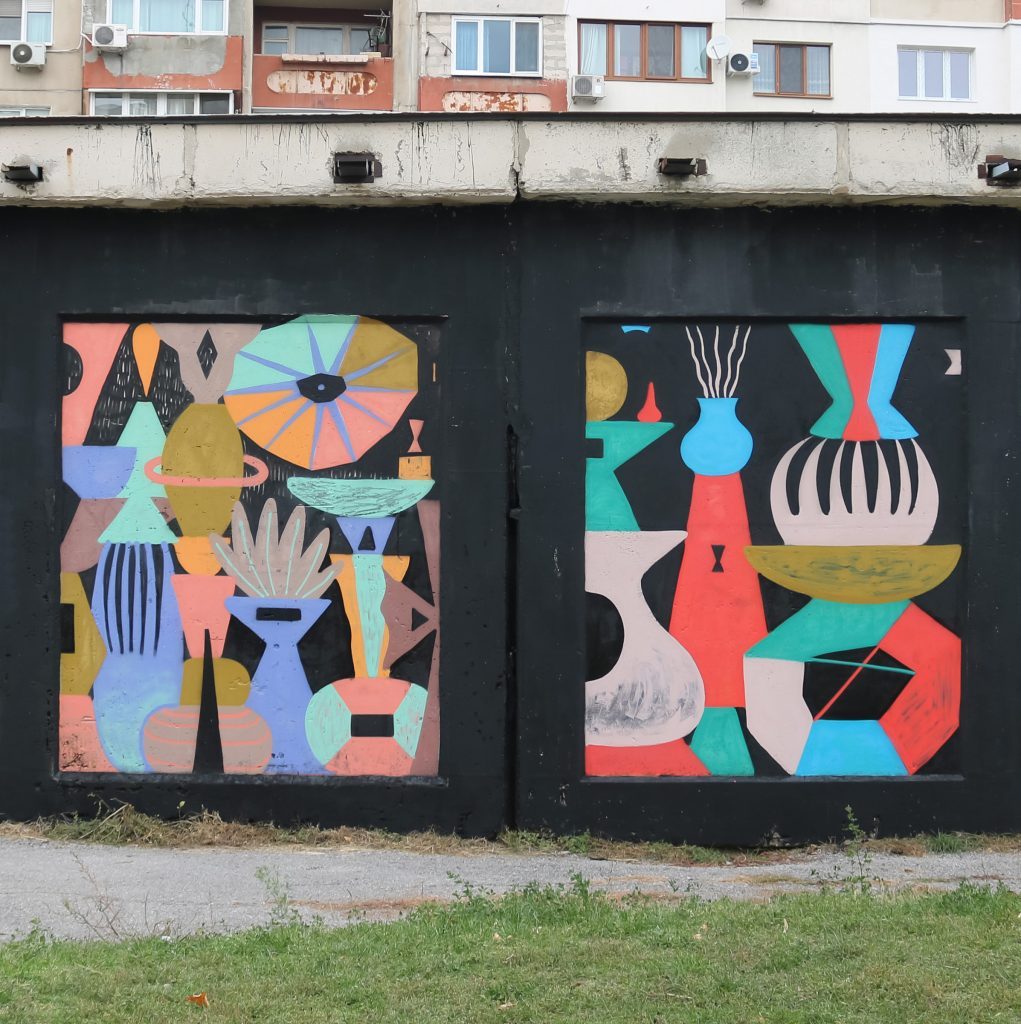
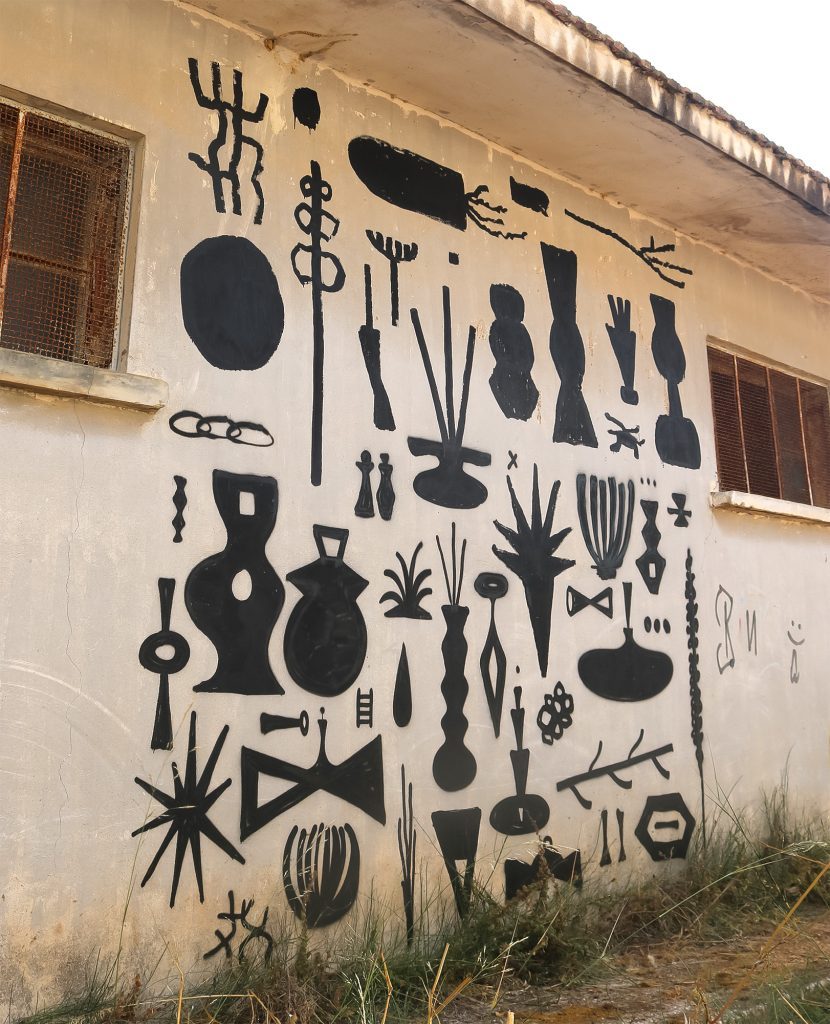
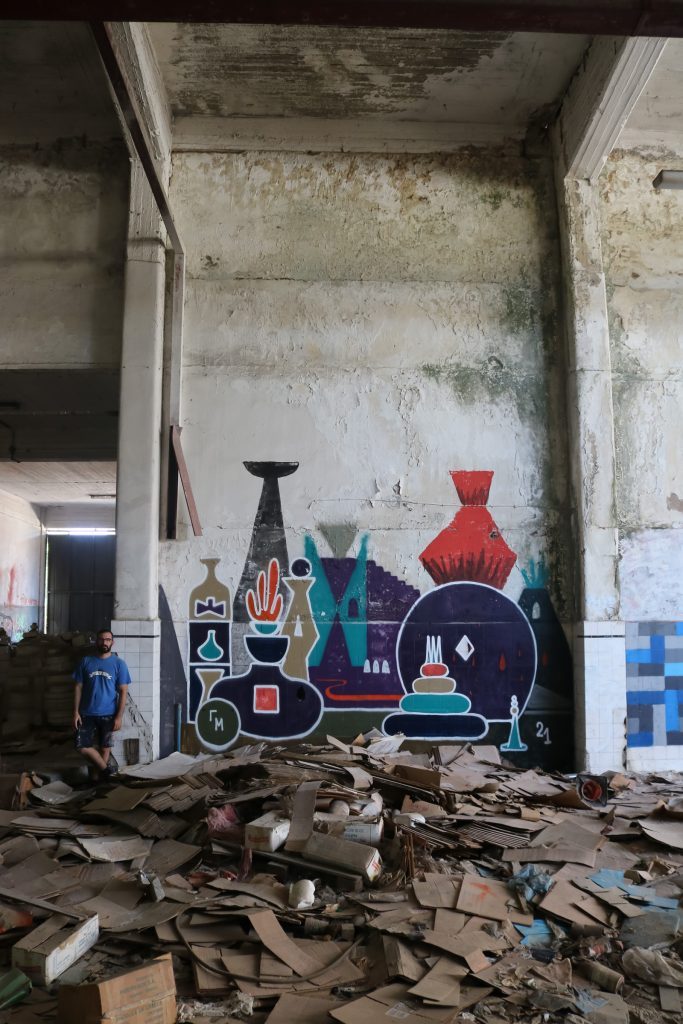
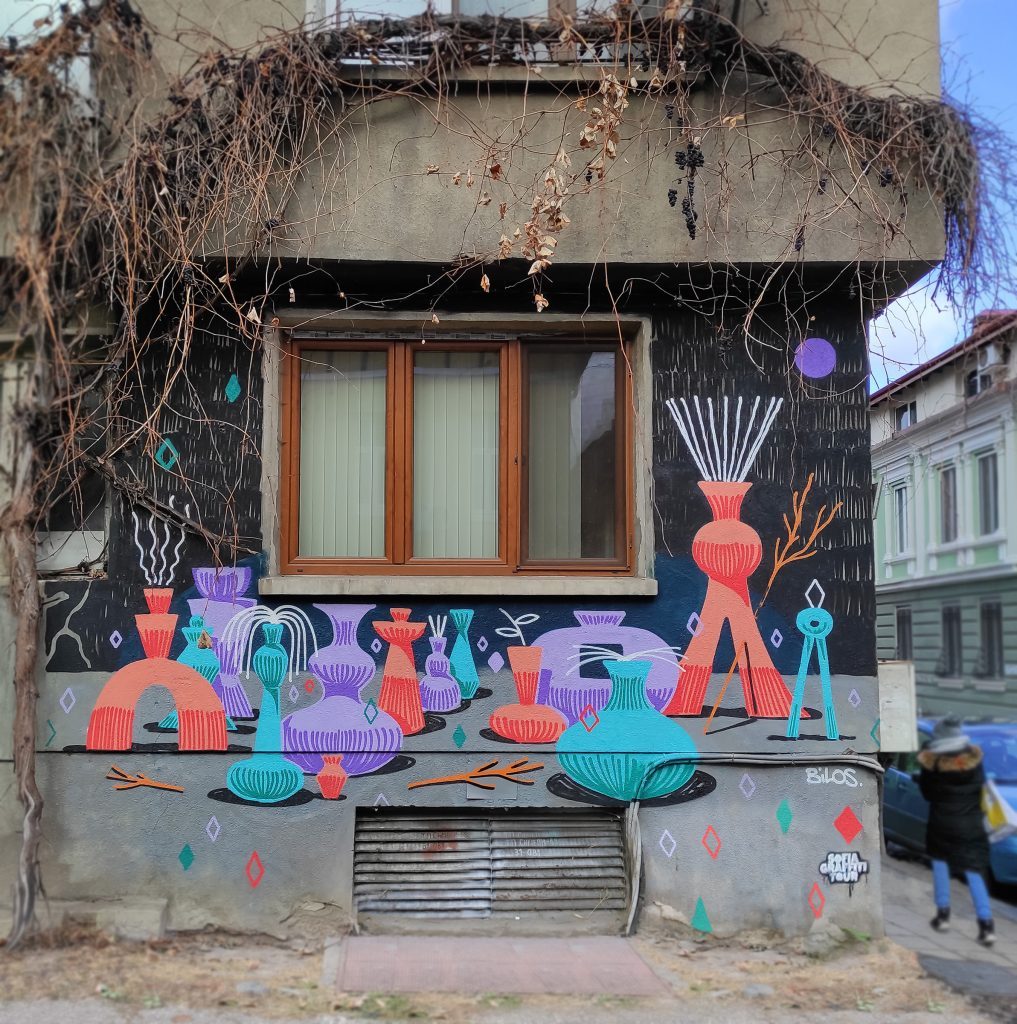
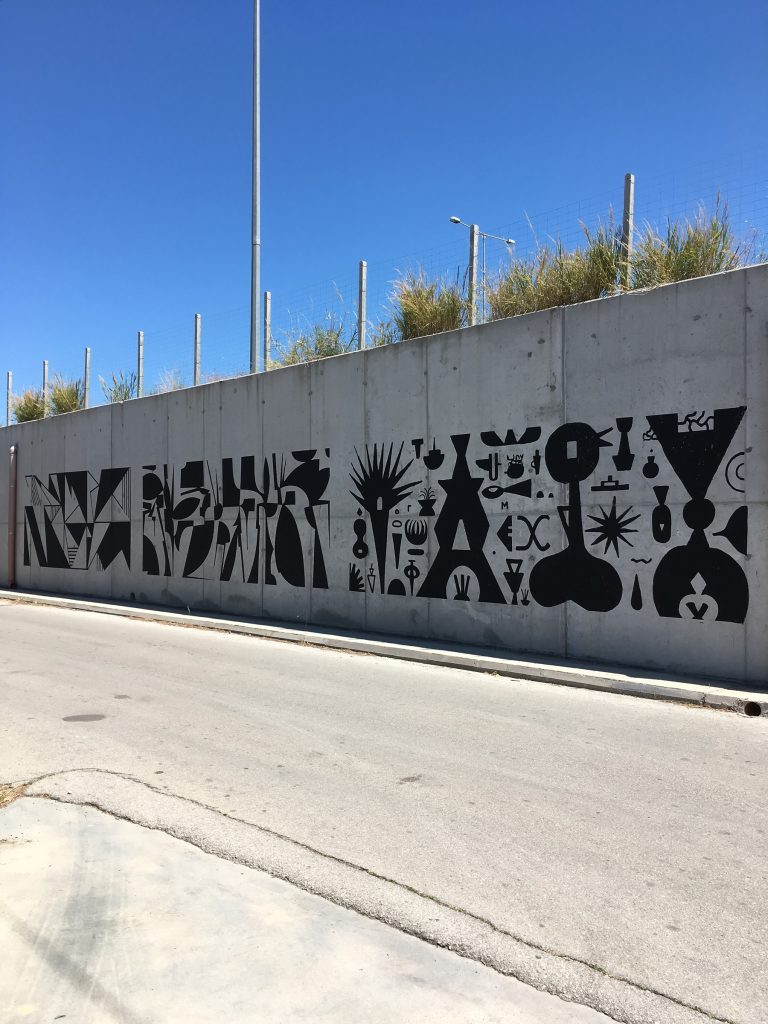
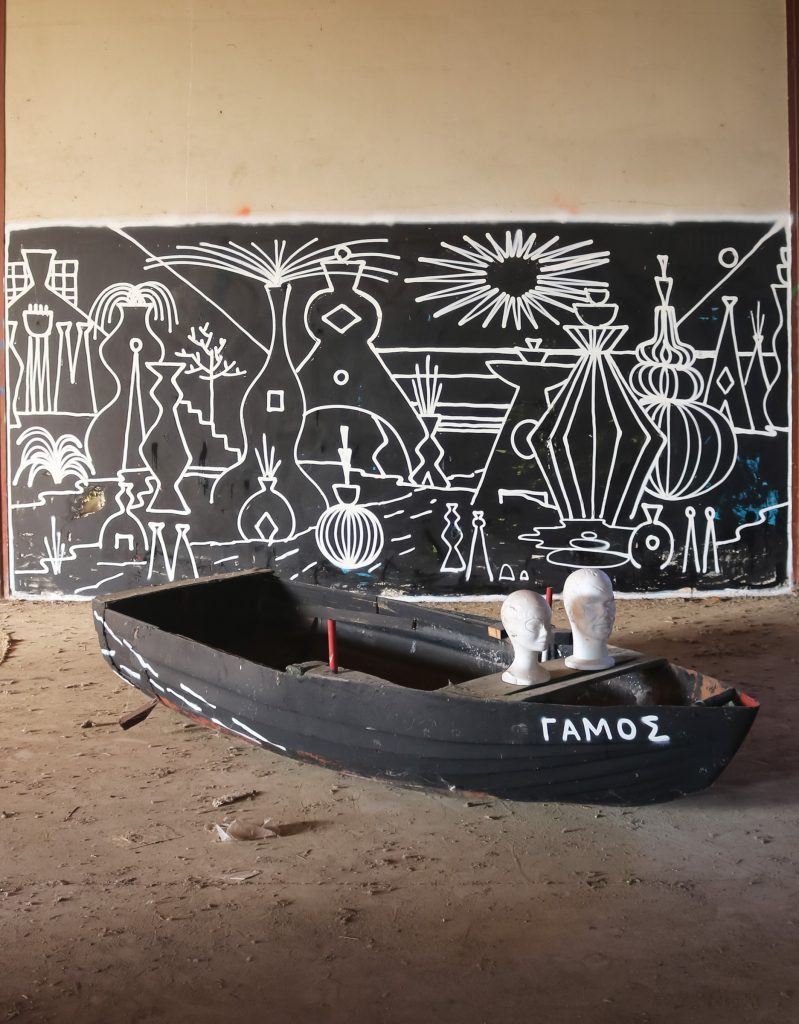
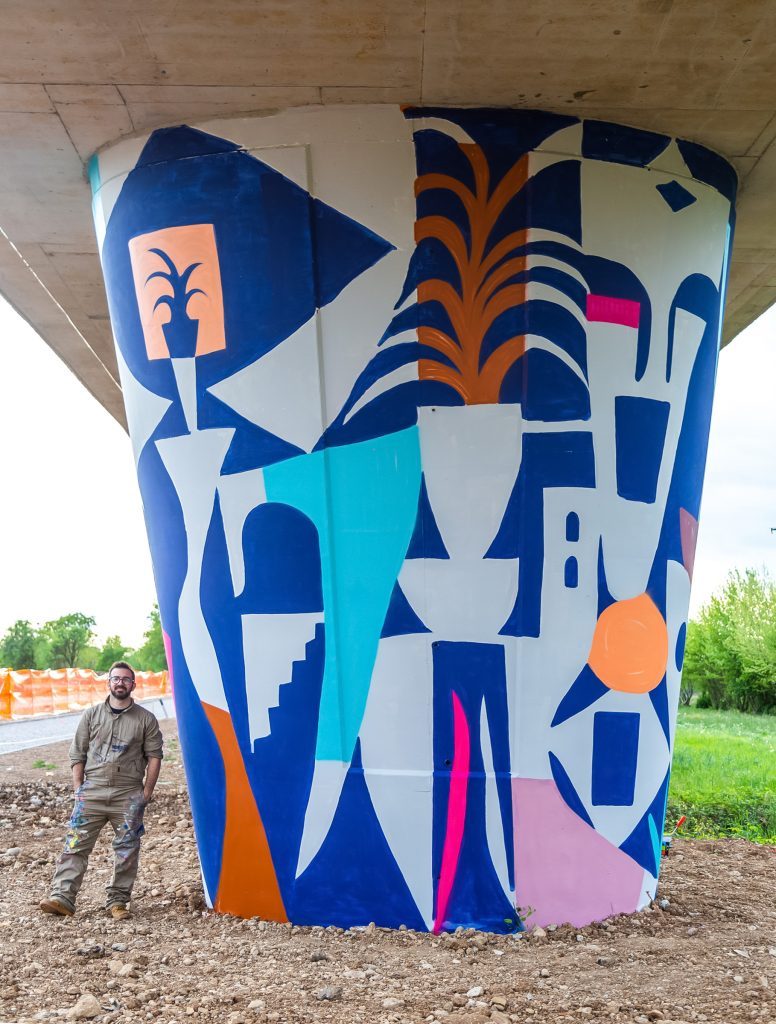
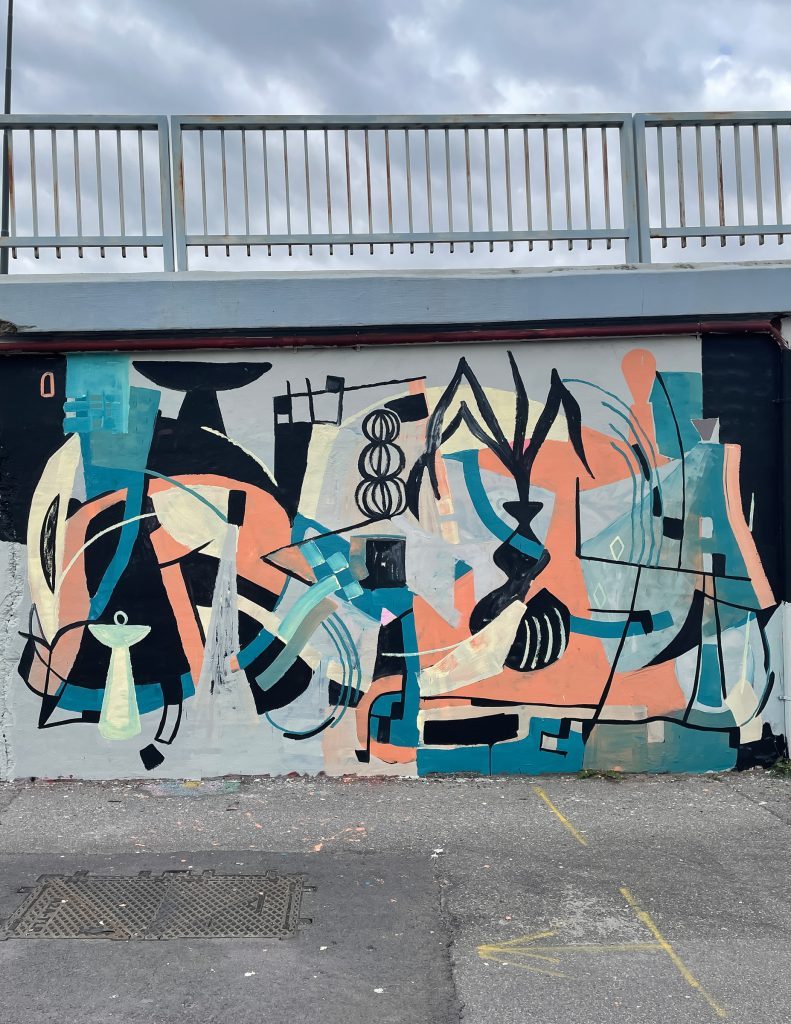

Working methods
Removing elements from his pieces also meant removing effects and too many colors. The eye can focus better on the form when one or two colors are used according to BILOS, who prefers cold tones over warm ones, because they feel more unusual to him. The color combination is very important to him, but most of the time the blue is always present. Depending on the mood he wants to transmit, more happy, more down, more attracting, he chooses different color palettes. When he started to remove elements, like second outlines, shadows and even the outline of the pieces, he reduced the colors as well. For him, it was important to see what it meant to focus on the essential, the shape, and to work more minimal, realizing that it was very difficult.
Working without a draft for a piece that he intends to work on, he just put ideas, single fonts, font combinations and shapes on a piece of paper while sketching. Sometimes, he uses objects that can be found in the environment of the wall, resulting in 3D compositions. Generally he improvises on a wall, using brushes, rollers, wall paint and spray paint, feeling free in the process, because the size is not limited on a wall, not like for his studio works on paper or canvas, that he creates with pens, brushes, spray paint and printing techniques.
BILOS likes to work under pressure, likes challenges and appreciates to learn from mistakes. In his recent pieces, he combined many elements he likes from different aspects of different phases of his work that are finally coming together. He is very attracted to abstraction and is still on an artistic journey, he says. And because he is an artist of the post-graffiti era, and as an observant, he is aware that the development of post-graffiti with its multiple influences, its various interesting stylistic forms, expressions and levels is very dynamic and still growing organically, and his own artistic work will certainly continue to develop in an exciting way and continue to surprise us.
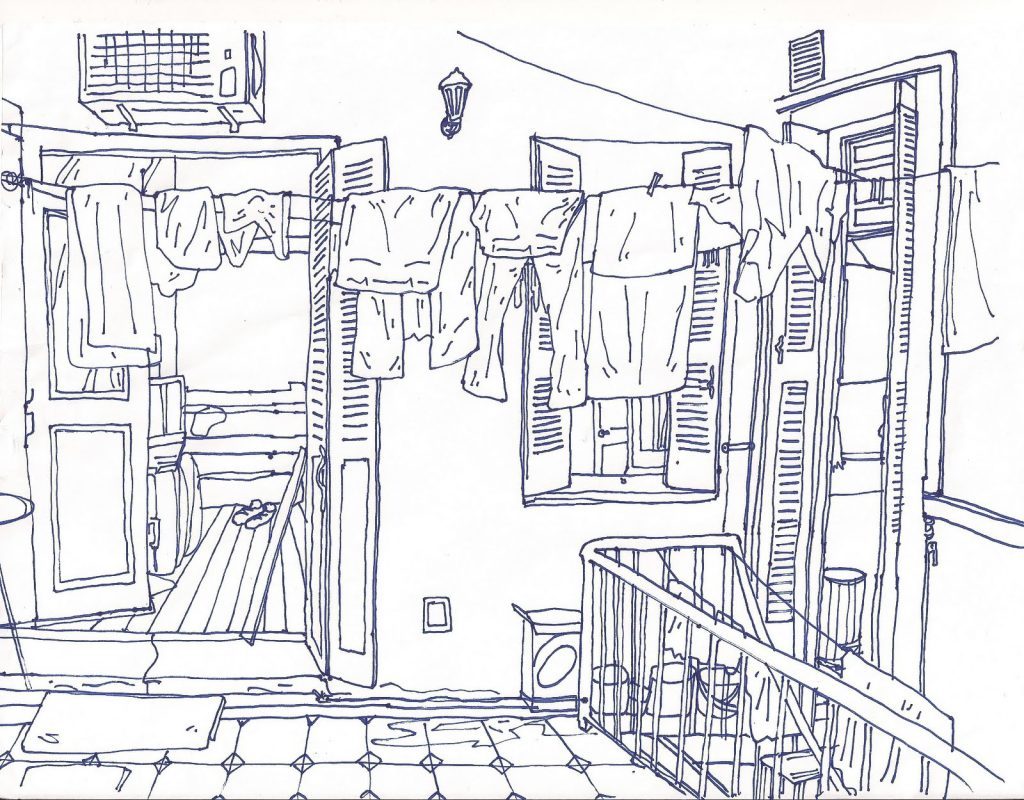
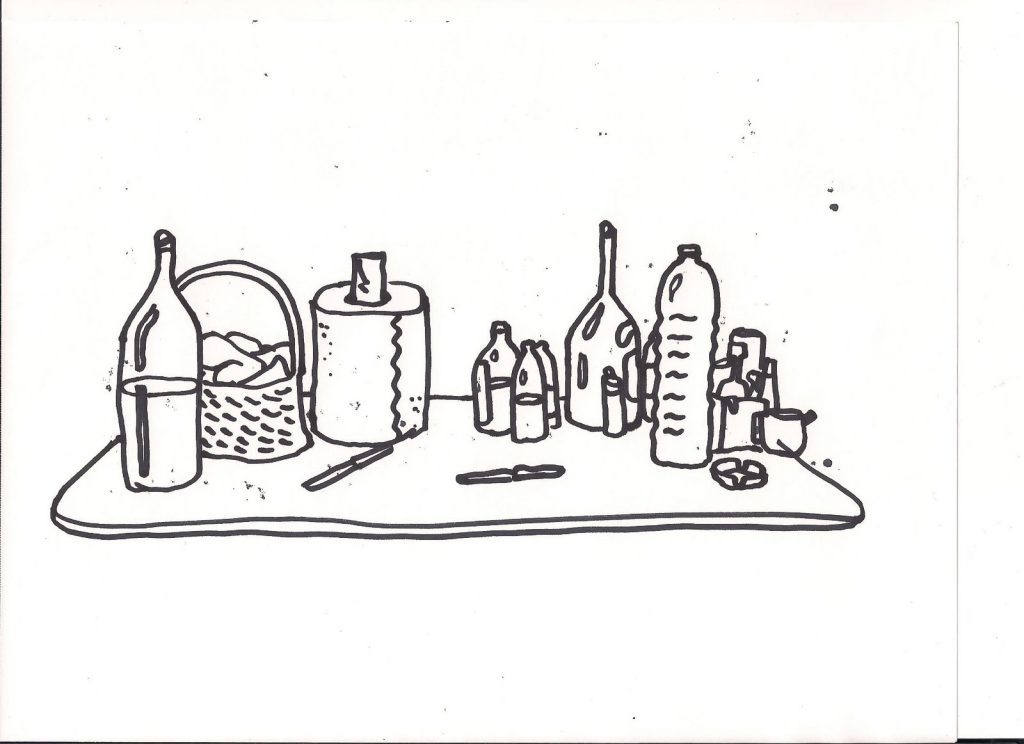
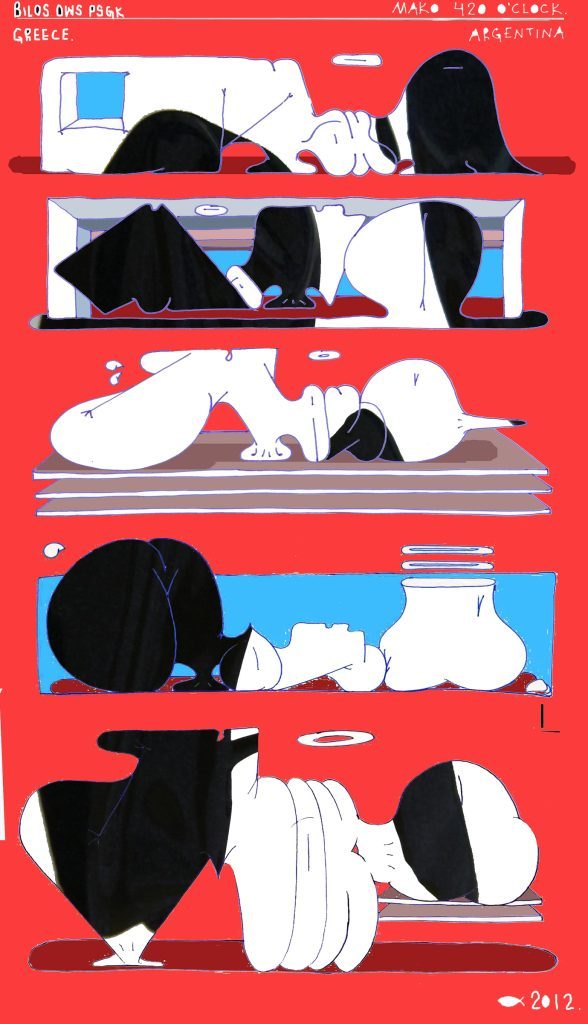
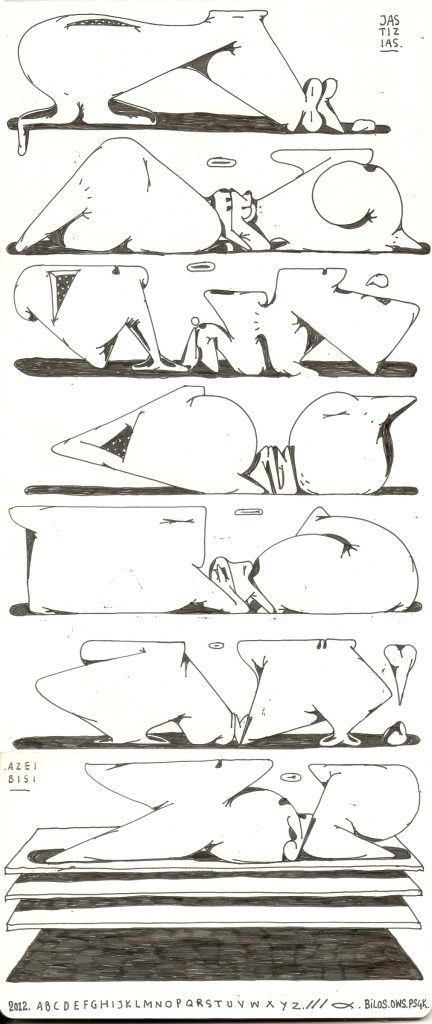
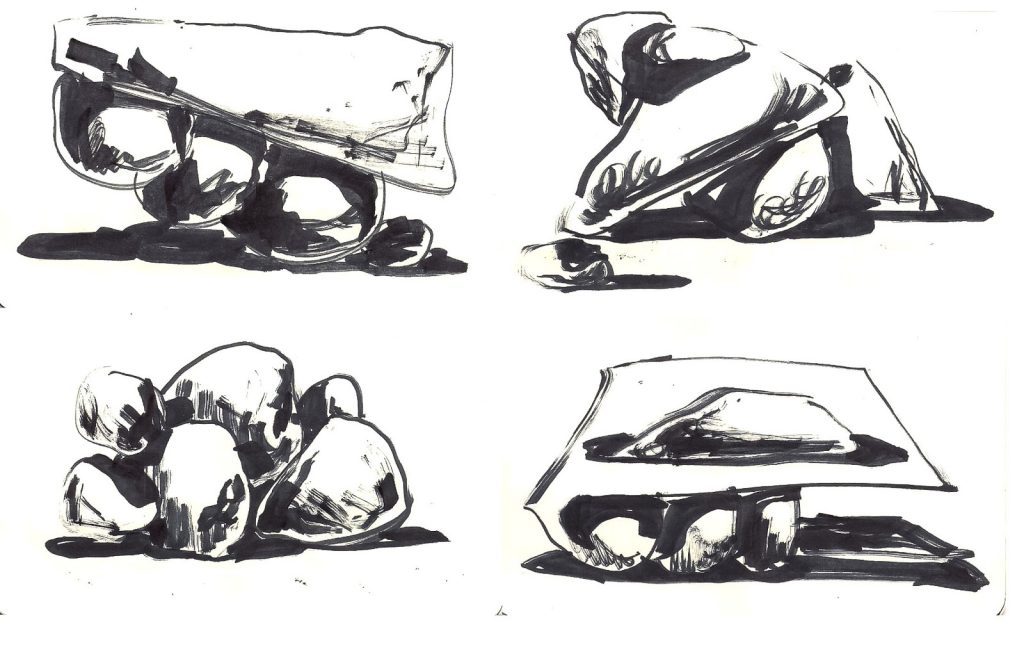
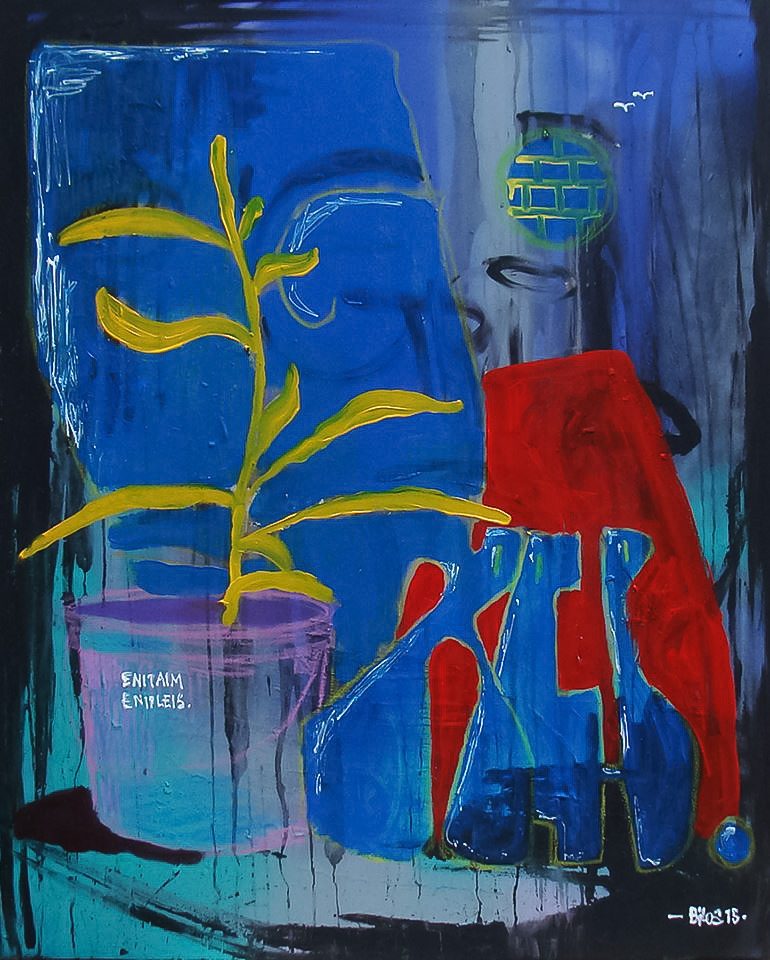
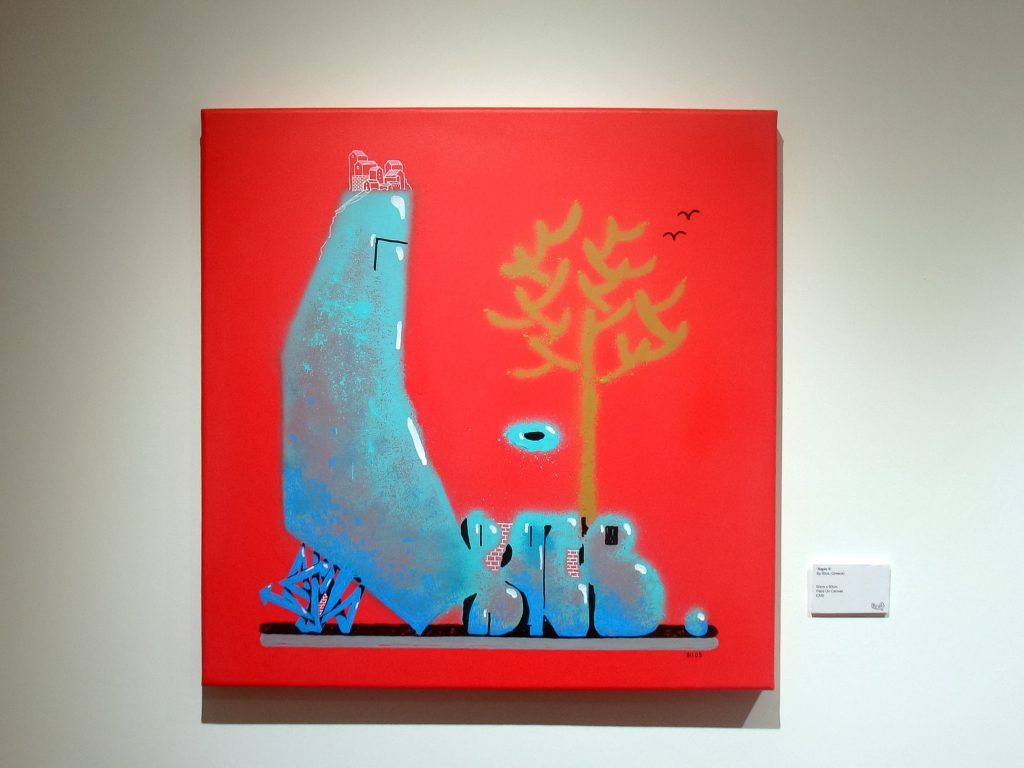
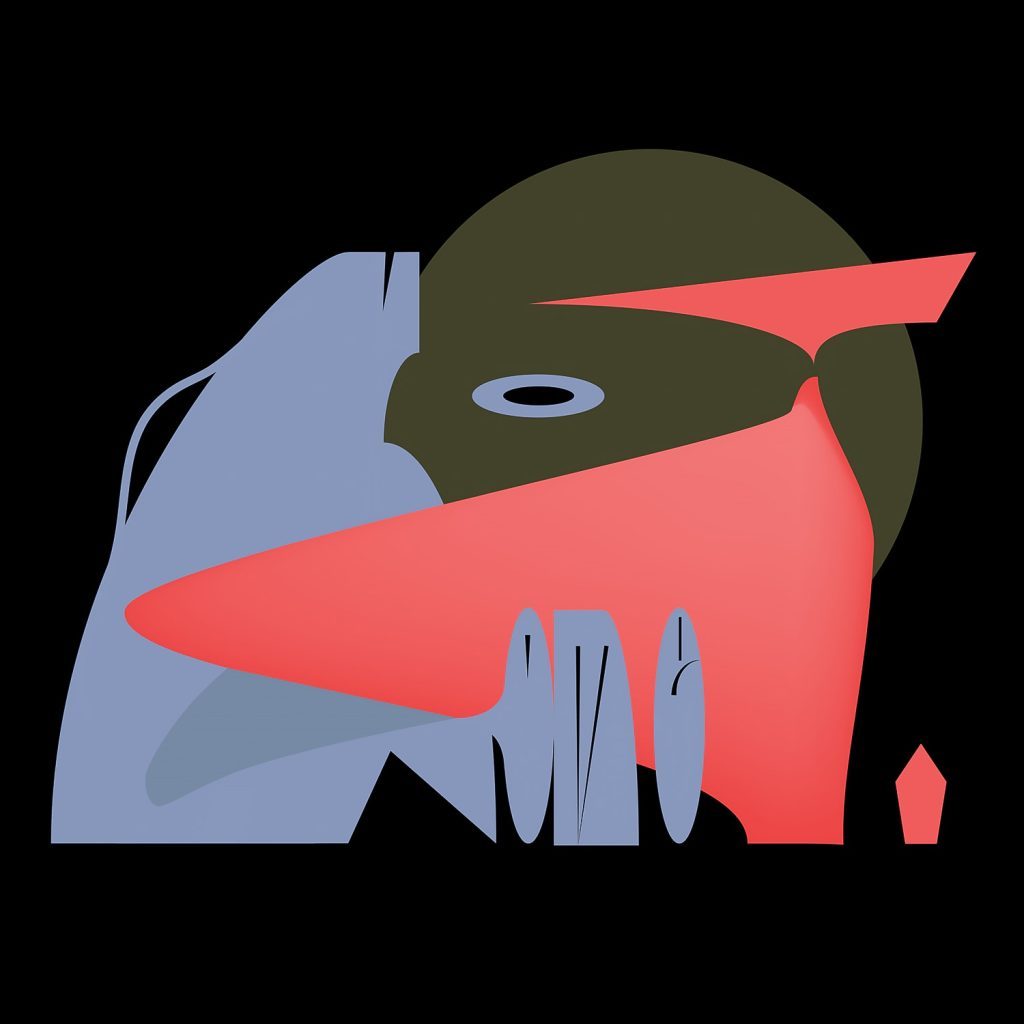
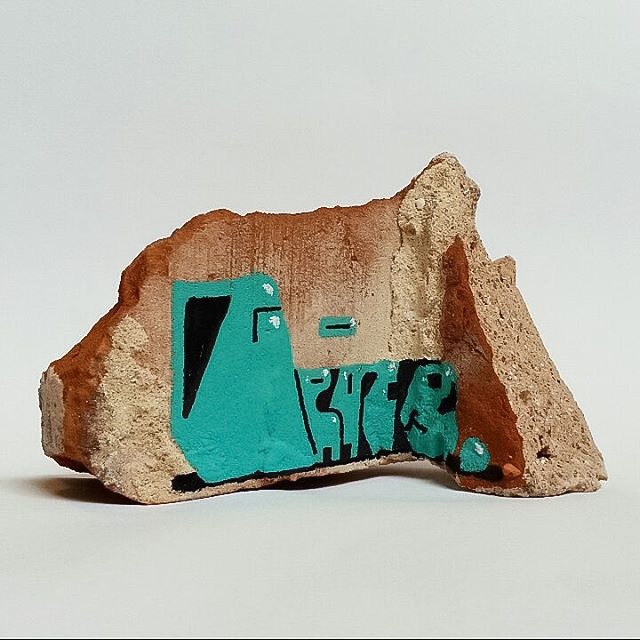
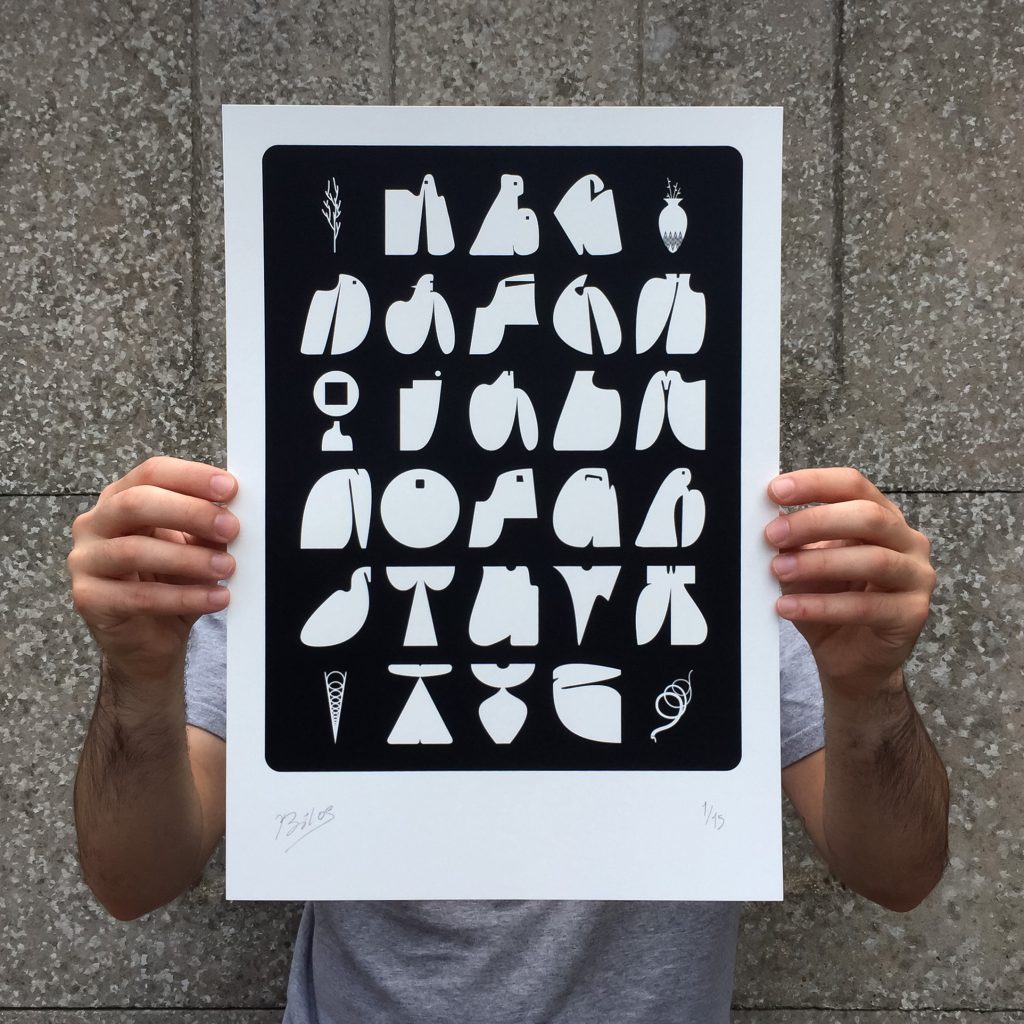
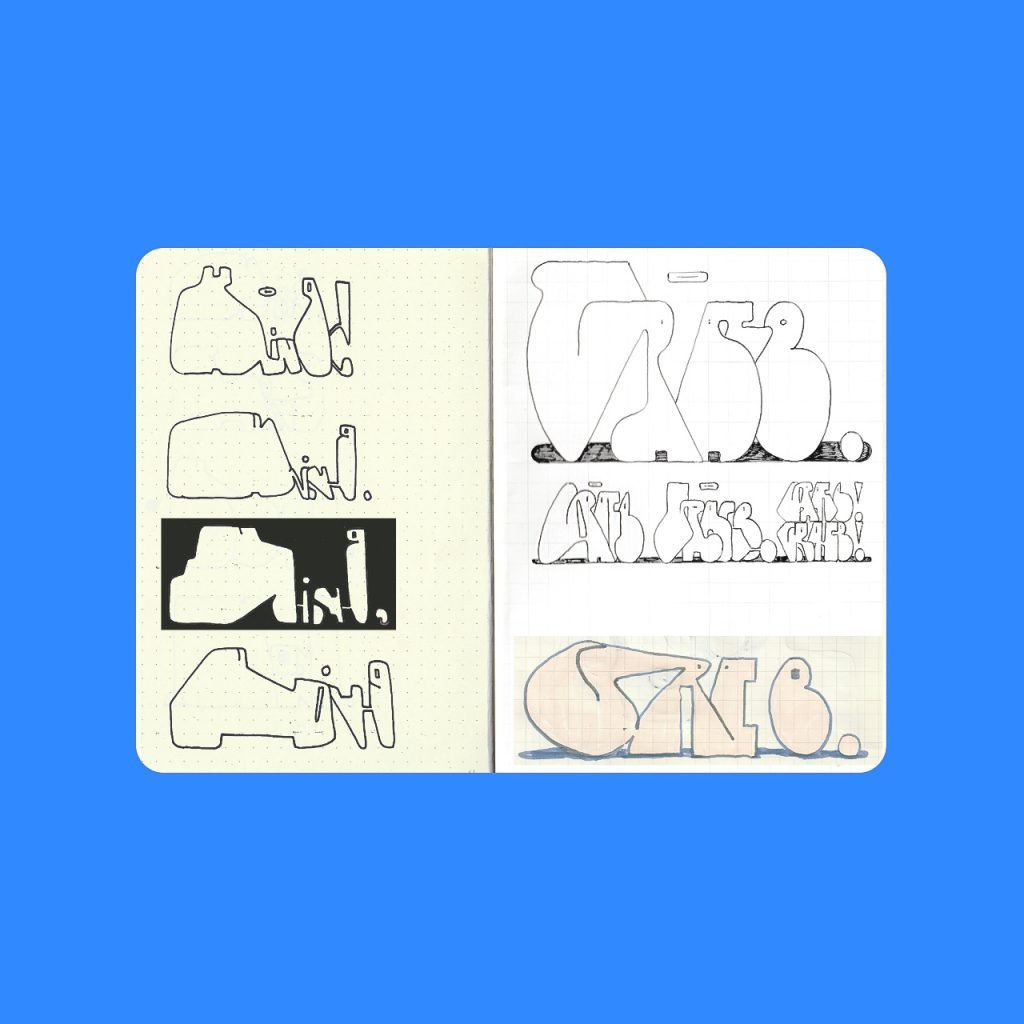
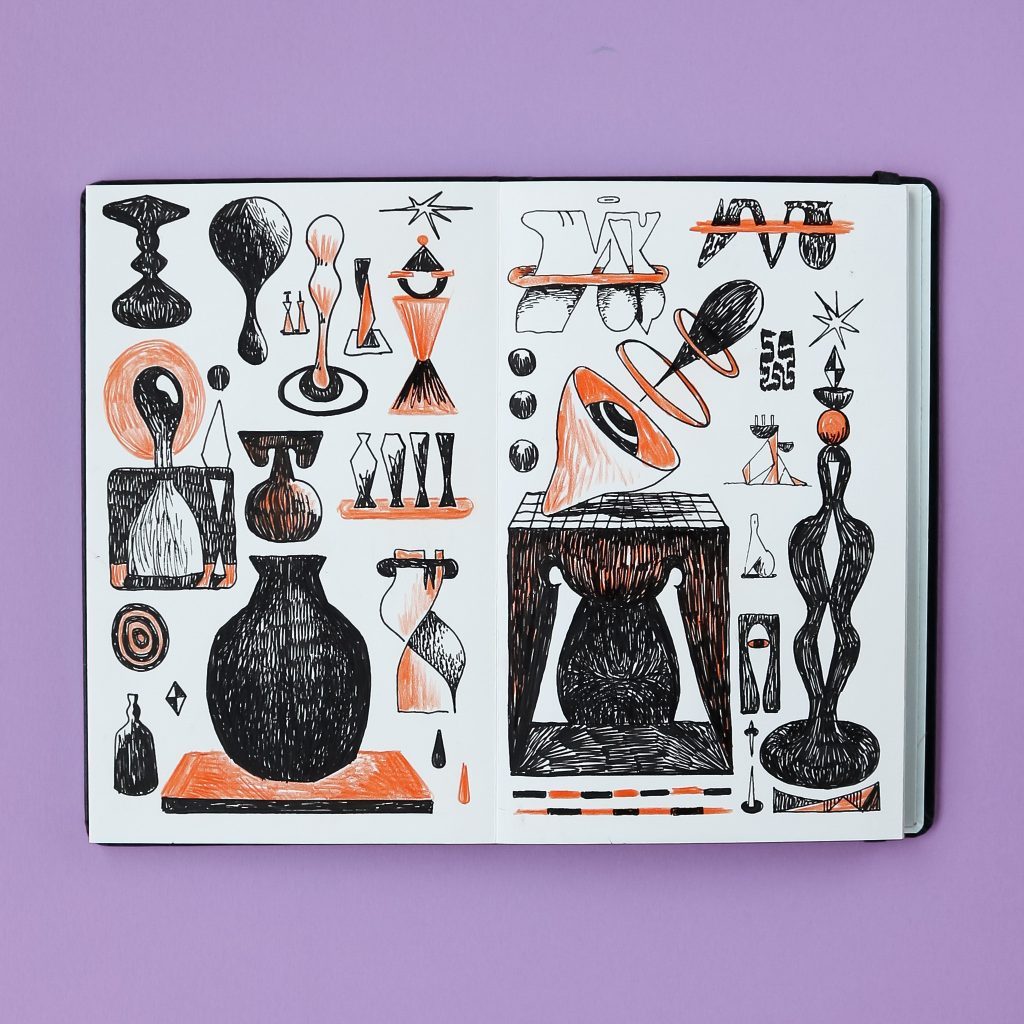
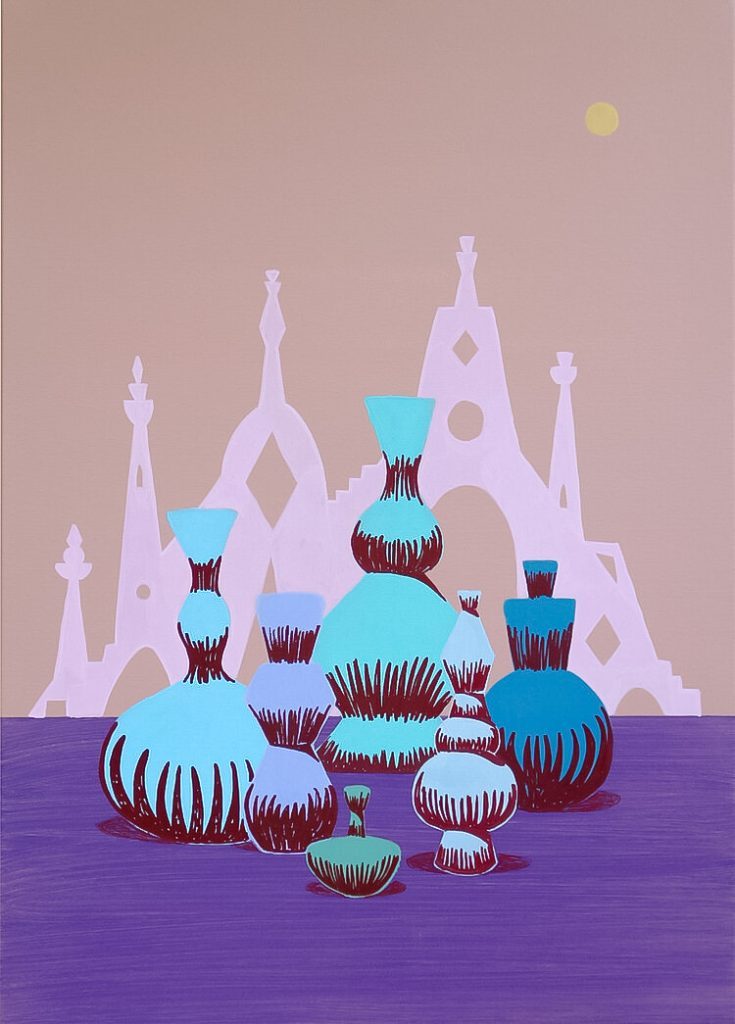
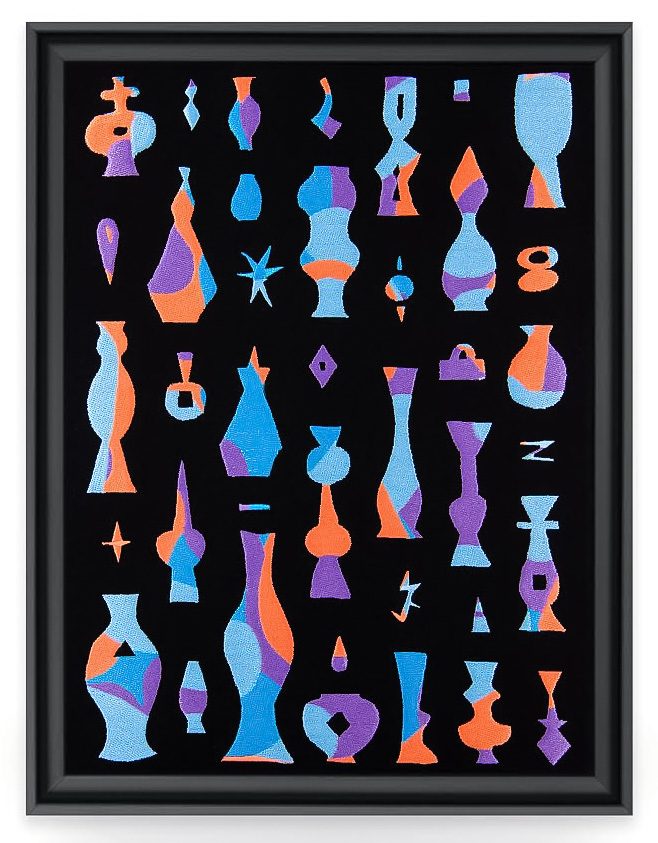
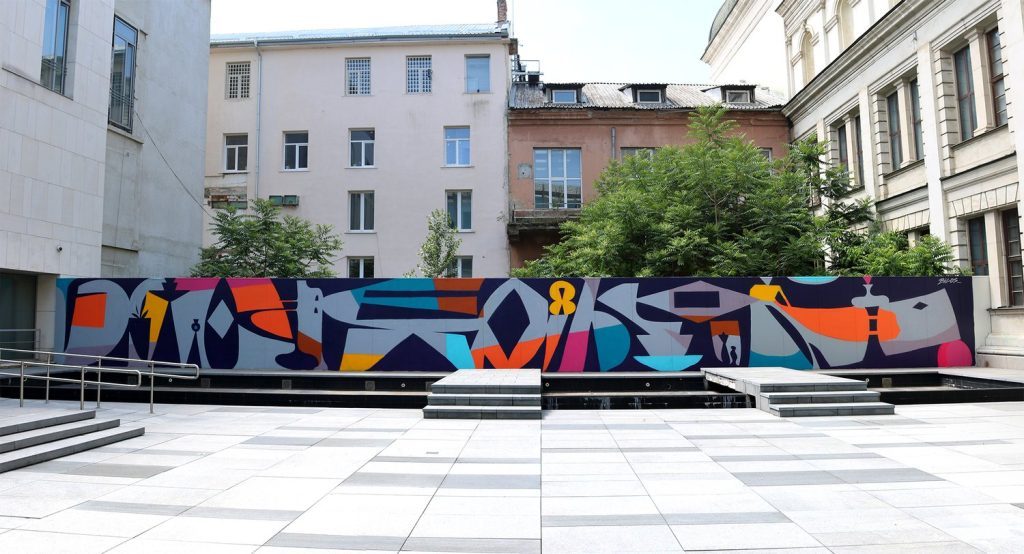
647 views
Categories
Tags:

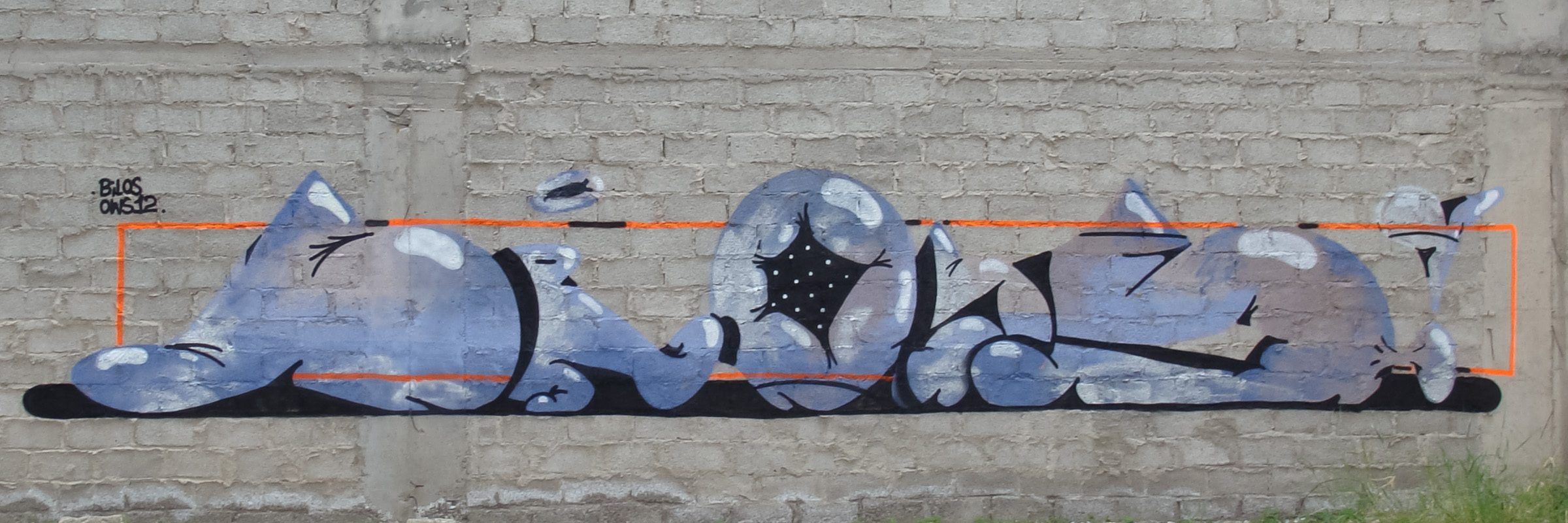
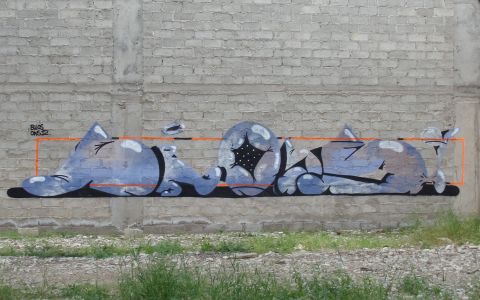
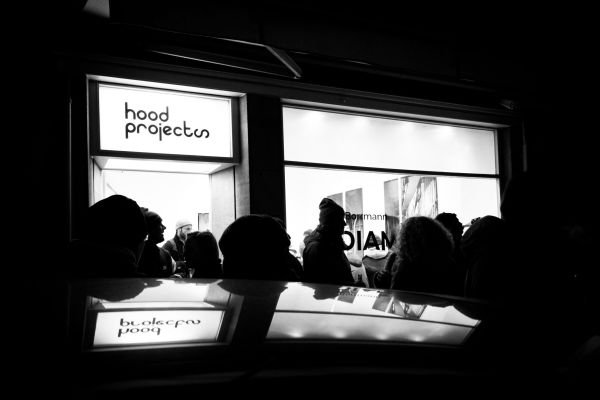
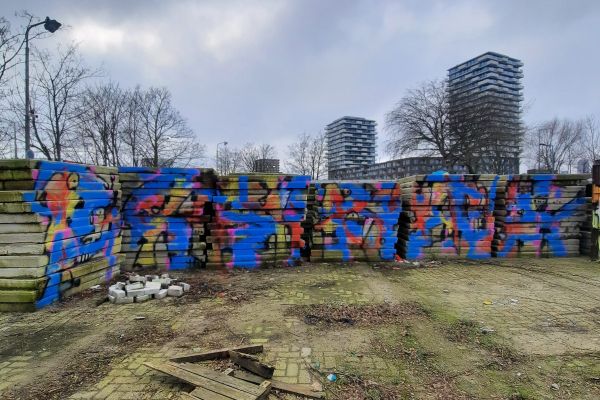
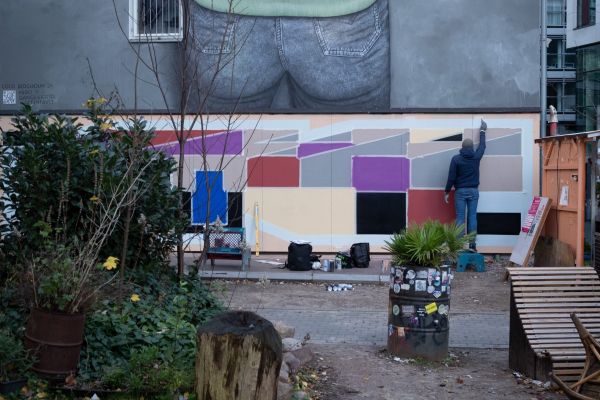
Leave a Reply